
Global Radiation monitoring system
radhoo, Mon Jul 08 2013, 03:45PMJan 09, 2014 Google maps integration
I've implemented a very basic radiation map on the server side. See it here:
[
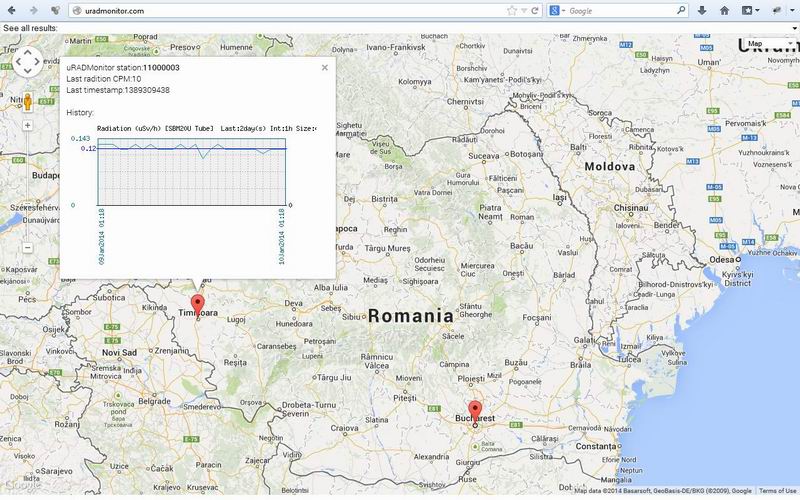
Nov 26, 2013 Model A for SI29BG ready
I completed a variant of the Model A for SI29BG geiger tubes, that will be distributed with the one using SBM-20U tubes. Next is the uRADMonitor model B, featuring an LCD screen to also allow offline use as a dosimeter, and a battery pack, but that's going to happen in 2014. Until then, I wish you all a Happy new year!
Here are a few pics with my recent work:
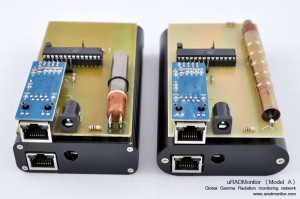
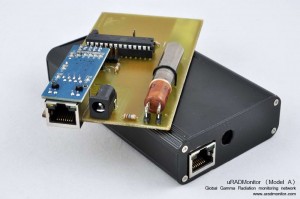
More pictures on

Oct 8, 2013 uRADMonitor Model A Ready
I now have completed the second unit, and have the first two units of the uRADMonitor unit Model A ready. The last hardware job was to complete the case lids to make space for the two connectors, the Ethernet and the DC plug. For the next units, a chinese manufacturer will take care of all the details so these two first units are entirely hand made (pcb+smd soldering+case power tools work). I am quite happy with the result and the robustness of this product so far.
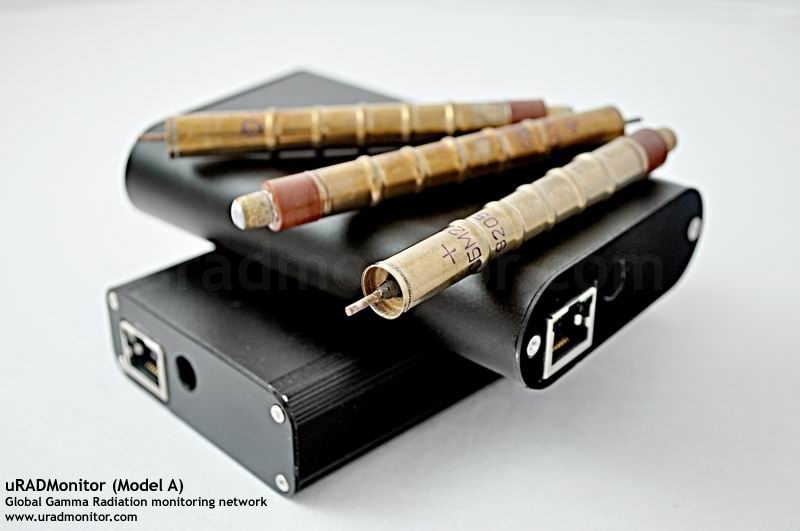
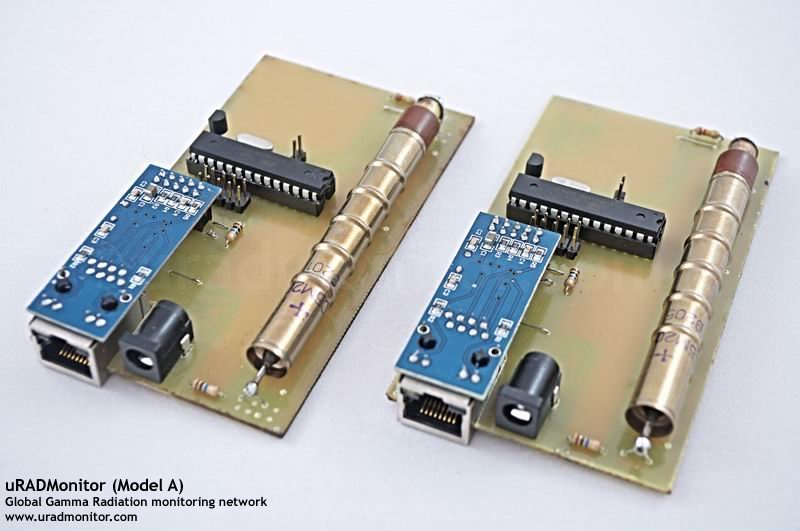
Progress also tracked here:

Jul 08, 2013 First post
The last few months, I've been very busy preparing a larger scale project. After the success of some of my previous titles, the Microspot soldering tool, the uRadMonitor radiation monitoring station or the Robo-dog companion, I decided to push my skills to a next level, and build a global distributed tool, to serve the community, for the benefit of us all.
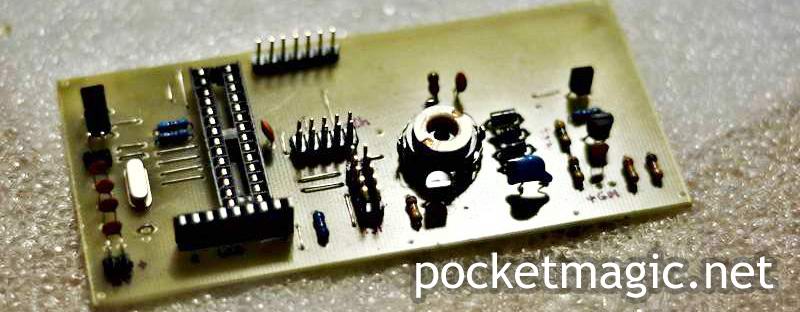
A project of this size can get expensive, both in terms of time and resources. While I can handle the first, for the latter I plan to use Kickstarter, and make my project known there. As you know, Kickstarter is a crowd project funding system, that helps fill the gap between vision and reality, making cool projects happen.
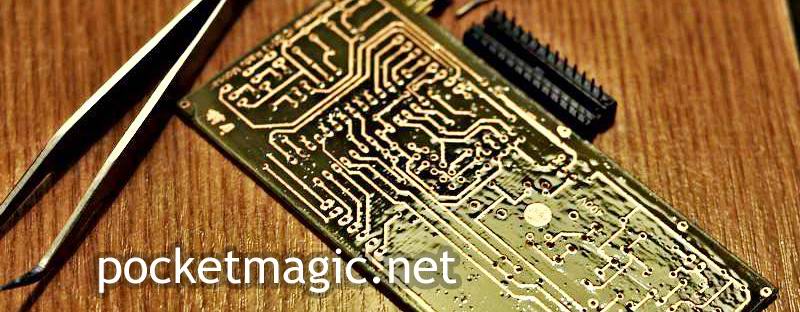
And this is all about a very cool project that I am working on. I am not disclosing the full story at this point, but for now, enjoy the pictures showing one of the prototype boards, and stay tuned for more details to follow!
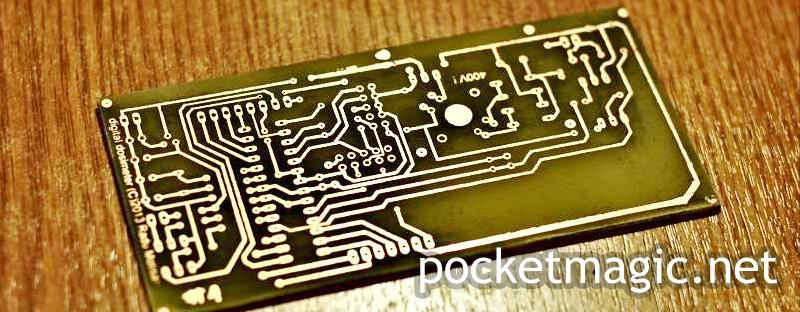
More to follow soon - I am curious what is your opinion on my initiative?
Re: Global Radiation monitoring system
Sulaiman, Mon Jul 08 2013, 05:57PM
I've no idea how you plan to imlement this, but for me to join I'd want;
. no need for my P.C. or latop to be permanently on ... e.g. cable or Wi-Fi to my internet hub/router
. low power consumption
. a weatherproof housing
Due to the cost of the enclosure I guess that the pcb should be as compact as possible
Since you want each node to be permanently operational the 'brains' should not be a PI or similar which would tempt folk to re-program it or use it for other purposes.
I'll add more random ideas later, if you keep the topic alive..
GOOD LUCK WITH THE PROJECT !
Sulaiman, Mon Jul 08 2013, 05:57PM
I've no idea how you plan to imlement this, but for me to join I'd want;
. no need for my P.C. or latop to be permanently on ... e.g. cable or Wi-Fi to my internet hub/router
. low power consumption
. a weatherproof housing
Due to the cost of the enclosure I guess that the pcb should be as compact as possible
Since you want each node to be permanently operational the 'brains' should not be a PI or similar which would tempt folk to re-program it or use it for other purposes.
I'll add more random ideas later, if you keep the topic alive..
GOOD LUCK WITH THE PROJECT !
Re: Global Radiation monitoring system
radhoo, Tue Jul 09 2013, 07:13AM
Sulaiman, thanks for the nice feedback!
The monitor exposes an Ethernet connector, and is DHCP capable, meaning all you need to do it to plug it to your internet router . The Ethernet cable and a 3V power supply is all it takes for it to work!
The power consumption is a few tens of miliamps at 3V, and plan to improve that even further.
Regarding the casing, you got a good point with the pcb size, another issue is that I won't be able to use large detector tubes such as SBM-19, STS-6 or SI-22 . My plan is to use a nice aluminum casing, not bigger than 11cm in length. This implies I'll be either using a smaller Geiger tube, or switch to PIN photodiode detectors (currently testing this as well).
These monitors will act as nodes, connected to a central server . The communication will be encrypted, to prevent tempering with the device or the data stream. The central server will also expose a webpage for user interaction and data visualization. Email alerts and notifications are also possible (I might be able to include SMS alerts too) - for dangerous amounts of radiation or for strange readings or variations.
Now here are a few issues where some community feedback would help:
- my first idea was to make this as a stationary device, in the nice aluminum case, suitable for mounting outside, including in rain/snow conditions. Then I thought what if this could be also used as a mobile detector, meaning the user takes it in his/her pocket for a detection session. This implies having a screen and a few buttons, that break the integrity of the case; What do you think: should I build two variants, one with a screen for indoors, and one with a compact case for use as monitoring station only? -or- should I make some kind of impermeable pouch for when the device is used outside?
- for mobile use, when a network connection cable is not available, my idea was to use a microSD external memory to log all the data, and when later connected to a network, this buffer would be sent to the server. But because we are talking about mapping radiation levels per geographic areas, knowing the location is a must . This can be done by tracking the IP (when connected to the internet) or by using a GPS module. The GPS Module would be the only option when using the device as a mobile detector. But let's not forget we have an aluminum casing, so what to do about the GPS signal? (One idea was to make a plastic cover window in the aluminum casing, and place the GPS beneath).
- should I monitor temperature, humidity , pressure and luminosity as I did with my original uRADMonitor project?
As a radiation detector element, my idea is to use a geiger tube, such as SBM-20 , SI-180G , SI-1 , STS-1 or SI-29BG. More sensitive tubes such as SBM-19, STS-6, SI-22 cannot be used because of their big sizes.
I might be using a PIN photodiode and save considerable boar space, components and time , if I am happy with the tests I'm currently caught into.
The first prototype was been finished yesterday, with extremely positive results. It is composed of the basic stuff: the microcontroller, the inverter and the LCD . Will be adding the other modules (gps, sdcard) soon and post some pictures.
More soon! Cheers!
radhoo, Tue Jul 09 2013, 07:13AM
Sulaiman, thanks for the nice feedback!
The monitor exposes an Ethernet connector, and is DHCP capable, meaning all you need to do it to plug it to your internet router . The Ethernet cable and a 3V power supply is all it takes for it to work!
The power consumption is a few tens of miliamps at 3V, and plan to improve that even further.
Regarding the casing, you got a good point with the pcb size, another issue is that I won't be able to use large detector tubes such as SBM-19, STS-6 or SI-22 . My plan is to use a nice aluminum casing, not bigger than 11cm in length. This implies I'll be either using a smaller Geiger tube, or switch to PIN photodiode detectors (currently testing this as well).
These monitors will act as nodes, connected to a central server . The communication will be encrypted, to prevent tempering with the device or the data stream. The central server will also expose a webpage for user interaction and data visualization. Email alerts and notifications are also possible (I might be able to include SMS alerts too) - for dangerous amounts of radiation or for strange readings or variations.
Now here are a few issues where some community feedback would help:
- my first idea was to make this as a stationary device, in the nice aluminum case, suitable for mounting outside, including in rain/snow conditions. Then I thought what if this could be also used as a mobile detector, meaning the user takes it in his/her pocket for a detection session. This implies having a screen and a few buttons, that break the integrity of the case; What do you think: should I build two variants, one with a screen for indoors, and one with a compact case for use as monitoring station only? -or- should I make some kind of impermeable pouch for when the device is used outside?
- for mobile use, when a network connection cable is not available, my idea was to use a microSD external memory to log all the data, and when later connected to a network, this buffer would be sent to the server. But because we are talking about mapping radiation levels per geographic areas, knowing the location is a must . This can be done by tracking the IP (when connected to the internet) or by using a GPS module. The GPS Module would be the only option when using the device as a mobile detector. But let's not forget we have an aluminum casing, so what to do about the GPS signal? (One idea was to make a plastic cover window in the aluminum casing, and place the GPS beneath).
- should I monitor temperature, humidity , pressure and luminosity as I did with my original uRADMonitor project?
As a radiation detector element, my idea is to use a geiger tube, such as SBM-20 , SI-180G , SI-1 , STS-1 or SI-29BG. More sensitive tubes such as SBM-19, STS-6, SI-22 cannot be used because of their big sizes.
I might be using a PIN photodiode and save considerable boar space, components and time , if I am happy with the tests I'm currently caught into.
The first prototype was been finished yesterday, with extremely positive results. It is composed of the basic stuff: the microcontroller, the inverter and the LCD . Will be adding the other modules (gps, sdcard) soon and post some pictures.
More soon! Cheers!
Re: Global Radiation monitoring system
Shrad, Tue Jul 09 2013, 07:44AM
I think the benefits of having a GPS module and other monitored values like temp and such would be a nice tradeoff if you use a PIN for detection
you can always design a breakout board with either PIN+environment or GEIGER+inverter so you can have a less sensitive but mobile version, and a more sensitive permanent mounting version, all with the same motherboard and firmware
a flash EEPROM of several megabytes shouldn't be hard to implement as an internal buffer, and a simple read-only virtual filesystem for accessing data in a micro webserver would be easy to achieve
Shrad, Tue Jul 09 2013, 07:44AM
I think the benefits of having a GPS module and other monitored values like temp and such would be a nice tradeoff if you use a PIN for detection
you can always design a breakout board with either PIN+environment or GEIGER+inverter so you can have a less sensitive but mobile version, and a more sensitive permanent mounting version, all with the same motherboard and firmware
a flash EEPROM of several megabytes shouldn't be hard to implement as an internal buffer, and a simple read-only virtual filesystem for accessing data in a micro webserver would be easy to achieve
Re: Global Radiation monitoring system
radhoo, Tue Jul 09 2013, 10:55AM
Sounds good.
Please, keep the feedback coming. I still have time to change the design.
What about the case for indoors/outdoors?
radhoo, Tue Jul 09 2013, 10:55AM
Sounds good.
Please, keep the feedback coming. I still have time to change the design.
What about the case for indoors/outdoors?
Re: Global Radiation monitoring system
Linas, Tue Jul 09 2013, 08:57PM
all parts should be smd.
go for MSP430 (cheaper)
Linas, Tue Jul 09 2013, 08:57PM
all parts should be smd.
go for MSP430 (cheaper)
Re: Global Radiation monitoring system
radhoo, Wed Jul 10 2013, 09:13AM
Hi Linas,
I'll try to go for smd, but for the MSP430 I'm afraid I don't have time to learn how to use it. For AVRs I have all the specs in place,
Maybe for another version.
radhoo, Wed Jul 10 2013, 09:13AM
Hi Linas,
I'll try to go for smd, but for the MSP430 I'm afraid I don't have time to learn how to use it. For AVRs I have all the specs in place,
Maybe for another version.
Re: Global Radiation monitoring system
radhoo, Thu Jul 11 2013, 11:35AM
Here is where I got so far:
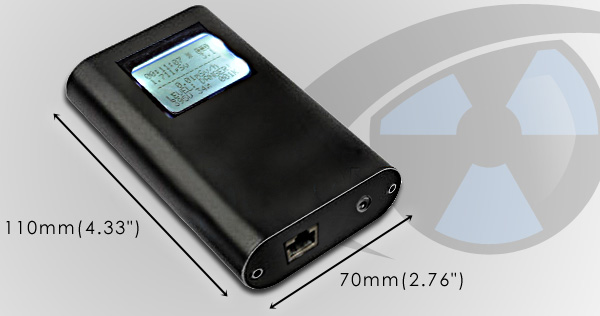
The next few weeks I plan to finish the final prototype and start my Kickstarter campaign where I'm counting on all the support I can get!
The idea behind this project is to help people gain access to radiation measurement devices but on a global scale, by providing the uRADMonitor devices that anyone can install simply by plugging in the internet router network cable and a DC power supply. The data is then centralized, and the server located at www.uradmonitor.com allows free access to the data collected. With a few clicks you'll be able to see the levels in your city, or any other place.
At this point the first prototype (3.3.2.100) is ready: the microcontroller board, the counter circuit, the 400V regulated inverter, the display (84x48 pixels, graphical display with backlight).
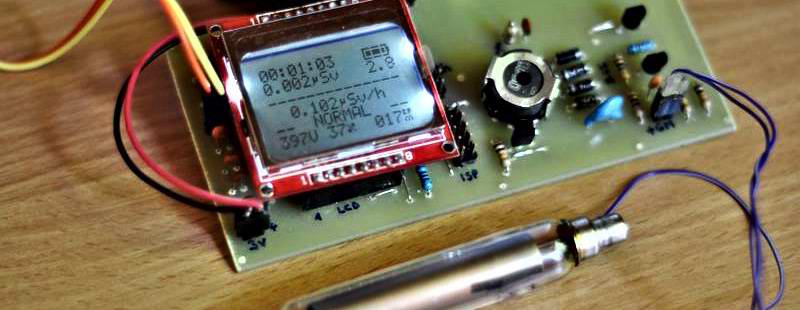
I wrote the software to take the maximum out of the 84x48 display: special characters have been added (defined with 0 and 1 like in the the old BASIC days) for micro symbol, CPM, radiation sign or battery icons. Printing text, there's a total space of 14x6 characters: first I show the internal time (hh:mm:ss), the battery level (4 indicators for charging, full battery, discharged and empty), the accumulated dose registered since the device was powered on (measured in micro,mili or Sieverts, depending on the value size), then there's the battery value in volts, under the battery charge symbol. The third line shows the equivalent dose (measured in micro,mili or Sieverts per hour, again, depending on value size, the software does the switch automatically), a text description of radition level with 4 states (LOW, NORMAL, HIGH, DANGER) set to <0.10uSv/h, <0.20uSv/h, <0.30uSv/h and more than 0.30uSv/h for danger indicator. Finally the last line shows Geiger tube voltage (regulated to a constant of 400V +-5V), the inverter duty cycle (aprox. 34%) and the CPM, or counts per minute (measured as CPM, Kilo CPM or MegaCPM, depending on value size).
More on this available on the project log:
The dedicated website:
Or on facebook:
Like if you like, or spread the word, as I plan to finish it in one month, and give it a go on Kickstarter. Should it be a success, we'll see this project come to life very soon.
radhoo, Thu Jul 11 2013, 11:35AM
Here is where I got so far:

The next few weeks I plan to finish the final prototype and start my Kickstarter campaign where I'm counting on all the support I can get!
The idea behind this project is to help people gain access to radiation measurement devices but on a global scale, by providing the uRADMonitor devices that anyone can install simply by plugging in the internet router network cable and a DC power supply. The data is then centralized, and the server located at www.uradmonitor.com allows free access to the data collected. With a few clicks you'll be able to see the levels in your city, or any other place.
At this point the first prototype (3.3.2.100) is ready: the microcontroller board, the counter circuit, the 400V regulated inverter, the display (84x48 pixels, graphical display with backlight).

I wrote the software to take the maximum out of the 84x48 display: special characters have been added (defined with 0 and 1 like in the the old BASIC days) for micro symbol, CPM, radiation sign or battery icons. Printing text, there's a total space of 14x6 characters: first I show the internal time (hh:mm:ss), the battery level (4 indicators for charging, full battery, discharged and empty), the accumulated dose registered since the device was powered on (measured in micro,mili or Sieverts, depending on the value size), then there's the battery value in volts, under the battery charge symbol. The third line shows the equivalent dose (measured in micro,mili or Sieverts per hour, again, depending on value size, the software does the switch automatically), a text description of radition level with 4 states (LOW, NORMAL, HIGH, DANGER) set to <0.10uSv/h, <0.20uSv/h, <0.30uSv/h and more than 0.30uSv/h for danger indicator. Finally the last line shows Geiger tube voltage (regulated to a constant of 400V +-5V), the inverter duty cycle (aprox. 34%) and the CPM, or counts per minute (measured as CPM, Kilo CPM or MegaCPM, depending on value size).
More on this available on the project log:

The dedicated website:

Or on facebook:

Like if you like, or spread the word, as I plan to finish it in one month, and give it a go on Kickstarter. Should it be a success, we'll see this project come to life very soon.
Re: Global Radiation monitoring system
Wastrel, Thu Jul 11 2013, 06:32PM
Really?
Wastrel, Thu Jul 11 2013, 06:32PM
radhoo wrote ...
... and more than 0.30uSv/h for danger indicator...
... and more than 0.30uSv/h for danger indicator...
Really?
Re: Global Radiation monitoring system
tobias, Thu Jul 11 2013, 11:44PM
You can always add the GPS footprint on the board and have the option of soldering it or not..
With GPS no time adjusting is needed. Why would you need buttons for a 'mobile' version? If it has battery, it is logging.
If you plan on having backup logging why not to add backup power? Lipo charger ICs are easy to deal with. And it would work ok without a battery as well.
Also, I would think it is nice to monitor temperature as well.
Can you make it water/dust proof if not using humidity/pressure sensor? That would be a nice trade-of.
For the outside-mount case. Get one with nice mounting tabs =)
tobias, Thu Jul 11 2013, 11:44PM
You can always add the GPS footprint on the board and have the option of soldering it or not..
With GPS no time adjusting is needed. Why would you need buttons for a 'mobile' version? If it has battery, it is logging.
If you plan on having backup logging why not to add backup power? Lipo charger ICs are easy to deal with. And it would work ok without a battery as well.
Also, I would think it is nice to monitor temperature as well.
Can you make it water/dust proof if not using humidity/pressure sensor? That would be a nice trade-of.
For the outside-mount case. Get one with nice mounting tabs =)
Re: Global Radiation monitoring system
macona, Sat Jul 13 2013, 05:44AM
I would not use a 0 or 1 as an indicator. Use something more well know like a radio button (Circle for off, circle with dot in the middle for on). When using a display with a lot of numerical data having status displayed as numbers is kind of bad UI design.
Why not use an OLED instead of a backlight? Or try one of the Sharp memory LCDs. The use an incredibly small amount of power to run.
But for me I cant really see the point of the whole thing. It just gives people data about something they dont understand and get scared.
macona, Sat Jul 13 2013, 05:44AM
I would not use a 0 or 1 as an indicator. Use something more well know like a radio button (Circle for off, circle with dot in the middle for on). When using a display with a lot of numerical data having status displayed as numbers is kind of bad UI design.
Why not use an OLED instead of a backlight? Or try one of the Sharp memory LCDs. The use an incredibly small amount of power to run.
But for me I cant really see the point of the whole thing. It just gives people data about something they dont understand and get scared.
Re: Global Radiation monitoring system
radhoo, Sat Jul 13 2013, 09:40AM
@tobias, buttons are needed to setup the dosimeter alarm, eg. when the measured dose gets higher than a given threshold. This threshold comes with a defautl value, but must be changeable by the user. Also if you look at the display picture above, you'll see the content is almost entirely used by the Geiger indications only. Let's not forget about the other functionality like the additional sensors, or the GPS data. I might want to build charts for the various readings. The user will need some kind of input to browse through all of that... and a minimalistic software menu.
The external power backup is a good idea. Since this also works as a data logger, I'll see the final power consumption and decide on how to prolong its power source autonomy.
It should be dust/waterproof and for mounting externally there will be some addon tabs.
@macona, what do you mean by 0 and 1 indicator? The LCD I chose is already a low power lcd, with the backlight assured by 4 side leds.
Last days I was thinking about the direction the entire project is heading. Initially I wanted to make this an exclusive monitor, using high sensitivity tubes such as SBM-19 or SI-22 . Deciding to make it portable implied reducing size, so instead of the large tubes I went for the SBM-20. Not as sensitive but considerably smaller.
I'd like some feedback on this: was it the right choice? Is the reduced size a compulsory feature for a portable dosimeter, trading the SBM-19 for the SBM-20?
Here's a video showing some very good performance when measuring a Ra226 source contained in a 1b24 tube:
radhoo, Sat Jul 13 2013, 09:40AM
@tobias, buttons are needed to setup the dosimeter alarm, eg. when the measured dose gets higher than a given threshold. This threshold comes with a defautl value, but must be changeable by the user. Also if you look at the display picture above, you'll see the content is almost entirely used by the Geiger indications only. Let's not forget about the other functionality like the additional sensors, or the GPS data. I might want to build charts for the various readings. The user will need some kind of input to browse through all of that... and a minimalistic software menu.
The external power backup is a good idea. Since this also works as a data logger, I'll see the final power consumption and decide on how to prolong its power source autonomy.
It should be dust/waterproof and for mounting externally there will be some addon tabs.
@macona, what do you mean by 0 and 1 indicator? The LCD I chose is already a low power lcd, with the backlight assured by 4 side leds.
Last days I was thinking about the direction the entire project is heading. Initially I wanted to make this an exclusive monitor, using high sensitivity tubes such as SBM-19 or SI-22 . Deciding to make it portable implied reducing size, so instead of the large tubes I went for the SBM-20. Not as sensitive but considerably smaller.
I'd like some feedback on this: was it the right choice? Is the reduced size a compulsory feature for a portable dosimeter, trading the SBM-19 for the SBM-20?
Here's a video showing some very good performance when measuring a Ra226 source contained in a 1b24 tube:
Re: Global Radiation monitoring system
tobias, Sat Jul 13 2013, 07:49PM
Radhoo
I see more use on a 'mount outside my home/apt and forget' type of device. First of all, by connecting all in a network you want lots of data, 24/7, from devices all over the world. Best case scenario, multiple stations at the same city so you can corroborate data.
After you have that going, mobile devices will gain more importance. At least is what I think, as by the nature a mobile one will not be logging continuously.
Here is my list of ideas for the device:
1- No screen, no buttons, no HMI whatsoever. All to be done by remote access. On a browser or PC/android software. To have the alerts on my cell would be awesome!
2- Only two ports. A RJ45 and a USB. The RJ45 for data, USB for power and/or firmware upload. Multiple uCs today support usb bootloaders. And if something goes wrong you can always open the box up and go ISP.
3- A embedded 3,7V Lipo Charger to keep a small battery ready for power disruptions.
4- Enough memory to fill out when loosing connectivity.
5- Upload to a central server or something were you can se data not only from your node, but all the ones around you
6- A GPS would further reduce the HMI need. No time or location adjustment needed.
7- A vibration sensor would be nice =) Earthquakes, somebody hehe
If you do go with mobile, put a bluetooth module so you can configure it from the smartphone. It will save space, and maybe money depending on the cost of that display you have.
tobias, Sat Jul 13 2013, 07:49PM
Radhoo
I see more use on a 'mount outside my home/apt and forget' type of device. First of all, by connecting all in a network you want lots of data, 24/7, from devices all over the world. Best case scenario, multiple stations at the same city so you can corroborate data.
After you have that going, mobile devices will gain more importance. At least is what I think, as by the nature a mobile one will not be logging continuously.
Here is my list of ideas for the device:
1- No screen, no buttons, no HMI whatsoever. All to be done by remote access. On a browser or PC/android software. To have the alerts on my cell would be awesome!
2- Only two ports. A RJ45 and a USB. The RJ45 for data, USB for power and/or firmware upload. Multiple uCs today support usb bootloaders. And if something goes wrong you can always open the box up and go ISP.
3- A embedded 3,7V Lipo Charger to keep a small battery ready for power disruptions.
4- Enough memory to fill out when loosing connectivity.
5- Upload to a central server or something were you can se data not only from your node, but all the ones around you
6- A GPS would further reduce the HMI need. No time or location adjustment needed.
7- A vibration sensor would be nice =) Earthquakes, somebody hehe
If you do go with mobile, put a bluetooth module so you can configure it from the smartphone. It will save space, and maybe money depending on the cost of that display you have.
Re: Global Radiation monitoring system
macona, Sun Jul 14 2013, 07:18AM
Ehh, forget it. I misunderstood what you said in an earlier post.
You might consider bluetooth instead of a RJ45 or at least an option. Then you can just upload to a smart phone and to a server of your choice. You could also work with the guy who wrote Geiger Bot on the iphone and get it to work as an input device for that. Geiger Bot supports bluetooth audio so you could send a raw bluetooth audio stream to the phone and let it do the heavy lifting.
macona, Sun Jul 14 2013, 07:18AM
radhoo wrote ...
@macona, what do you mean by 0 and 1 indicator? The LCD I chose is already a low power lcd, with the backlight assured by 4 side leds.
@macona, what do you mean by 0 and 1 indicator? The LCD I chose is already a low power lcd, with the backlight assured by 4 side leds.
Ehh, forget it. I misunderstood what you said in an earlier post.
You might consider bluetooth instead of a RJ45 or at least an option. Then you can just upload to a smart phone and to a server of your choice. You could also work with the guy who wrote Geiger Bot on the iphone and get it to work as an input device for that. Geiger Bot supports bluetooth audio so you could send a raw bluetooth audio stream to the phone and let it do the heavy lifting.
Re: Global Radiation monitoring system
radhoo, Mon Jul 15 2013, 09:59AM
Thanks both for your suggestions.
There's another issue I'm confronting with, again it's a matter of choice.
Because I wanted to make the device portable (but not an issue if used only as a monitor), I had to trade the sensitive SBM-19 tube for the smaller-but-less-sensitive SBM-20. Background counts for SBM-19 is at 80cpm, while the SBM-20 barely touches 20. For short term readings this might result in unwanted variations from the true environment radiation dose, but would not be an issue when integrating the data over a larger time interval (a few hours or so).
SBM-19 is 19cm in length, while the SBM-20 is only 11cm:
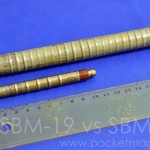
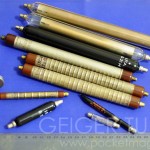
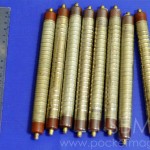
radhoo, Mon Jul 15 2013, 09:59AM
Thanks both for your suggestions.
There's another issue I'm confronting with, again it's a matter of choice.
Because I wanted to make the device portable (but not an issue if used only as a monitor), I had to trade the sensitive SBM-19 tube for the smaller-but-less-sensitive SBM-20. Background counts for SBM-19 is at 80cpm, while the SBM-20 barely touches 20. For short term readings this might result in unwanted variations from the true environment radiation dose, but would not be an issue when integrating the data over a larger time interval (a few hours or so).
SBM-19 is 19cm in length, while the SBM-20 is only 11cm:



Re: Global Radiation monitoring system
Linas, Tue Jul 16 2013, 02:22PM
i have one question, how can you by knowing only "ticks/s" calculate Sv ?
And if you can, what is the error of calculation? (i always can't get my head around this all calculations)
Linas, Tue Jul 16 2013, 02:22PM
i have one question, how can you by knowing only "ticks/s" calculate Sv ?
And if you can, what is the error of calculation? (i always can't get my head around this all calculations)
Re: Global Radiation monitoring system
Steve Conner, Tue Jul 16 2013, 02:35PM
The conversion between counts per unit time and sieverts depends on two conversion factors:
The "quality factor" of the radiation (how much damage 1 particle worth of it does to human tissue)
The sensitivity of the detector (how many particles it takes to produce one count on average) This depends both on the type of detector and the type of radiation, for example most Geiger tubes can barely detect alpha particles because they can't penetrate the outer wall of the tube.
Steve Conner, Tue Jul 16 2013, 02:35PM
The conversion between counts per unit time and sieverts depends on two conversion factors:
The "quality factor" of the radiation (how much damage 1 particle worth of it does to human tissue)
The sensitivity of the detector (how many particles it takes to produce one count on average) This depends both on the type of detector and the type of radiation, for example most Geiger tubes can barely detect alpha particles because they can't penetrate the outer wall of the tube.
Re: Global Radiation monitoring system
Linas, Tue Jul 16 2013, 02:41PM
Linas, Tue Jul 16 2013, 02:41PM
Steve Conner wrote ...
The conversion between counts per unit time and sieverts depends on two conversion factors:
The "quality factor" of the radiation (how much damage 1 particle worth of it does to human tissue)
The sensitivity of the detector (how many particles it takes to produce one count on average) This depends both on the type of detector and the type of radiation, for example most Geiger tubes can barely detect alpha particles because they can't penetrate the outer wall of the tube.
that is my point, it just way to much parameters that goes into play, and it is only possible to know the answer with a error of constant (if that is linear process, but i have doubts about that)The conversion between counts per unit time and sieverts depends on two conversion factors:
The "quality factor" of the radiation (how much damage 1 particle worth of it does to human tissue)
The sensitivity of the detector (how many particles it takes to produce one count on average) This depends both on the type of detector and the type of radiation, for example most Geiger tubes can barely detect alpha particles because they can't penetrate the outer wall of the tube.
Re: Global Radiation monitoring system
Steve Conner, Tue Jul 16 2013, 03:07PM
I agree, I think this device is so inaccurate that it'll only be good for scaring people. However I've seen Russian Geiger counters that read out in uSv/hr probably using a similar setup and calibration, so maybe there is a precedent for it.
However I've seen Russian Geiger counters that read out in uSv/hr probably using a similar setup and calibration, so maybe there is a precedent for it.
Steve Conner, Tue Jul 16 2013, 03:07PM
I agree, I think this device is so inaccurate that it'll only be good for scaring people.
 However I've seen Russian Geiger counters that read out in uSv/hr probably using a similar setup and calibration, so maybe there is a precedent for it.
However I've seen Russian Geiger counters that read out in uSv/hr probably using a similar setup and calibration, so maybe there is a precedent for it.Re: Global Radiation monitoring system
Linas, Tue Jul 16 2013, 03:29PM
so my original idea, is to show ticks per second, or if you want to standardize this go for ticks/(s*cross_section_of_detector) or something like that
Linas, Tue Jul 16 2013, 03:29PM
so my original idea, is to show ticks per second, or if you want to standardize this go for ticks/(s*cross_section_of_detector) or something like that
Re: Global Radiation monitoring system
Steve Conner, Tue Jul 16 2013, 05:08PM
That's how Radiationnetwork.com does it, they simply report the raw counts per minute. (the American equivalent of Radu's project)
Steve Conner, Tue Jul 16 2013, 05:08PM
That's how Radiationnetwork.com does it, they simply report the raw counts per minute. (the American equivalent of Radu's project)
Re: Global Radiation monitoring system
Proud Mary, Tue Jul 16 2013, 05:12PM
SBM20 calibration data gives gamma sensitivity Ra-226: 29 cps/mR/hr, and Co-60: 22 cps/mR/hr.
Ra-226 has many radioactive progeny, resulting in gamma emission across widely varying yields and energies between about 50 keV and 2.5 MeV. According to Calibration of Survey Instruments Used in Radiation Protection for the Assessment of Ionizing Radiation Fields and Radioactive Surface Contamination, NRCP Report 112, 1991, p. 54, Ra-226 has an effective gamma energy of 800 keV.
Co-60, by contrast, has an effective gamma energy around 1.3 MeV.
I would guess that SBM-20's higher counting rate with Ra-226 is due to significant emission <100 keV where the energy response curve of uncompensated GM tubes is at its most non-linear.
Because of Ra-226's wide spread of gamma energies compared with Co-60, I would suggest using the Ra-226 gamma sensitivity figure in Radhu's project i.e. 29 cps/mR/hr.
Finally, it is always a good idea to check a GM tube's plateau slope gradient at 5V intervals and compare the results with the data sheet figures before using any 'new old stock' parts - but so long as the slope is OK, moderate accuracy is possible with careful design.
Proud Mary, Tue Jul 16 2013, 05:12PM
Steve Conner wrote ...
I think this device is so inaccurate that it'll only be good for scaring people. However I've seen Russian Geiger counters that read out in uSv/hr probably using a similar setup and calibration, so maybe there is a precedent for it.
However I've seen Russian Geiger counters that read out in uSv/hr probably using a similar setup and calibration, so maybe there is a precedent for it.
I think this device is so inaccurate that it'll only be good for scaring people.
 However I've seen Russian Geiger counters that read out in uSv/hr probably using a similar setup and calibration, so maybe there is a precedent for it.
However I've seen Russian Geiger counters that read out in uSv/hr probably using a similar setup and calibration, so maybe there is a precedent for it.SBM20 calibration data gives gamma sensitivity Ra-226: 29 cps/mR/hr, and Co-60: 22 cps/mR/hr.
Ra-226 has many radioactive progeny, resulting in gamma emission across widely varying yields and energies between about 50 keV and 2.5 MeV. According to Calibration of Survey Instruments Used in Radiation Protection for the Assessment of Ionizing Radiation Fields and Radioactive Surface Contamination, NRCP Report 112, 1991, p. 54, Ra-226 has an effective gamma energy of 800 keV.
Co-60, by contrast, has an effective gamma energy around 1.3 MeV.
I would guess that SBM-20's higher counting rate with Ra-226 is due to significant emission <100 keV where the energy response curve of uncompensated GM tubes is at its most non-linear.
Because of Ra-226's wide spread of gamma energies compared with Co-60, I would suggest using the Ra-226 gamma sensitivity figure in Radhu's project i.e. 29 cps/mR/hr.
Finally, it is always a good idea to check a GM tube's plateau slope gradient at 5V intervals and compare the results with the data sheet figures before using any 'new old stock' parts - but so long as the slope is OK, moderate accuracy is possible with careful design.
Re: Global Radiation monitoring system
radhoo, Tue Jul 16 2013, 08:37PM
Hi all,
As Stella kindly indicated, the geiger counters cannot distinguish between levels of energy. A GM tube will record a simple pulse as the radiation quanta intersects with the tube's volume space, resulting in emissions of electrons, captured between the internal electrodes, but will provide no info on what the energy level was.
Last year when I completed my first uRADMonitor station, I got some feedback from dr. Nicolae Victor Zamfir, director of the Horia Hulubei National Institute of Physics and Nuclear Engineering, pointing out that any attempt of guessing uSV/h readings out of CPM would be “an approximation†in the best case. Read it if you like here: , using an automated translator.
, using an automated translator.
For compensating the lack of response towards the true energy levels, we might use a different type of detector (like scintillation detectors) , but there are not many true alternatives given the costs. PIN photodiode might be a choice, rather poor I'd say, due to their relative insensitivity, and lacking the capability of absorbing the entire radiation energy, giving out false readings. Sure they can be compensated using statistical methods, I'm not really interested in doing that at this point.
So this takes us back to the geiger tubes, indeed almost ALL detectors available on the market (commercial or professional) are showing the equivalent dose (measured in Sv/h). They do that with a given tolerance. When doing tests like in the video posted above, I was happy to see that Radex RD1706 and Terra-P are showing similar readings to my device, when tested against the 1B24 tube. So let's not make things more complicated than required. To move from cpm to Sv/h I used the CPM readings for : 1)background 2)an Am241 source 3) a Cs137 source. The data was then scaled for arbitrary CPM readings, resulting what you see on screen. If my device works at least as good as the Terra-P, I would say I did a decent job.
But here is another answer I gave to somebody concerned about the quality of uRADmonitor's calibration :
"Regarding the “comparable readingsâ€, your point makes sense.
But .. I’m not sure how relevant it is. Be it placed in various ways outside (closer to -or- far away from the ground), inside (ventilated or not, etc), we’ll get very much the same readings:
- a poorly ventilated cellar shows 0.17uSv/h
- a concrete made storage room shows 0.15uSv/h
- the room I’m living in shows 0.13uSv/h
- a salt mine shows 0.06uSv/h
- the inside of a house made of bricks 0.12uSv/h
- etc
Does it really matter?
No.
From a scientific point of view, the tiny differences would probably make sense: why is the 0.0X difference there and what are the phenomenons implicated, but for the end user is very much just the same. We will probably won’t get more than 0.10uSv/h in differences attributed to user misuse, misplace or other errors. We are still in the safe zone.
But things change when the monitor placed outside your house shows increasing readings, that quickly jump from 0.13uSv/h to more than 1uSv/h like it happened in Japan.
It sure means a lot when you live in a country close to another where a plant has gone critical, and you worry about the wind direction, and then you see you got lucky, but your friends somewhere far away didn’t get that lucky as monitors close to their location register increasing readings.
IMO, It’s not the small differences caused by mounting the device differently that matter. But the significant changes, that when plotted on a map, can provide some great indications on the cause of the incident: The variations will be there, regardless of how well the monitors are installed."
Looking forward to your feedback . Big radiation chart attached, see it at full size:

radhoo, Tue Jul 16 2013, 08:37PM
Hi all,
As Stella kindly indicated, the geiger counters cannot distinguish between levels of energy. A GM tube will record a simple pulse as the radiation quanta intersects with the tube's volume space, resulting in emissions of electrons, captured between the internal electrodes, but will provide no info on what the energy level was.
Steve Conner wrote ...
I agree, I think this device is so inaccurate that it'll only be good for scaring people. However I've seen Russian Geiger counters that read out in uSv/hr probably using a similar setup and calibration, so maybe there is a precedent for it.
However I've seen Russian Geiger counters that read out in uSv/hr probably using a similar setup and calibration, so maybe there is a precedent for it.
The only thing people should be scared of is a rising graph. The current setup shows good stability, and is running since October 2012. I gathered the entire radiation data from October 21 to date, and plotted it to a graph, see it attached. The peaks are most likely to avalanche discharges in the tube. I don't know the exact cause of these events, but I suspect these to be misreadings, as on a few ocasions I used a secondary detector to rule out these events. But the idea is the background stayed quite constant, as expected. We would have seen a completely different graphic if something like Fukushima event would have happened near my device. And we all know how much disinformation is associated with such events.I agree, I think this device is so inaccurate that it'll only be good for scaring people.
 However I've seen Russian Geiger counters that read out in uSv/hr probably using a similar setup and calibration, so maybe there is a precedent for it.
However I've seen Russian Geiger counters that read out in uSv/hr probably using a similar setup and calibration, so maybe there is a precedent for it.Last year when I completed my first uRADMonitor station, I got some feedback from dr. Nicolae Victor Zamfir, director of the Horia Hulubei National Institute of Physics and Nuclear Engineering, pointing out that any attempt of guessing uSV/h readings out of CPM would be “an approximation†in the best case. Read it if you like here:
 , using an automated translator.
, using an automated translator. For compensating the lack of response towards the true energy levels, we might use a different type of detector (like scintillation detectors) , but there are not many true alternatives given the costs. PIN photodiode might be a choice, rather poor I'd say, due to their relative insensitivity, and lacking the capability of absorbing the entire radiation energy, giving out false readings. Sure they can be compensated using statistical methods, I'm not really interested in doing that at this point.
So this takes us back to the geiger tubes, indeed almost ALL detectors available on the market (commercial or professional) are showing the equivalent dose (measured in Sv/h). They do that with a given tolerance. When doing tests like in the video posted above, I was happy to see that Radex RD1706 and Terra-P are showing similar readings to my device, when tested against the 1B24 tube. So let's not make things more complicated than required. To move from cpm to Sv/h I used the CPM readings for : 1)background 2)an Am241 source 3) a Cs137 source. The data was then scaled for arbitrary CPM readings, resulting what you see on screen. If my device works at least as good as the Terra-P, I would say I did a decent job.
But here is another answer I gave to somebody concerned about the quality of uRADmonitor's calibration :
"Regarding the “comparable readingsâ€, your point makes sense.
But .. I’m not sure how relevant it is. Be it placed in various ways outside (closer to -or- far away from the ground), inside (ventilated or not, etc), we’ll get very much the same readings:
- a poorly ventilated cellar shows 0.17uSv/h
- a concrete made storage room shows 0.15uSv/h
- the room I’m living in shows 0.13uSv/h
- a salt mine shows 0.06uSv/h
- the inside of a house made of bricks 0.12uSv/h
- etc
Does it really matter?
No.
From a scientific point of view, the tiny differences would probably make sense: why is the 0.0X difference there and what are the phenomenons implicated, but for the end user is very much just the same. We will probably won’t get more than 0.10uSv/h in differences attributed to user misuse, misplace or other errors. We are still in the safe zone.
But things change when the monitor placed outside your house shows increasing readings, that quickly jump from 0.13uSv/h to more than 1uSv/h like it happened in Japan.
It sure means a lot when you live in a country close to another where a plant has gone critical, and you worry about the wind direction, and then you see you got lucky, but your friends somewhere far away didn’t get that lucky as monitors close to their location register increasing readings.
IMO, It’s not the small differences caused by mounting the device differently that matter. But the significant changes, that when plotted on a map, can provide some great indications on the cause of the incident: The variations will be there, regardless of how well the monitors are installed."
Looking forward to your feedback . Big radiation chart attached, see it at full size:

Re: Global Radiation monitoring system
Proud Mary, Tue Jul 16 2013, 11:03PM
It seems to me that the exact correlation of c.p.m. with Sv/hr in this experiment is of secondary importance compared with establishing a Law of Large Numbers base line against which the significance of any deviations can be evaluated.
Achieving this stable base-line needs good long-term mechanical, electrical, and thermal stability. It also needs freedom from moisture, vibration, EMI, gross contamination of the apparatus by, for example, roosting birds, and not forgetting cable damage by rats and squirrels, and infestation of the apparatus by insects.
Proud Mary, Tue Jul 16 2013, 11:03PM
It seems to me that the exact correlation of c.p.m. with Sv/hr in this experiment is of secondary importance compared with establishing a Law of Large Numbers base line against which the significance of any deviations can be evaluated.
Achieving this stable base-line needs good long-term mechanical, electrical, and thermal stability. It also needs freedom from moisture, vibration, EMI, gross contamination of the apparatus by, for example, roosting birds, and not forgetting cable damage by rats and squirrels, and infestation of the apparatus by insects.

Re: Global Radiation monitoring system
Steve Conner, Wed Jul 17 2013, 09:10AM
Well, surely the idea of a network of radiation monitors is that they won't all get infested with insects simultaneously.
The idea of ignoring the absolute value and looking only at changes is called "trending". It works well and is used in industrial condition monitoring. If a machine suddenly starts vibrating more than it used to, or its oil pressure starts to fall, you can probably guess something bad is about to happen.
However, it's not the change in radiation level that damages health, it's the absolute level. Even 1uSv/h is probably nothing to worry about. How were the "Low", "Normal", "High" and "Danger" levels chosen?
Steve Conner, Wed Jul 17 2013, 09:10AM
Well, surely the idea of a network of radiation monitors is that they won't all get infested with insects simultaneously.

The idea of ignoring the absolute value and looking only at changes is called "trending". It works well and is used in industrial condition monitoring. If a machine suddenly starts vibrating more than it used to, or its oil pressure starts to fall, you can probably guess something bad is about to happen.
However, it's not the change in radiation level that damages health, it's the absolute level. Even 1uSv/h is probably nothing to worry about. How were the "Low", "Normal", "High" and "Danger" levels chosen?
Re: Global Radiation monitoring system
Proud Mary, Wed Jul 17 2013, 10:40AM
I think Steve's 'trending' concept is absolutely right for this project.
By removing the need for absolute dosimetric values - Gy/hr - we also remove the need for detector standardisation, so that a variety of GM tubes could be used in the same circuit.
I have seen ancient military dosimeters having meter scales marked with green ('safe') yellow ('safe' for short term exposure unless you are a coward) and red (perhaps Jesus does exist after all) but today the idea of there being any 'safe' level is questioned by many authors, because even natural background causes damage and very small numbers of people have their lives shortened because of it.
I think we should look at the way the idea of 'danger' is being used in this thread. As I write, I am being exposed to about 0.3 µSv/hr background. If this climbs by an order of magnitude to 3 µSv/hr, I am not in any sort of immediate danger, and few of the popular ex-millitary dosimeters will indicate anything at all despite this ten-fold increase. But while in health physics terms a rise in background to 3 µSv/hr may only show up as excess mortality measured over years, the rise in background almost certainly indicates that something very dangerous requiring urgent investigation is taking place.
So if we drop the language of 'safety' and 'danger' - and use instead 'normal' and 'abnormal' - we shall enjoy less criticism and controversy.
Proud Mary, Wed Jul 17 2013, 10:40AM
I think Steve's 'trending' concept is absolutely right for this project.
By removing the need for absolute dosimetric values - Gy/hr - we also remove the need for detector standardisation, so that a variety of GM tubes could be used in the same circuit.
I have seen ancient military dosimeters having meter scales marked with green ('safe') yellow ('safe' for short term exposure unless you are a coward) and red (perhaps Jesus does exist after all) but today the idea of there being any 'safe' level is questioned by many authors, because even natural background causes damage and very small numbers of people have their lives shortened because of it.
I think we should look at the way the idea of 'danger' is being used in this thread. As I write, I am being exposed to about 0.3 µSv/hr background. If this climbs by an order of magnitude to 3 µSv/hr, I am not in any sort of immediate danger, and few of the popular ex-millitary dosimeters will indicate anything at all despite this ten-fold increase. But while in health physics terms a rise in background to 3 µSv/hr may only show up as excess mortality measured over years, the rise in background almost certainly indicates that something very dangerous requiring urgent investigation is taking place.
So if we drop the language of 'safety' and 'danger' - and use instead 'normal' and 'abnormal' - we shall enjoy less criticism and controversy.

Re: Global Radiation monitoring system
radhoo, Wed Jul 17 2013, 10:43AM
Sure, exposure to 1uSv/h is not a big concern, especially when the exposure is short. And pushing that to extreme, not to mention people that helped removing some of the dangerous debris at chernobyl , still alive today.
But we'll need some given thresholds in place, so the user knows that something has changed. Any suggestions are welcome!
BTW, I got the first two cases in post today, I'll post a few pictures later on; they look great, however I might not be able to fit everything inside.
radhoo, Wed Jul 17 2013, 10:43AM
Steve Conner wrote ...
However, it's not the change in radiation level that damages health, it's the absolute level. Even 1uSv/h is probably nothing to worry about. How were the "Low", "Normal", "High" and "Danger" levels chosen?
For the moment arbitrarily. <0.10uSv/h ; <0.2uSv/h; <0.3uSv/h and >0.3uSv/hHowever, it's not the change in radiation level that damages health, it's the absolute level. Even 1uSv/h is probably nothing to worry about. How were the "Low", "Normal", "High" and "Danger" levels chosen?
Sure, exposure to 1uSv/h is not a big concern, especially when the exposure is short. And pushing that to extreme, not to mention people that helped removing some of the dangerous debris at chernobyl , still alive today.
But we'll need some given thresholds in place, so the user knows that something has changed. Any suggestions are welcome!
BTW, I got the first two cases in post today, I'll post a few pictures later on; they look great, however I might not be able to fit everything inside.
Proud Mary wrote ...
I think Steve's 'trending' concept is absolutely right for this project.
Indeed, this is my feeling too. A constant value, regardless of its magnitude can be assuring that life goes on like it did yesterday (not necessarily perfect, but at least it's what we are used to), while a change , especially a significant one (relative term again :) ), should trigger at least some curiosity is not concern, on what was the cause of the event.I think Steve's 'trending' concept is absolutely right for this project.
Proud Mary wrote ...
By removing the need for absolute dosimetric values - Gy/hr - we also remove the need for detector standardisation, so that a variety of GM tubes could be used in the same circuit.
..
So if we drop the language of 'safety' and 'danger' - and use instead 'normal' and 'abnormal' - we shall enjoy less criticism and controversy.
True, would be a lot safer, including from the criticism point of view which was highly concentrated on the conversion itself and less on the other technical details, but I will be unable to do that. People will still ask questions regarding the numbers, and as the majority of the dosimeters on the market have chosen to show the readings as the equivalent dose, I have to follow the trend, or risk a project failure.By removing the need for absolute dosimetric values - Gy/hr - we also remove the need for detector standardisation, so that a variety of GM tubes could be used in the same circuit.
..
So if we drop the language of 'safety' and 'danger' - and use instead 'normal' and 'abnormal' - we shall enjoy less criticism and controversy.

Re: Global Radiation monitoring system
radhoo, Wed Jul 17 2013, 10:51AM
Sorry PM, we wrote the answers simultaneously, I just added a few more comments in my previous post.
radhoo, Wed Jul 17 2013, 10:51AM
Sorry PM, we wrote the answers simultaneously, I just added a few more comments in my previous post.
Re: Global Radiation monitoring system
Proud Mary, Wed Jul 17 2013, 11:13AM
It would be interesting to monitor activity in the Bega Canal.
Proud Mary, Wed Jul 17 2013, 11:13AM
It would be interesting to monitor activity in the Bega Canal.
Re: Global Radiation monitoring system
radhoo, Wed Jul 17 2013, 12:07PM
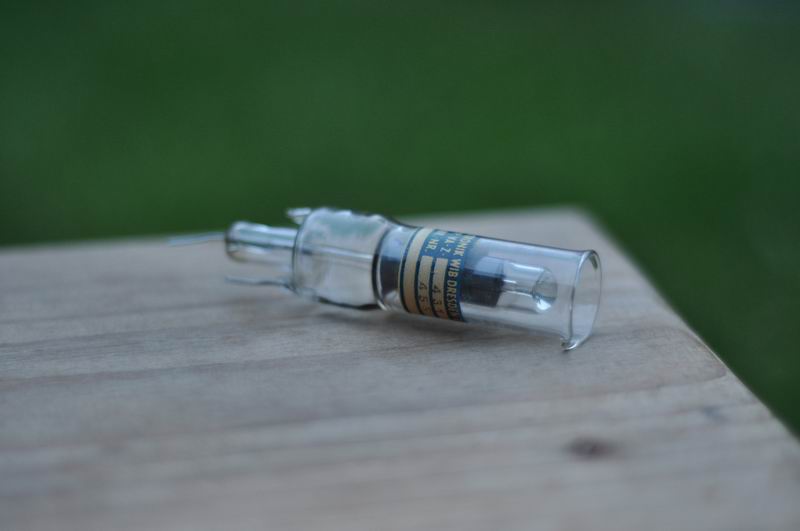
With this? :)
Bega:


radhoo, Wed Jul 17 2013, 12:07PM
Proud Mary wrote ...
It would be interesting to monitor activity in the Bega Canal.
It would be interesting to monitor activity in the Bega Canal.

With this? :)
Bega:


Re: Global Radiation monitoring system
Proud Mary, Wed Jul 17 2013, 05:34PM
I was thinking of the single-ended glass beta-gamma probe type (for example, Centronics B12H) to detect radioactivity in the water as it flows past.
Clearly, there will not be many places on a river or canal where the amateur scientist can set up a permanent or semi-permanent detector in the water, and the Bega where it flows through TimiÅŸoara does not look like one of them, unless you know someone!
Lovely pictures, Radu!
Proud Mary, Wed Jul 17 2013, 05:34PM
I was thinking of the single-ended glass beta-gamma probe type (for example, Centronics B12H) to detect radioactivity in the water as it flows past.
Clearly, there will not be many places on a river or canal where the amateur scientist can set up a permanent or semi-permanent detector in the water, and the Bega where it flows through TimiÅŸoara does not look like one of them, unless you know someone!

Lovely pictures, Radu!
Re: Global Radiation monitoring system
Proud Mary, Fri Jul 19 2013, 02:02PM
J Environ Radioact. 2011 Jul;102(7):703-12.
Dynamics, deterministic nature and correlations of outdoor (222)Rn and (220)Rn progeny concentrations measured at Bacău, Romania.
Cuculeanu V, Simion F, Simion E, Geicu A.
Faculty of Physics, University of Bucharest, Magurele, RO-077125 Bucharest, Romania.
Abstract
The long-term variation, nature and correlations of outdoor (222)Rn and (220)Rn progeny concentrations measured during the period 1994-2009 were investigated. The time series of data were obtained within the framework of the monitoring program performed by the Environmental Radioactivity Monitoring Station (ERMS) Bacău, a component part of the National Environmental Radioactivity Survey Network (NERSN), coordinated by National Environmental Protection Agency (NEPA). The measuring method is based on the total beta measurements of atmospheric aerosol filters, using a low background total beta counter and ((90)Sr/Y) reference standard. Analysis of the time series of progeny concentrations in the low atmosphere makes evident different patterns of variation of these concentrations: diurnal, seasonal and annual. A possible relationship of progeny concentration increase with global warming is emphasized. In order to find the dominant frequency of the physical processes determining progeny concentration variability the power spectrum has been used. The deterministic nature of the time series of concentrations has been studied making use of the autocorrelation function and stationarity of the original data and of their phase randomized time series. Also, the correlations with meteorological parameters have been investigated using Pearson's correlation coefficient with corresponding level of significance.
Proud Mary, Fri Jul 19 2013, 02:02PM
J Environ Radioact. 2011 Jul;102(7):703-12.
Dynamics, deterministic nature and correlations of outdoor (222)Rn and (220)Rn progeny concentrations measured at Bacău, Romania.
Cuculeanu V, Simion F, Simion E, Geicu A.
Faculty of Physics, University of Bucharest, Magurele, RO-077125 Bucharest, Romania.
Abstract
The long-term variation, nature and correlations of outdoor (222)Rn and (220)Rn progeny concentrations measured during the period 1994-2009 were investigated. The time series of data were obtained within the framework of the monitoring program performed by the Environmental Radioactivity Monitoring Station (ERMS) Bacău, a component part of the National Environmental Radioactivity Survey Network (NERSN), coordinated by National Environmental Protection Agency (NEPA). The measuring method is based on the total beta measurements of atmospheric aerosol filters, using a low background total beta counter and ((90)Sr/Y) reference standard. Analysis of the time series of progeny concentrations in the low atmosphere makes evident different patterns of variation of these concentrations: diurnal, seasonal and annual. A possible relationship of progeny concentration increase with global warming is emphasized. In order to find the dominant frequency of the physical processes determining progeny concentration variability the power spectrum has been used. The deterministic nature of the time series of concentrations has been studied making use of the autocorrelation function and stationarity of the original data and of their phase randomized time series. Also, the correlations with meteorological parameters have been investigated using Pearson's correlation coefficient with corresponding level of significance.
Re: Global Radiation monitoring system
radhoo, Tue Sept 03 2013, 01:26PM
Well, after all this time here are some updates.
I got in touch with Mr. Cuculeanu , and with a colleague of his , both extremely nice people and very helpful. We had the chance to discuss on some of the issues behind my device, their idea was that it will not be extremely accurate, but will work as an indicator of something going terribly wrong. Combined with global coverage should be quite useful.
I got the last modules, and will be putting everything together soon. Here are the Geiger tubes that will be used in the first set of devices:
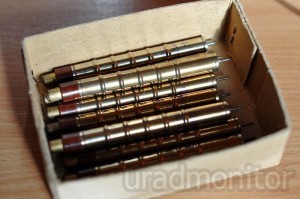
radhoo, Tue Sept 03 2013, 01:26PM
Well, after all this time here are some updates.
I got in touch with Mr. Cuculeanu , and with a colleague of his , both extremely nice people and very helpful. We had the chance to discuss on some of the issues behind my device, their idea was that it will not be extremely accurate, but will work as an indicator of something going terribly wrong. Combined with global coverage should be quite useful.
I got the last modules, and will be putting everything together soon. Here are the Geiger tubes that will be used in the first set of devices:

Re: Global Radiation monitoring system
radhoo, Sat Oct 05 2013, 07:51AM
I have decided to create three different uRADMonitor devices, that will be part of a single, global radiation surveillance network. From simpler to more complex these are:
- Model A: a small compact detector, this device contains a Geiger counter (SBM-20), a temperature sensor and a network interface. Encased in a small aluminum box, exposing only the DC power connector and the Ethernet port, intended as a fixed monitor. It's main advantage is the relative low production cost, while offering continuous radiation surveillance. The radiation detector is built upon a SBM-20 tube.
- Model B: the same compact size as the above, while also offering a LCD and a built in battery for remote operation. Model B can be used both as a monitor (when connected to the network via Ethernet cable) and as a mobile dosimeter showing the radiation levels on the LCD. Data is centralized only if the device is connected to the network (via the Ethernet cable).
- Model C: the most complex uRADMonitor design, features the same LCD as the previous model, but comes with more features and sensors: a GPS unit for mapping radiation data to location and also for standalone use as a GPS Tracker, a SDCard slot for logging the data when a network connection is not available, a wireless network connection to avoid installing complicated Ethernet cables - only DC power is required. Model C logs data to SDCard when Internet is not available and then uploads the data automatically when a connection becomes available. The wireless connection is via 2.4GHz radio waves to a local receiver connected to the Internet router by cable: so you can mount the uRADMonitor station outside, and have it upload data wirelessly to a receiver placed inside and connected via a short Ethernet cable to your Internet router. Very much like in this diagram:
I completed the PCB design for the uRADMonitor Model A, here a a few pics:
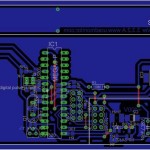
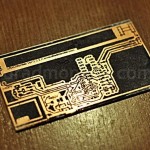
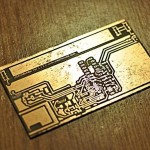
radhoo, Sat Oct 05 2013, 07:51AM
I have decided to create three different uRADMonitor devices, that will be part of a single, global radiation surveillance network. From simpler to more complex these are:
- Model A: a small compact detector, this device contains a Geiger counter (SBM-20), a temperature sensor and a network interface. Encased in a small aluminum box, exposing only the DC power connector and the Ethernet port, intended as a fixed monitor. It's main advantage is the relative low production cost, while offering continuous radiation surveillance. The radiation detector is built upon a SBM-20 tube.
- Model B: the same compact size as the above, while also offering a LCD and a built in battery for remote operation. Model B can be used both as a monitor (when connected to the network via Ethernet cable) and as a mobile dosimeter showing the radiation levels on the LCD. Data is centralized only if the device is connected to the network (via the Ethernet cable).
- Model C: the most complex uRADMonitor design, features the same LCD as the previous model, but comes with more features and sensors: a GPS unit for mapping radiation data to location and also for standalone use as a GPS Tracker, a SDCard slot for logging the data when a network connection is not available, a wireless network connection to avoid installing complicated Ethernet cables - only DC power is required. Model C logs data to SDCard when Internet is not available and then uploads the data automatically when a connection becomes available. The wireless connection is via 2.4GHz radio waves to a local receiver connected to the Internet router by cable: so you can mount the uRADMonitor station outside, and have it upload data wirelessly to a receiver placed inside and connected via a short Ethernet cable to your Internet router. Very much like in this diagram:

I completed the PCB design for the uRADMonitor Model A, here a a few pics:



Re: Global Radiation monitoring system
radhoo, Sat Oct 05 2013, 08:58AM
The Model A first prototype is ready. The board fits the case perfectly and it slides on the side rails when taking it in/out. The software is also close to the finish point and the device is already sending data to the uRADMonitor servers. I am happy with the size of the device, and the rugged feeling given by the robust aluminum case.
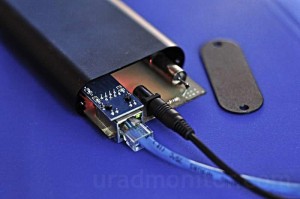
For this device I developed a tiny 400V inverter module, all with SMD components including the ferrite choke. No need to wind any other coils with hundreds of turns for ferrite core transformers like I did before. I'm sure this will be a huge time saver.
Simple and elegant, the board has plenty of space for adding all the extra features in Model B. Yes, the same case size will be used. Model B will also feature an LCD display.
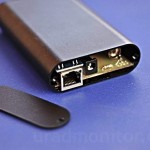
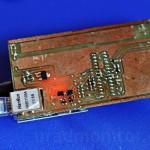
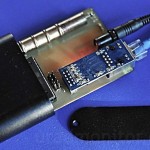
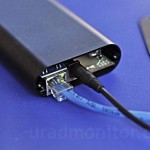
The second picture shows the inverter module, just at the right of the Ethernet connector, on top of the red light background.
More details here:
radhoo, Sat Oct 05 2013, 08:58AM
The Model A first prototype is ready. The board fits the case perfectly and it slides on the side rails when taking it in/out. The software is also close to the finish point and the device is already sending data to the uRADMonitor servers. I am happy with the size of the device, and the rugged feeling given by the robust aluminum case.

For this device I developed a tiny 400V inverter module, all with SMD components including the ferrite choke. No need to wind any other coils with hundreds of turns for ferrite core transformers like I did before. I'm sure this will be a huge time saver.
Simple and elegant, the board has plenty of space for adding all the extra features in Model B. Yes, the same case size will be used. Model B will also feature an LCD display.




The second picture shows the inverter module, just at the right of the Ethernet connector, on top of the red light background.
More details here:

Re: Global Radiation monitoring system
Mads Barnkob, Sat Oct 05 2013, 04:07PM
I am looking forward to install one of these outside my flat :)
Mads Barnkob, Sat Oct 05 2013, 04:07PM
I am looking forward to install one of these outside my flat :)
Re: Global Radiation monitoring system
radhoo, Sat Oct 05 2013, 05:15PM
A few more updates:
While designing the software for Model A, the inverter module required a few precise performance measurements to determine the best combination of duty cycle / frequency, so I put the data into a chart for easier understanding:
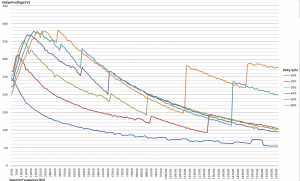
More details here:
radhoo, Sat Oct 05 2013, 05:15PM
Mads Barnkob wrote ...
I am looking forward to install one of these outside my flat :)
Thanks Mads, believe me or not, I am also very much looking forward to that - that is to finally have the entire system finished, checked and ready to go. And for my fellow 4HV'ers my goal is to provide the minimum price possible - covering only the Bill of MAterials.I am looking forward to install one of these outside my flat :)
A few more updates:
While designing the software for Model A, the inverter module required a few precise performance measurements to determine the best combination of duty cycle / frequency, so I put the data into a chart for easier understanding:

More details here:

Re: Global Radiation monitoring system
radhoo, Tue Oct 08 2013, 08:38PM
As the last step was easy an involved only cutting the lid to make space for the two connectors, Ethernet and DC Power, I had some extra time for a photo session of the device. I also completed a second unit but with a slightly different aluminum case (BTW, I'd like to know which of the two cases you like better), so here are a few pics of the final uRADMonitor Model A, for the global radiation monitoring network (peanuts for size comparison only :) ):
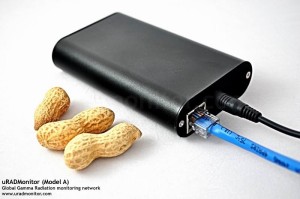
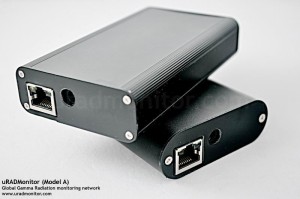
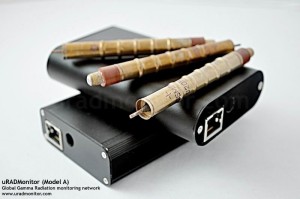
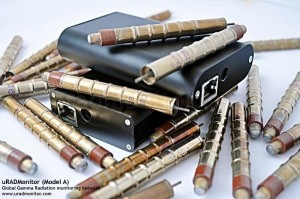
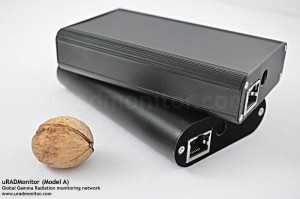
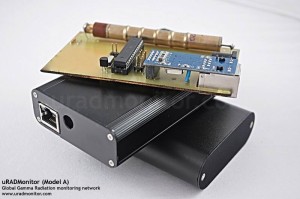
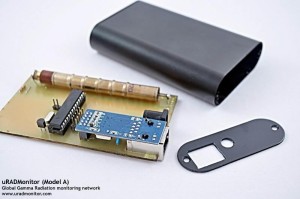
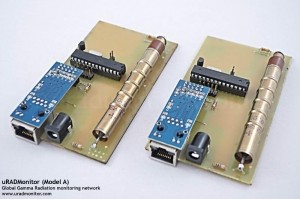
The next few days I'll run tests for checking the quality, the stability and the behavior when exposed to various sources of radiation. Adjustments in software will be added where required.
Construction log is available here:
There is also a FB page some of you might be interested in (community support is much appreciated):
radhoo, Tue Oct 08 2013, 08:38PM
As the last step was easy an involved only cutting the lid to make space for the two connectors, Ethernet and DC Power, I had some extra time for a photo session of the device. I also completed a second unit but with a slightly different aluminum case (BTW, I'd like to know which of the two cases you like better), so here are a few pics of the final uRADMonitor Model A, for the global radiation monitoring network (peanuts for size comparison only :) ):








The next few days I'll run tests for checking the quality, the stability and the behavior when exposed to various sources of radiation. Adjustments in software will be added where required.
Construction log is available here:

There is also a FB page some of you might be interested in (community support is much appreciated):

Re: Global Radiation monitoring system
radhoo, Thu Oct 10 2013, 03:37PM
Here's a data feed from device #3 (the one in rectangular case):
Temperature:
Tube voltage:
CPM:
(*)uSV/h:
The dose in sieverts/h is an approximation. Some people seem to react exaggeratedly to this conversion, resulting in this note (like what other measurement is anything but yet another approximation).
Software not yet complete, so please excuse any issues/ errors you might find. More details in this post:
The units are currently indoors, and temperature sensor inside the casing, so temperature values are higher. The tube voltage has been set to 390V, I find this a convenient choice both in terms of inverter effort and SBM-20 tube's specs on the voltage interval.
radhoo, Thu Oct 10 2013, 03:37PM
Here's a data feed from device #3 (the one in rectangular case):
Temperature:

Tube voltage:

CPM:

(*)uSV/h:

The dose in sieverts/h is an approximation. Some people seem to react exaggeratedly to this conversion, resulting in this note (like what other measurement is anything but yet another approximation).
Software not yet complete, so please excuse any issues/ errors you might find. More details in this post:

The units are currently indoors, and temperature sensor inside the casing, so temperature values are higher. The tube voltage has been set to 390V, I find this a convenient choice both in terms of inverter effort and SBM-20 tube's specs on the voltage interval.
Re: Global Radiation monitoring system
Pinkamena, Thu Oct 10 2013, 08:35PM
Interesting idea! If the price got low enough, I might buy a few and position them around my city.
I don't know if you're planning on making a model with only the bare necessities, skipping the little screen you got going there. It could upload all its data to a website, where I would have a user and could check on my own devices, as well as those from around the world. If you got some proper infrastructure up and running first in the form of support and a website for statistics, this might be a hit among certain groups. I imagine having a worldwide radiation detector grid could be beneficial for researchers.
Pinkamena, Thu Oct 10 2013, 08:35PM
Interesting idea! If the price got low enough, I might buy a few and position them around my city.
I don't know if you're planning on making a model with only the bare necessities, skipping the little screen you got going there. It could upload all its data to a website, where I would have a user and could check on my own devices, as well as those from around the world. If you got some proper infrastructure up and running first in the form of support and a website for statistics, this might be a hit among certain groups. I imagine having a worldwide radiation detector grid could be beneficial for researchers.
Re: Global Radiation monitoring system
radhoo, Thu Oct 10 2013, 09:26PM
yes, that's the plan. The data will be centralized on automatically. I designed this to be as close to plug and play as possible. For instance , the two devices on my desk started uploading data as soon as I put the DC connector in and the Ethernet cable. No configuration (IP given via DHCP) needed, the data starts flowing, and can be seen online. For now at
automatically. I designed this to be as close to plug and play as possible. For instance , the two devices on my desk started uploading data as soon as I put the DC connector in and the Ethernet cable. No configuration (IP given via DHCP) needed, the data starts flowing, and can be seen online. For now at  but soon a fancy dedicated web service will be in place.
but soon a fancy dedicated web service will be in place.
not only collecting data but allowing users to set alarms for given radiation level thresholds.
later an android/ios app for easier access to data.
radhoo, Thu Oct 10 2013, 09:26PM
yes, that's the plan. The data will be centralized on
 automatically. I designed this to be as close to plug and play as possible. For instance , the two devices on my desk started uploading data as soon as I put the DC connector in and the Ethernet cable. No configuration (IP given via DHCP) needed, the data starts flowing, and can be seen online. For now at
automatically. I designed this to be as close to plug and play as possible. For instance , the two devices on my desk started uploading data as soon as I put the DC connector in and the Ethernet cable. No configuration (IP given via DHCP) needed, the data starts flowing, and can be seen online. For now at  but soon a fancy dedicated web service will be in place.
but soon a fancy dedicated web service will be in place.not only collecting data but allowing users to set alarms for given radiation level thresholds.
later an android/ios app for easier access to data.
Re: Global Radiation monitoring system
Shrad, Fri Oct 11 2013, 09:41AM
I live in a region with vast quarries and continuous exploitation of stone and concrete plants
I know there are some underground cavities all around due to quarstic events almost everywhere in the region, and radon could be released continuously from these cavities to the surface through vents
Most houses have caves which are a few ten centimeters on top of the bedrock, and quarry explosions make fails on the walls of many houses
I can suspect these fails run from the bedrock to the caves and the walls, and as the region is covered by alluvial mud and clay, the flow could be quite as high as in a mountain region as those caves would be the only exit point besides quarries themselves
I'd be happy to monitor data around here with a few monitors too if they come at a decent price, or if you provide the ability and permission to built them ourselves :)
Shrad, Fri Oct 11 2013, 09:41AM
I live in a region with vast quarries and continuous exploitation of stone and concrete plants
I know there are some underground cavities all around due to quarstic events almost everywhere in the region, and radon could be released continuously from these cavities to the surface through vents
Most houses have caves which are a few ten centimeters on top of the bedrock, and quarry explosions make fails on the walls of many houses
I can suspect these fails run from the bedrock to the caves and the walls, and as the region is covered by alluvial mud and clay, the flow could be quite as high as in a mountain region as those caves would be the only exit point besides quarries themselves
I'd be happy to monitor data around here with a few monitors too if they come at a decent price, or if you provide the ability and permission to built them ourselves :)
Re: Global Radiation monitoring system
Steve Conner, Fri Oct 11 2013, 09:53AM
Hey Radu! Project looks good. What software do you use on the server for drawing the graphs? :)
Steve Conner, Fri Oct 11 2013, 09:53AM
Hey Radu! Project looks good. What software do you use on the server for drawing the graphs? :)
Re: Global Radiation monitoring system
radhoo, Fri Oct 11 2013, 05:31PM
@Shrad, I'll do my best to keep the prices low. At first the project will not be open source. That's because with my limited resources, protecting the idea is difficult at this stage. But once it gets known I'd be happy to change it's status and offer the full details.
@Steve thank you. I'm using phpMyGraph5.0.
radhoo, Fri Oct 11 2013, 05:31PM
@Shrad, I'll do my best to keep the prices low. At first the project will not be open source. That's because with my limited resources, protecting the idea is difficult at this stage. But once it gets known I'd be happy to change it's status and offer the full details.
@Steve thank you. I'm using phpMyGraph5.0.
Re: Global Radiation monitoring system
radhoo, Sun Oct 13 2013, 10:10AM
Another update.
Looking over the numbers recorded so far, I quickly observed that while there is a negligible difference in CPM levels (probably due to small differences between the two SBM-20 tubes used), both radiation graphs for #2 and #3 follow the same trends. So I created a new type of charts, showing both the #2 (in red) and #3 (in cyan) data:
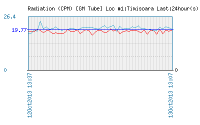
It seems that even small changes in the radiation field at my location are being picked up in the same way by the two detectors, which is great news given the small values involved (only the background levels).
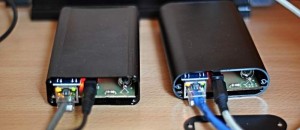
Also see:
radhoo, Sun Oct 13 2013, 10:10AM
Another update.
Looking over the numbers recorded so far, I quickly observed that while there is a negligible difference in CPM levels (probably due to small differences between the two SBM-20 tubes used), both radiation graphs for #2 and #3 follow the same trends. So I created a new type of charts, showing both the #2 (in red) and #3 (in cyan) data:

It seems that even small changes in the radiation field at my location are being picked up in the same way by the two detectors, which is great news given the small values involved (only the background levels).

Also see:

Re: Global Radiation monitoring system
Proud Mary, Sun Oct 13 2013, 11:35AM
Oh that's very good! I do like that!
Proud Mary, Sun Oct 13 2013, 11:35AM
Oh that's very good! I do like that!
Re: Global Radiation monitoring system
Proud Mary, Fri Oct 18 2013, 01:49PM
Medicina (Kaunas). 2007;43(10):824-31.
Clinical cosmobiology: distribution of deaths during 180 months and cosmophysical activity. The Lithuanian study, 1990-2004. The role of cosmic rays.
Stoupel E, Kalediene R, Petrauskiene J, Starkuviene S, Abramson E, Israelevich P, Sulkes J.
Division of Cardiology, Rabin Medical Center, Tel Aviv University, Israel. **link**
Abstract
The aim of this study is a next step of our previous, initial, publications--to explore the links between monthly death number (total, and for the major death causes and each gender) with levels of monthly cosmophysical activity in a long-term, big cohort observation.
METHODS:
Death number during 180 consecutive months from the National Registry of Lithuania for years 1990-2004 were studied. A total of 630,205 deaths were analyzed (333,035 males). For comparison, monthly indices of solar activity, geomagnetic activity, and cosmic ray activity and year and month (1-12) of the study were used. The cosmophysical data were obtained from space research centers in the USA, Russia, and Finland. Statistics. Pearson correlation coefficients (r) and their probabilities (P) between compared parameters were calculated. A multivariate model of prediction was designed.
RESULTS:
It was a significant correlation between total monthly death number and indices of cosmic ray activity and, inverse, of solar activity; in men stronger than in women. Monthly geomagnetic activity was significantly correlated with traffic accidents, ischemic heart disease/stroke ratio, suicide victim number. Deaths from stroke, noncardiovascular causes, suicide, traffic accidents were related with cosmic ray activity and, inverse, with solar activity. Relationship of ischemic heart disease/stroke ratio to year of observation showed additional evidence for the growing role of stroke in cardiovascular mortality.
CONCLUSIONS:
Monthly death number is linked to cosmic ray activity, and inverse, to solar activity. Central place of stroke-related deaths in cardiovascular mortality is emerging. Geomagnetic activity, in monthly account, plays a relatively minor role. We presume that forces antagonistic to cosmic ray activity, like solar activity and geomagnetic activity, can prevent some negative biologic effects of cosmic ray.
PMID: 17998801
[PubMed - indexed for MEDLINE]
Free full text
Proud Mary, Fri Oct 18 2013, 01:49PM
Medicina (Kaunas). 2007;43(10):824-31.
Clinical cosmobiology: distribution of deaths during 180 months and cosmophysical activity. The Lithuanian study, 1990-2004. The role of cosmic rays.
Stoupel E, Kalediene R, Petrauskiene J, Starkuviene S, Abramson E, Israelevich P, Sulkes J.
Division of Cardiology, Rabin Medical Center, Tel Aviv University, Israel. **link**
Abstract
The aim of this study is a next step of our previous, initial, publications--to explore the links between monthly death number (total, and for the major death causes and each gender) with levels of monthly cosmophysical activity in a long-term, big cohort observation.
METHODS:
Death number during 180 consecutive months from the National Registry of Lithuania for years 1990-2004 were studied. A total of 630,205 deaths were analyzed (333,035 males). For comparison, monthly indices of solar activity, geomagnetic activity, and cosmic ray activity and year and month (1-12) of the study were used. The cosmophysical data were obtained from space research centers in the USA, Russia, and Finland. Statistics. Pearson correlation coefficients (r) and their probabilities (P) between compared parameters were calculated. A multivariate model of prediction was designed.
RESULTS:
It was a significant correlation between total monthly death number and indices of cosmic ray activity and, inverse, of solar activity; in men stronger than in women. Monthly geomagnetic activity was significantly correlated with traffic accidents, ischemic heart disease/stroke ratio, suicide victim number. Deaths from stroke, noncardiovascular causes, suicide, traffic accidents were related with cosmic ray activity and, inverse, with solar activity. Relationship of ischemic heart disease/stroke ratio to year of observation showed additional evidence for the growing role of stroke in cardiovascular mortality.
CONCLUSIONS:
Monthly death number is linked to cosmic ray activity, and inverse, to solar activity. Central place of stroke-related deaths in cardiovascular mortality is emerging. Geomagnetic activity, in monthly account, plays a relatively minor role. We presume that forces antagonistic to cosmic ray activity, like solar activity and geomagnetic activity, can prevent some negative biologic effects of cosmic ray.
PMID: 17998801
[PubMed - indexed for MEDLINE]
Free full text
Re: Global Radiation monitoring system
radhoo, Fri Nov 22 2013, 11:24AM
I've received a new batch of Geiger tubes, this time I opted for the SI-29BG, surprisingly smaller than the SBM-20U, but providing better sensitivity.
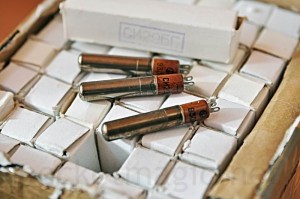
More at:
radhoo, Fri Nov 22 2013, 11:24AM
I've received a new batch of Geiger tubes, this time I opted for the SI-29BG, surprisingly smaller than the SBM-20U, but providing better sensitivity.

More at:

Re: Global Radiation monitoring system
Proud Mary, Fri Nov 22 2013, 02:08PM
It's good being able to connect an external tube, and interesting to see SI-29BG, a GM tube which I haven't seen before. Thanks for showing us.
Proud Mary, Fri Nov 22 2013, 02:08PM
It's good being able to connect an external tube, and interesting to see SI-29BG, a GM tube which I haven't seen before. Thanks for showing us.
Re: Global Radiation monitoring system
radhoo, Fri Nov 22 2013, 05:03PM
Hi Proud Mary,
it proved useful so far for quickly testing the new tubes for the more obvious defects, however I regret the way I designed it - to collect the signal from the cathode . At the time I made the board, I didn't think of the external connector, it was added later.
Back to the SI29BG, it features a rather interesting anode. I found a few pics of a dismantled tube:
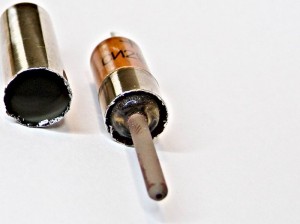
I wonder if the strange anode might have anything to do with the good performance of this tube, at least when compared to the larger SBM-20.
radhoo, Fri Nov 22 2013, 05:03PM
Hi Proud Mary,
it proved useful so far for quickly testing the new tubes for the more obvious defects, however I regret the way I designed it - to collect the signal from the cathode . At the time I made the board, I didn't think of the external connector, it was added later.
Back to the SI29BG, it features a rather interesting anode. I found a few pics of a dismantled tube:

I wonder if the strange anode might have anything to do with the good performance of this tube, at least when compared to the larger SBM-20.
Re: Global Radiation monitoring system
Proud Mary, Fri Nov 22 2013, 06:29PM
I remember that some Russian tubes were also designed to work in proportional mode, at a voltage slightly lower than the bend up onto the GM-region plateau - 10V - 20V less. I wonder if this could be one of these? The thicker anode would have been less susceptible to microphony and changes in C caused by the vibration or acceleration compared with a fine wire.
In normal GM use, the finer the wire, the better it is, so there must have been some reason for it, though I guess the fact that it is only supported at one end is part of the reason.
On the Russian data sheet, what is the parameter between 250V and 340V - the second line in the parameters table?
Proud Mary, Fri Nov 22 2013, 06:29PM
radhoo wrote ...
Hi Proud Mary,
it proved useful so far for quickly testing the new tubes for the more obvious defects, however I regret the way I designed it - to collect the signal from the cathode . At the time I made the board, I didn't think of the external connector, it was added later.
Back to the SI29BG, it features a rather interesting anode. I found a few pics of a dismantled tube:

I wonder if the strange anode might have anything to do with the good performance of this tube, at least when compared to the larger SBM-20.
Hi Proud Mary,
it proved useful so far for quickly testing the new tubes for the more obvious defects, however I regret the way I designed it - to collect the signal from the cathode . At the time I made the board, I didn't think of the external connector, it was added later.
Back to the SI29BG, it features a rather interesting anode. I found a few pics of a dismantled tube:

I wonder if the strange anode might have anything to do with the good performance of this tube, at least when compared to the larger SBM-20.
I remember that some Russian tubes were also designed to work in proportional mode, at a voltage slightly lower than the bend up onto the GM-region plateau - 10V - 20V less. I wonder if this could be one of these? The thicker anode would have been less susceptible to microphony and changes in C caused by the vibration or acceleration compared with a fine wire.
In normal GM use, the finer the wire, the better it is, so there must have been some reason for it, though I guess the fact that it is only supported at one end is part of the reason.
On the Russian data sheet, what is the parameter between 250V and 340V - the second line in the parameters table?
Re: Global Radiation monitoring system
radhoo, Tue Nov 26 2013, 09:55AM
You are probably right about the thick anode and having support at only one end. Still, vibrations can be solved even with a smaller anode section diameter. Also that black powder looks intriguing.
radhoo, Tue Nov 26 2013, 09:55AM
You are probably right about the thick anode and having support at only one end. Still, vibrations can be solved even with a smaller anode section diameter. Also that black powder looks intriguing.
wrote ...
On the Russian data sheet, what is the parameter between 250V and 340V - the second line in the parameters table?
I believe it translates as : "Initial voltage (volts)"On the Russian data sheet, what is the parameter between 250V and 340V - the second line in the parameters table?
Re: Global Radiation monitoring system
Proud Mary, Tue Nov 26 2013, 10:20AM
That's what Centronic call the 'starting voltage' - needed to estimate the output pulse amplitude.
Proud Mary, Tue Nov 26 2013, 10:20AM
radhoo wrote ...
You are probably right about the thick anode and having support at only one end. Still, vibrations can be solved even with a smaller anode section diameter. Also that black powder looks intriguing.
You are probably right about the thick anode and having support at only one end. Still, vibrations can be solved even with a smaller anode section diameter. Also that black powder looks intriguing.
wrote ...
On the Russian data sheet, what is the parameter between 250V and 340V - the second line in the parameters table?
I believe it translates as : "Initial voltage (volts)"On the Russian data sheet, what is the parameter between 250V and 340V - the second line in the parameters table?
That's what Centronic call the 'starting voltage' - needed to estimate the output pulse amplitude.
Re: Global Radiation monitoring system
radhoo, Mon Dec 30 2013, 10:11AM
I completed a variant of the Model A for SI29BG geiger tubes, that will be distributed with the one using SBM-20U tubes. Next is the uRADMonitor model B, featuring an LCD screen to also allow offline use as a dosimeter, and a battery pack, but that's going to happen in 2014. Until then, I wish you all a Happy new year!
Here are a few pics with my recent work:
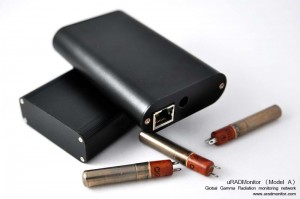
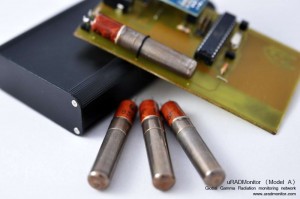

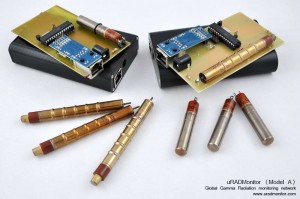
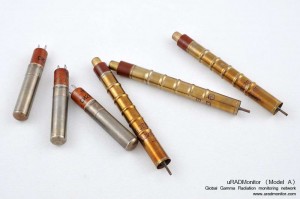

More pics and details on the project's page at:
radhoo, Mon Dec 30 2013, 10:11AM
I completed a variant of the Model A for SI29BG geiger tubes, that will be distributed with the one using SBM-20U tubes. Next is the uRADMonitor model B, featuring an LCD screen to also allow offline use as a dosimeter, and a battery pack, but that's going to happen in 2014. Until then, I wish you all a Happy new year!
Here are a few pics with my recent work:






More pics and details on the project's page at:

Re: Global Radiation monitoring system
radhoo, Mon Dec 30 2013, 10:36AM
Two prototype stations are currently up and running:
one is in Timisoara, Romania , real time data available here.
and another one is 300km away, in Carei, Romania, the data can be viewed here (this is an uRADMonitor Model A network with a SI29BG tube).
radhoo, Mon Dec 30 2013, 10:36AM
Two prototype stations are currently up and running:
one is in Timisoara, Romania , real time data available here.
and another one is 300km away, in Carei, Romania, the data can be viewed here (this is an uRADMonitor Model A network with a SI29BG tube).
Re: Global Radiation monitoring system
tobias, Mon Dec 30 2013, 10:37AM
Radhoo, when do you plan to have these on sale and for how much $ will they go for?
Also, will it be a easy way ro interface it with other devices?
Tobias
tobias, Mon Dec 30 2013, 10:37AM
Radhoo, when do you plan to have these on sale and for how much $ will they go for?
Also, will it be a easy way ro interface it with other devices?
Tobias
Re: Global Radiation monitoring system
radhoo, Fri Jan 03 2014, 08:17PM
Hi Tobias,
Price is not yet available, but will keep it as low as possible, as my goal is to have the global network above anything else.
What kind of interfacing do you have in mind?
Just a quick update: one of these units is on its way to Chicago, US . Will post more soon.
radhoo, Fri Jan 03 2014, 08:17PM
Hi Tobias,
Price is not yet available, but will keep it as low as possible, as my goal is to have the global network above anything else.
What kind of interfacing do you have in mind?
Just a quick update: one of these units is on its way to Chicago, US . Will post more soon.
Re: Global Radiation monitoring system
Mads Barnkob, Fri Jan 03 2014, 08:31PM
Are you planning to have a interactive world map, like write a application for google maps? To show the measurements around the world.
Mads Barnkob, Fri Jan 03 2014, 08:31PM
Are you planning to have a interactive world map, like write a application for google maps? To show the measurements around the world.
Re: Global Radiation monitoring system
tobias, Sat Jan 04 2014, 10:46AM
I made a Nixie Clock with nRF24 transceiver. I have two temperature/humidity probes that can comunicate with it. To show the external and internal temperatures on my apt from 7 to 8AM, when it matters most.
It would be nice if I could display average and max radioactivity at night, say 9 to 10PM :)
I believe i2c, SPI or Serial would be great. You can set it Master Output only, in the case of SPI and have a stream every second containing time, max for last 24h, min last 24h, average 24h and current readings.
For the models that have no display that would also be great for troubleshooting as you can include other important info on the stream, NMEA style. One can just read it...
Tobias
tobias, Sat Jan 04 2014, 10:46AM
I made a Nixie Clock with nRF24 transceiver. I have two temperature/humidity probes that can comunicate with it. To show the external and internal temperatures on my apt from 7 to 8AM, when it matters most.
It would be nice if I could display average and max radioactivity at night, say 9 to 10PM :)
I believe i2c, SPI or Serial would be great. You can set it Master Output only, in the case of SPI and have a stream every second containing time, max for last 24h, min last 24h, average 24h and current readings.
For the models that have no display that would also be great for troubleshooting as you can include other important info on the stream, NMEA style. One can just read it...
Tobias
Re: Global Radiation monitoring system
radhoo, Sat Jan 04 2014, 09:24PM
@Mads, yes, I'm working on that part now - already got the server, now it's coding time. The plan is to make it easy to use.
@tobias, I might be able to offer serial/UART output, as I still got a few KB of free memory left for model A.
radhoo, Sat Jan 04 2014, 09:24PM
@Mads, yes, I'm working on that part now - already got the server, now it's coding time. The plan is to make it easy to use.
@tobias, I might be able to offer serial/UART output, as I still got a few KB of free memory left for model A.
Re: Global Radiation monitoring system
tobias, Mon Jan 06 2014, 09:33PM
Radhoo, if you wish to have another beta tester in the US (northeast) please contact me as soon as you have this feature available! I will gladly pay all costs, including shipping.
tobias, Mon Jan 06 2014, 09:33PM
Radhoo, if you wish to have another beta tester in the US (northeast) please contact me as soon as you have this feature available! I will gladly pay all costs, including shipping.
Re: Global Radiation monitoring system
radhoo, Thu Jan 09 2014, 10:01AM
@tobias, I have the first few prototypes ready, I sent you a PM.
radhoo, Thu Jan 09 2014, 10:01AM
@tobias, I have the first few prototypes ready, I sent you a PM.
Re: Global Radiation monitoring system
radhoo, Thu Jan 09 2014, 11:36PM
There are a few uRADMonitor units already up and running. Here is live radiation feed mapped to location on a Google Maps layer:
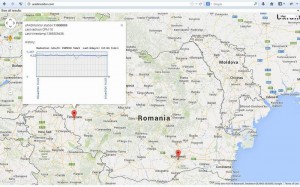
From now on, also available on: http://uradmonitor.com/
radhoo, Thu Jan 09 2014, 11:36PM
There are a few uRADMonitor units already up and running. Here is live radiation feed mapped to location on a Google Maps layer:

From now on, also available on: http://uradmonitor.com/
Re: Global Radiation monitoring system
Ash Small, Fri Jan 10 2014, 02:30AM
Do you have any plans to get any into Japan, Radhoo, or would the new 'Fuk 'hush' ima' laws there mean that anyone reporting on radiation there risks up to 10 years in prison?
(There are plenty of other websites reporting this faschism)
Ash Small, Fri Jan 10 2014, 02:30AM
Do you have any plans to get any into Japan, Radhoo, or would the new 'Fuk 'hush' ima' laws there mean that anyone reporting on radiation there risks up to 10 years in prison?

(There are plenty of other websites reporting this faschism)

Re: Global Radiation monitoring system
radhoo, Fri Jan 10 2014, 09:10AM
Hi Ash,
I plan to make the units available for anyone, anywhere. The exact location or user identity is not disclosed when plotting the data, so people in Japan using this should be ok. It is up to the end user to decide where and if to power up such a device.
LE: safecast does a lot of measurements in japan, here is their network: . So it seems it is possible to do this after all.
. So it seems it is possible to do this after all.
radhoo, Fri Jan 10 2014, 09:10AM
Hi Ash,
I plan to make the units available for anyone, anywhere. The exact location or user identity is not disclosed when plotting the data, so people in Japan using this should be ok. It is up to the end user to decide where and if to power up such a device.
LE: safecast does a lot of measurements in japan, here is their network:
 . So it seems it is possible to do this after all.
. So it seems it is possible to do this after all.Re: Global Radiation monitoring system
Proud Mary, Fri Jan 10 2014, 12:20PM
According to the highly respected Woods Hole Oceanographic Institution, marine radioactive pollution from Fukushima will "arrive on the West Coast of North America some time in late 2013 or 2014." Right now, in fact.
This may well create American public interest in our Radhoo's global monitoring poject.
Proud Mary, Fri Jan 10 2014, 12:20PM
According to the highly respected Woods Hole Oceanographic Institution, marine radioactive pollution from Fukushima will "arrive on the West Coast of North America some time in late 2013 or 2014." Right now, in fact.

This may well create American public interest in our Radhoo's global monitoring poject.
Re: Global Radiation monitoring system
radhoo, Sat Jan 11 2014, 07:34PM
First uRADMonitor in US has become operational today in Chicago, IL . You can see the data on .
.
radhoo, Sat Jan 11 2014, 07:34PM
First uRADMonitor in US has become operational today in Chicago, IL . You can see the data on
 .
.Re: Global Radiation monitoring system
radhoo, Tue Jan 14 2014, 11:06AM
As I was preparing to ship out two additional units #11000003 and #11000004, one to Denmark and one to USA, I had to run a quick test to make sure the two units are properly calibrated. So my plan was to verify the readings for two scenarios: (1) exposure to a radioactive check source and (2) natural background exposure. For both, commercial dosimeters were set in place as a reference. One was the Terra-P MKS-05 and the second the Radex 1706.
The results were excellent, both for the consistency of results recorded by the two uRADMonitor devices, but also when comparing the estimated equivalent dose computed, with that displayed on the Terra-P and Radex 1706 for both scenarios.
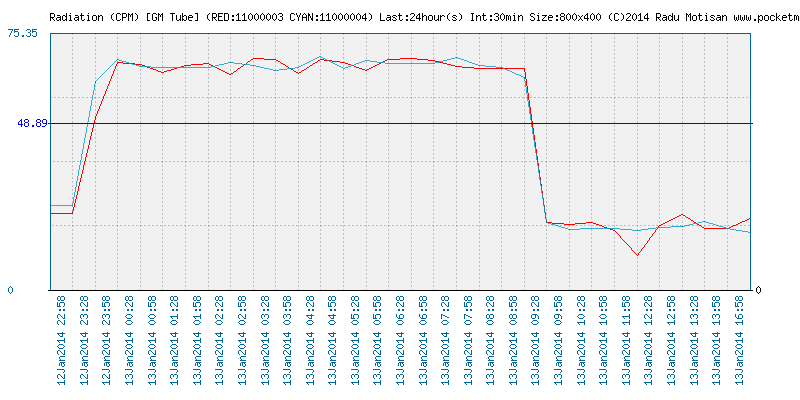
The higher values correspond to the exposure to the radiation emitted from the Torrite sample, exactly as shown in the setup pictures on my blog. Both uRADMonitor units have registered consistent values, 0.40uSV/h for the Thorite sample, and 0.12uSV/h for the background radiation (in the right side of the graphs, where the check source was removed as per scenario no. 2).
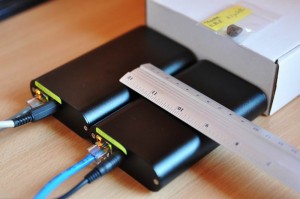
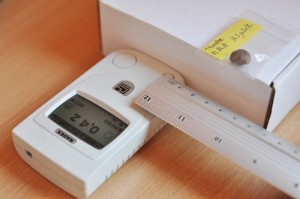
Complete experiment details, and pictures of the setup used, can be seen here:
radhoo, Tue Jan 14 2014, 11:06AM
As I was preparing to ship out two additional units #11000003 and #11000004, one to Denmark and one to USA, I had to run a quick test to make sure the two units are properly calibrated. So my plan was to verify the readings for two scenarios: (1) exposure to a radioactive check source and (2) natural background exposure. For both, commercial dosimeters were set in place as a reference. One was the Terra-P MKS-05 and the second the Radex 1706.
The results were excellent, both for the consistency of results recorded by the two uRADMonitor devices, but also when comparing the estimated equivalent dose computed, with that displayed on the Terra-P and Radex 1706 for both scenarios.

The higher values correspond to the exposure to the radiation emitted from the Torrite sample, exactly as shown in the setup pictures on my blog. Both uRADMonitor units have registered consistent values, 0.40uSV/h for the Thorite sample, and 0.12uSV/h for the background radiation (in the right side of the graphs, where the check source was removed as per scenario no. 2).


Complete experiment details, and pictures of the setup used, can be seen here:

Re: Global Radiation monitoring system
Mads Barnkob, Tue Jan 21 2014, 06:11PM
Unit #11000003 is now live at: and
and 
I will post pictures of the installation in the upcoming weekend.
Mads Barnkob, Tue Jan 21 2014, 06:11PM
Unit #11000003 is now live at:
 and
and 
I will post pictures of the installation in the upcoming weekend.
Re: Global Radiation monitoring system
Conundrum, Tue Jan 21 2014, 06:57PM
I can test one here, have a few sources to try it with and several working counters thanks to Stella.
Can hook it up to a colleagues broadband, they leave the router on all the time so this should be OK.
Conundrum, Tue Jan 21 2014, 06:57PM
I can test one here, have a few sources to try it with and several working counters thanks to Stella.
Can hook it up to a colleagues broadband, they leave the router on all the time so this should be OK.
Re: Global Radiation monitoring system
radhoo, Wed Jan 22 2014, 07:01PM
Interesting to see that the readings at your location are constantly higher than the calibration data recorded here prior to shipping the unit to you.
@Conundrum: that would be great!
radhoo, Wed Jan 22 2014, 07:01PM
Mads Barnkob wrote ...
Unit #11000003 is now live at: and
and 
I will post pictures of the installation in the upcoming weekend.
Looks great, Mads, and looking forward to your pictures!Unit #11000003 is now live at:
 and
and 
I will post pictures of the installation in the upcoming weekend.
Interesting to see that the readings at your location are constantly higher than the calibration data recorded here prior to shipping the unit to you.
@Conundrum: that would be great!
Re: Global Radiation monitoring system
Mads Barnkob, Wed Jan 22 2014, 10:02PM
It is located half a meter from my window out on the balcony, on the 2nd floor(top), approximately 8 meters above ground. Other than that, it must just be my location in the world that makes a difference or tube characteristics changed in shipping? :)
Mads Barnkob, Wed Jan 22 2014, 10:02PM
radhoo wrote ...
Interesting to see that the readings at your location are constantly higher than the calibration data recorded here prior to shipping the unit to you.
@Conundrum: that would be great!
Mads Barnkob wrote ...
Unit #11000003 is now live at: and
and 
I will post pictures of the installation in the upcoming weekend.
Looks great, Mads, and looking forward to your pictures!Unit #11000003 is now live at:
 and
and 
I will post pictures of the installation in the upcoming weekend.
Interesting to see that the readings at your location are constantly higher than the calibration data recorded here prior to shipping the unit to you.
@Conundrum: that would be great!
It is located half a meter from my window out on the balcony, on the 2nd floor(top), approximately 8 meters above ground. Other than that, it must just be my location in the world that makes a difference or tube characteristics changed in shipping? :)
Re: Global Radiation monitoring system
radhoo, Thu Jan 23 2014, 07:10AM
I would assume something is different at your location, unless the height has such a great impact. (I will test this too, soon, also model C will also have an altimeter built in).
Normally we all should have mounted our units at 1m above the ground, but this is not always possible for practical reasons.
Talking about variations, in a similar way, the readings in Chicago show smaller values (11000002).
Waiting for Tobias to add his unit (11000004), and another one in Germany as I am curios to see what we find there.
Nevertheless these are all small values, hope to never see them on a rising trend ("uptrend"?)
radhoo, Thu Jan 23 2014, 07:10AM
I would assume something is different at your location, unless the height has such a great impact. (I will test this too, soon, also model C will also have an altimeter built in).
Normally we all should have mounted our units at 1m above the ground, but this is not always possible for practical reasons.
Talking about variations, in a similar way, the readings in Chicago show smaller values (11000002).
Waiting for Tobias to add his unit (11000004), and another one in Germany as I am curios to see what we find there.
Nevertheless these are all small values, hope to never see them on a rising trend ("uptrend"?)
Re: Global Radiation monitoring system
Proud Mary, Thu Jan 23 2014, 10:16AM
I shall be joining the project soon, and so have a few words to say.
I don't thinking it likely that the characteristics of Mads' GM tube will have changed significantly in transit.
Height above ground is a key factor in environmental monitoring. Airborne particulates descending to earth will only spend a very short time in close proximity to the detector, but will remain on the ground below for very long periods. Where there is a significant distance between the ground and the detector, the radiation coming from particles fallen to the ground will be attenuated by the air, and still more so in rain, mist and fog. This is because the gamma intensity - in our case measured in counts per second - decreases with the square of the distance, which means that if we double the distance to the ground, counts due to the ground will go down four times.
Clearly, this air attenuation is selective for gamma photon energy, with high energy photons being able to penetrate greater distances through the air, and still have enough energy left to knock electrons out of the GM tube wall, which is the main mode of gamma detection in GM tubes.
Proud Mary, Thu Jan 23 2014, 10:16AM
radhoo wrote ...
I would assume something is different at your location, unless the height has such a great impact. (I will test this too, soon, also model C will also have an altimeter built in).
Normally we all should have mounted our units at 1m above the ground, but this is not always possible for practical reasons.
Talking about variations, in a similar way, the readings in Chicago show smaller values (11000002).
Waiting for Tobias to add his unit (11000004), and another one in Germany as I am curios to see what we find there.
Nevertheless these are all small values, hope to never see them on a rising trend ("uptrend"?)
I would assume something is different at your location, unless the height has such a great impact. (I will test this too, soon, also model C will also have an altimeter built in).
Normally we all should have mounted our units at 1m above the ground, but this is not always possible for practical reasons.
Talking about variations, in a similar way, the readings in Chicago show smaller values (11000002).
Waiting for Tobias to add his unit (11000004), and another one in Germany as I am curios to see what we find there.
Nevertheless these are all small values, hope to never see them on a rising trend ("uptrend"?)
I shall be joining the project soon, and so have a few words to say.
I don't thinking it likely that the characteristics of Mads' GM tube will have changed significantly in transit.
Height above ground is a key factor in environmental monitoring. Airborne particulates descending to earth will only spend a very short time in close proximity to the detector, but will remain on the ground below for very long periods. Where there is a significant distance between the ground and the detector, the radiation coming from particles fallen to the ground will be attenuated by the air, and still more so in rain, mist and fog. This is because the gamma intensity - in our case measured in counts per second - decreases with the square of the distance, which means that if we double the distance to the ground, counts due to the ground will go down four times.
Clearly, this air attenuation is selective for gamma photon energy, with high energy photons being able to penetrate greater distances through the air, and still have enough energy left to knock electrons out of the GM tube wall, which is the main mode of gamma detection in GM tubes.
Re: Global Radiation monitoring system
Sync, Thu Jan 23 2014, 11:35AM
The reason is most likely just other geological features or Mads balcony emits a few betas.
In Germany the nation wide ODL (Ortsdosisleistung/local dose rate) network has standardized to a tube heigt of 1.3m off ground and at least 400m² of free space around a node.
The problem being, without knowing the isotope footprint at the location you cannot be sure that hard betas will not offset the measured rate.
Sometimes there can be a misinterpetation of up to 2-3 times the actual value because using the tubes at the very low end of their range causes nonlinearities that you cannot easily compensate.
The Germans use VacuTec 70031 tubes which have a very high sensitivity, 840counts per minute at 1µSv/h [¹³â·Cs].
Sync, Thu Jan 23 2014, 11:35AM
The reason is most likely just other geological features or Mads balcony emits a few betas.
In Germany the nation wide ODL (Ortsdosisleistung/local dose rate) network has standardized to a tube heigt of 1.3m off ground and at least 400m² of free space around a node.
The problem being, without knowing the isotope footprint at the location you cannot be sure that hard betas will not offset the measured rate.
Sometimes there can be a misinterpetation of up to 2-3 times the actual value because using the tubes at the very low end of their range causes nonlinearities that you cannot easily compensate.
The Germans use VacuTec 70031 tubes which have a very high sensitivity, 840counts per minute at 1µSv/h [¹³â·Cs].
Re: Global Radiation monitoring system
tobias, Thu Jan 23 2014, 11:38AM
PM, that behavior goes against the higher readings by Mad's unit.
tobias, Thu Jan 23 2014, 11:38AM
PM, that behavior goes against the higher readings by Mad's unit.
Re: Global Radiation monitoring system
Proud Mary, Thu Jan 23 2014, 01:20PM
But radiation from local geology - especially radon geology - and building contruction materials are major contributors to the total background count. The aggregates used in concrete mixes can and sometimes do cause significant differences in radioactivity from concretes that can affect readings in single buildings, groups of buildings, towns, roads or concrete transport structures, and so on. *
Cosmic rays form a significant part of any background count, and counting will not be significantly affected by changes in detector height in the decametre regime. I found that when a very large glass GM tube type G12 was shielded (actually filtered) with 10mm Pb/2mm Al, the diurnal variation due to cosmic rays was easily observed without statistical enhancement, an xy time/counts plot resembling a very 'flattened' sine-wave.
Here are some average backgrounds, country by country:
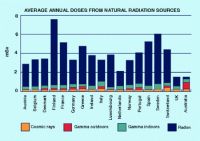
* Radiological Protection Principles concerning the Natural Radioactivity of Building Materials, European Commission 112, 1999, free pdf here
*NATURAL RADIOACTIVITY IN BUILDING MATERIALS - CZECH EXPERIENCE AND EUROPEAN LEGISLATION Proceedings of the American Association of Radon Scientists and Technologists 2008 International Symposium Las Vegas NV, September 14-17, 2008, free pdf here:
*Radioactivity in Building Materials: a first Overview of the European Scenario Italian National Institute of Occupational Safety and Prevention (ISPESL)Department of Occupational Hygiene, Via Fontana Candida 1, 00040 Monteporzio Catone
(Rome), Italy, free pdf here:
Tobias, this one is specially for you: THE RADIOLOGICAL ACCIDENT IN GOIANIA International Atomic Energy Agency, Vienna, 1988, free pdf here:
Proud Mary, Thu Jan 23 2014, 01:20PM
tobias wrote ...
PM, that behavior goes against the higher readings by Mad's unit.
PM, that behavior goes against the higher readings by Mad's unit.
But radiation from local geology - especially radon geology - and building contruction materials are major contributors to the total background count. The aggregates used in concrete mixes can and sometimes do cause significant differences in radioactivity from concretes that can affect readings in single buildings, groups of buildings, towns, roads or concrete transport structures, and so on. *
Cosmic rays form a significant part of any background count, and counting will not be significantly affected by changes in detector height in the decametre regime. I found that when a very large glass GM tube type G12 was shielded (actually filtered) with 10mm Pb/2mm Al, the diurnal variation due to cosmic rays was easily observed without statistical enhancement, an xy time/counts plot resembling a very 'flattened' sine-wave.
Here are some average backgrounds, country by country:

* Radiological Protection Principles concerning the Natural Radioactivity of Building Materials, European Commission 112, 1999, free pdf here

*NATURAL RADIOACTIVITY IN BUILDING MATERIALS - CZECH EXPERIENCE AND EUROPEAN LEGISLATION Proceedings of the American Association of Radon Scientists and Technologists 2008 International Symposium Las Vegas NV, September 14-17, 2008, free pdf here:

*Radioactivity in Building Materials: a first Overview of the European Scenario Italian National Institute of Occupational Safety and Prevention (ISPESL)Department of Occupational Hygiene, Via Fontana Candida 1, 00040 Monteporzio Catone
(Rome), Italy, free pdf here:

Tobias, this one is specially for you: THE RADIOLOGICAL ACCIDENT IN GOIANIA International Atomic Energy Agency, Vienna, 1988, free pdf here:

Re: Global Radiation monitoring system
radhoo, Thu Jan 23 2014, 06:09PM
However the next models will have an altimeter, allowing for some compensation for the radiation absorption in air - if we consider the usual model, also suggested by Stella : airborne radioactive particles falling down to the soil and emitting radiation from that level.
ps: Regarding the hard betas, keep in mind that the units are enclosed in a ~ 1mm thick aluminum case, so what we're seeing is almost entirely gamma radiation.
ps2: #12000008 went online today in Germany
Nice one! :)
radhoo, Thu Jan 23 2014, 06:09PM
Sync wrote ...
In Germany the nation wide ODL (Ortsdosisleistung/local dose rate) network has standardized to a tube heigt of 1.3m off ground and at least 400m² of free space around a node.
I it is very similar here too. For all the units I sent out I recommended mounting them at 1m above the soil, but this is not possible for practical reasons.In Germany the nation wide ODL (Ortsdosisleistung/local dose rate) network has standardized to a tube heigt of 1.3m off ground and at least 400m² of free space around a node.
However the next models will have an altimeter, allowing for some compensation for the radiation absorption in air - if we consider the usual model, also suggested by Stella : airborne radioactive particles falling down to the soil and emitting radiation from that level.
ps: Regarding the hard betas, keep in mind that the units are enclosed in a ~ 1mm thick aluminum case, so what we're seeing is almost entirely gamma radiation.
ps2: #12000008 went online today in Germany

Nice one! :)
Re: Global Radiation monitoring system
Proud Mary, Thu Jan 23 2014, 08:59PM
...with a small but significant percentage of cosmic ray muons, showing diurnal and semi-diurnal variations including modulation by the 22-year solar cycle.
The state of the solar cycle should be considered when analysing trends in counting rate.
Proud Mary, Thu Jan 23 2014, 08:59PM
radhoo wrote ...
ps: Regarding the hard betas, keep in mind that the units are enclosed in a ~ 1mm thick aluminum case, so what we're seeing is almost entirely gamma radiation.
ps: Regarding the hard betas, keep in mind that the units are enclosed in a ~ 1mm thick aluminum case, so what we're seeing is almost entirely gamma radiation.
...with a small but significant percentage of cosmic ray muons, showing diurnal and semi-diurnal variations including modulation by the 22-year solar cycle.
The state of the solar cycle should be considered when analysing trends in counting rate.
Re: Global Radiation monitoring system
Mads Barnkob, Thu Jan 23 2014, 09:07PM
I moved the unit from a protective wooden box and it is now directly exposed to the weather in a water tight plastic pouch. The temperature dropped and so did the sensitivity of the tube, atleast the CPM fell about 1-2 cpm in average.
Mads Barnkob, Thu Jan 23 2014, 09:07PM
I moved the unit from a protective wooden box and it is now directly exposed to the weather in a water tight plastic pouch. The temperature dropped and so did the sensitivity of the tube, atleast the CPM fell about 1-2 cpm in average.
Re: Global Radiation monitoring system
radhoo, Thu Jan 23 2014, 09:48PM
Nice one, Mads. Don't forget to take photos of the two enclosures/setups - it would probably be interesting to see the differences, as the level drop is significant.
radhoo, Thu Jan 23 2014, 09:48PM
Nice one, Mads. Don't forget to take photos of the two enclosures/setups - it would probably be interesting to see the differences, as the level drop is significant.
Re: Global Radiation monitoring system
Mads Barnkob, Thu Jan 23 2014, 10:11PM
I only moved it from the drawer to the small post it is sitting on. Perhaps the Ikea furniture have radiation enhancing abilities. Could be the proximity to the brick wall... Not exactly a pretty installation, but what I had time for before weekend :)
I plan on moving it about a meter further away form the building when I get time to make a power supply cable that is long enough.
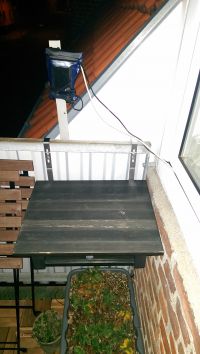
Mads Barnkob, Thu Jan 23 2014, 10:11PM
I only moved it from the drawer to the small post it is sitting on. Perhaps the Ikea furniture have radiation enhancing abilities. Could be the proximity to the brick wall... Not exactly a pretty installation, but what I had time for before weekend :)
I plan on moving it about a meter further away form the building when I get time to make a power supply cable that is long enough.

Re: Global Radiation monitoring system
Patrick, Thu Jan 23 2014, 10:11PM
how much do these SI-29BG tubes cost you each?
I am re-reading this entire thread, im willing to participate if the California pacific coast interests you.
my location:
243 meters above sea level. Pacific ocean is 166 km directly west.
EDIT: what would be really cool is to take one of these 100 meters above ground level in a UAV.
Patrick, Thu Jan 23 2014, 10:11PM
how much do these SI-29BG tubes cost you each?
I am re-reading this entire thread, im willing to participate if the California pacific coast interests you.
my location:
243 meters above sea level. Pacific ocean is 166 km directly west.
EDIT: what would be really cool is to take one of these 100 meters above ground level in a UAV.
Re: Global Radiation monitoring system
Shrad, Fri Jan 24 2014, 08:15AM
I'd also be willing to participate, but will need to consider things beforehands like tidying my mess etc...
if interested, I can help in plotting data variation on a map for a period of time, but a wider network would be needed over an area to achieve good interpolation
Shrad, Fri Jan 24 2014, 08:15AM
I'd also be willing to participate, but will need to consider things beforehands like tidying my mess etc...
if interested, I can help in plotting data variation on a map for a period of time, but a wider network would be needed over an area to achieve good interpolation
Re: Global Radiation monitoring system
Conundrum, Sat Jan 25 2014, 01:49PM
Wonder why there is such a profound effect on the tube from temperature?
Sure it isn't some other part drifting such as the zeners?
IIRC silicon is about -2mV per Celsius, could also be something in the HV circuit sensitive to humidity.
Re. UAV, I had that thought too.
I might hack together a small module with one of the new tubes and see how much the count increases with altitude.
Conundrum, Sat Jan 25 2014, 01:49PM
Wonder why there is such a profound effect on the tube from temperature?
Sure it isn't some other part drifting such as the zeners?
IIRC silicon is about -2mV per Celsius, could also be something in the HV circuit sensitive to humidity.
Re. UAV, I had that thought too.
I might hack together a small module with one of the new tubes and see how much the count increases with altitude.
Re: Global Radiation monitoring system
Proud Mary, Sat Jan 25 2014, 02:35PM
Why do you think that the sensitivity of the tube had dropped? One of the reasons that GM tubes have reamined popular despite their very basic character, is because they are quite insensitive to ambient changes.
Much more likely that your tube is detecting fewer particles because there a fewer particles to detect. Perhaps you should think of air temperature as being part of a weather process. It may be colder because the wind is blowing from a different direction, for example, so fewer radioactive airborne particulates are arriving at Haus Barnkop than happens when the wind is blowing from a contaminated area. The height of airborne particulate smogs will rise and fall with temperature and affect counting, as does the release of radon from rocks as cold weather splits them. Then there is the diurnal and semi-diurnal flux of solar cosmic rays which will certainly be very significant when you are talking about 1 - 2 cpm.
The re-suspension of Chernobyl particulates by high winds on Swedish mountains might also be carried aloft by northerly winds, but fall to the ground as precipitation before reaching Denmark when the temperature drops.
Marine pollution can be re-suspended in the air as waves break on shore, for example, giving another example of how a change of wind direction could alter counting rates inland, that might - or might not - be associated with a rise in air temperature.
The interaction of weather systems allows many possible scenarios in which a falling (or rising) air temperature may be associated with a lower or higher counting rate, but is not its cause.
Wind direction is, I think, a far more useful parameter than height above ground, which is constant, and tells us very little once the baseline has been established.
Proud Mary, Sat Jan 25 2014, 02:35PM
Mads Barnkob wrote ...
I moved the unit from a protective wooden box and it is now directly exposed to the weather in a water tight plastic pouch. The temperature dropped and so did the sensitivity of the tube, atleast the CPM fell about 1-2 cpm in average.
I moved the unit from a protective wooden box and it is now directly exposed to the weather in a water tight plastic pouch. The temperature dropped and so did the sensitivity of the tube, atleast the CPM fell about 1-2 cpm in average.
Why do you think that the sensitivity of the tube had dropped? One of the reasons that GM tubes have reamined popular despite their very basic character, is because they are quite insensitive to ambient changes.
Much more likely that your tube is detecting fewer particles because there a fewer particles to detect. Perhaps you should think of air temperature as being part of a weather process. It may be colder because the wind is blowing from a different direction, for example, so fewer radioactive airborne particulates are arriving at Haus Barnkop than happens when the wind is blowing from a contaminated area. The height of airborne particulate smogs will rise and fall with temperature and affect counting, as does the release of radon from rocks as cold weather splits them. Then there is the diurnal and semi-diurnal flux of solar cosmic rays which will certainly be very significant when you are talking about 1 - 2 cpm.
The re-suspension of Chernobyl particulates by high winds on Swedish mountains might also be carried aloft by northerly winds, but fall to the ground as precipitation before reaching Denmark when the temperature drops.
Marine pollution can be re-suspended in the air as waves break on shore, for example, giving another example of how a change of wind direction could alter counting rates inland, that might - or might not - be associated with a rise in air temperature.
The interaction of weather systems allows many possible scenarios in which a falling (or rising) air temperature may be associated with a lower or higher counting rate, but is not its cause.
Wind direction is, I think, a far more useful parameter than height above ground, which is constant, and tells us very little once the baseline has been established.
Re: Global Radiation monitoring system
Conundrum, Sat Jan 25 2014, 03:41PM
My equipment did show a slight increase during the last large solar flare, and also during an intense thunderstorm.
It might also be worth adding an E field monitor so that this can be compensated for and logged.
Re. Altitude, what about a kite? Low tech but useful and on a windy but gust free day a box kite would be a reliable way to do tests.
Conundrum, Sat Jan 25 2014, 03:41PM
My equipment did show a slight increase during the last large solar flare, and also during an intense thunderstorm.
It might also be worth adding an E field monitor so that this can be compensated for and logged.
Re. Altitude, what about a kite? Low tech but useful and on a windy but gust free day a box kite would be a reliable way to do tests.
Re: Global Radiation monitoring system
Proud Mary, Sat Jan 25 2014, 03:54PM
Perhaps, but not nearly such a powerful explanatory tool as the wind direction and wind speed indications of a simple home weather station.
Do you remember Benjamin Franklin's famous experiment with an electrified key:
"The kite being raised, a considerable time elapsed before there was any appearance of its being electrified. One very promising cloud had passed over it without any effect; when, at length, just as he was beginning to despair of his contrivance, he observed some loose threads of the hempen string to stand erect, and to avoid one another, just as if they had been suspended on a common conductor. Struck with this promising appearance, he immediately presented his knuckle to the key, and (let the reader judge of the exquisite pleasure he must have felt at that moment) the discovery was complete. He perceived a very evident electric spark. Others succeeded, even before the string was wet, so as to put the matter past all dispute, and when the rain had wet the string he collected electric fire very copiously. This happened in June 1752, a month after the electricians in France had verified the same theory, but before he heard of anything they had done."
Electrocuted somewhere in Guernsey.
Proud Mary, Sat Jan 25 2014, 03:54PM
Conundrum wrote ...
My equipment did show a slight increase during the last large solar flare, and also during an intense thunderstorm.
It might also be worth adding an E field monitor so that this can be compensated for and logged.
My equipment did show a slight increase during the last large solar flare, and also during an intense thunderstorm.
It might also be worth adding an E field monitor so that this can be compensated for and logged.
Perhaps, but not nearly such a powerful explanatory tool as the wind direction and wind speed indications of a simple home weather station.
Conundrum wrote ...
Re. Altitude, what about a kite? Low tech but useful and on a windy but gust free day a box kite would be a reliable way to do tests.
Re. Altitude, what about a kite? Low tech but useful and on a windy but gust free day a box kite would be a reliable way to do tests.
Do you remember Benjamin Franklin's famous experiment with an electrified key:
"The kite being raised, a considerable time elapsed before there was any appearance of its being electrified. One very promising cloud had passed over it without any effect; when, at length, just as he was beginning to despair of his contrivance, he observed some loose threads of the hempen string to stand erect, and to avoid one another, just as if they had been suspended on a common conductor. Struck with this promising appearance, he immediately presented his knuckle to the key, and (let the reader judge of the exquisite pleasure he must have felt at that moment) the discovery was complete. He perceived a very evident electric spark. Others succeeded, even before the string was wet, so as to put the matter past all dispute, and when the rain had wet the string he collected electric fire very copiously. This happened in June 1752, a month after the electricians in France had verified the same theory, but before he heard of anything they had done."
Electrocuted somewhere in Guernsey.
Re: Global Radiation monitoring system
Mads Barnkob, Sat Jan 25 2014, 07:39PM
That was my first thought at the time as I moved it from the wooden enclosure to the post and its temperature dropped over 10 degrees, the counting dropped at the same instant. But the counting also went up again without temperature changing when I moved it further away.
I suspect it could be the lead plates used at the edges of the roof construction that shielded the detector.
Mads Barnkob, Sat Jan 25 2014, 07:39PM
Proud Mary wrote ...
Why do you think that the sensitivity of the tube had dropped? One of the reasons that GM tubes have reamined popular despite their very basic character, is because they are quite insensitive to ambient changes.
Much more likely that your tube is detecting fewer particles because there a fewer particles to detect. Perhaps you should think of air temperature as being part of a weather process. It may be colder because the wind is blowing from a different direction, for example, so fewer radioactive airborne particulates are arriving at Haus Barnkop than happens when the wind is blowing from a contaminated area. The height of airborne particulate smogs will rise and fall with temperature and affect counting, as does the release of radon from rocks as cold weather splits them. Then there is the diurnal and semi-diurnal flux of solar cosmic rays which will certainly be very significant when you are talking about 1 - 2 cpm.
Mads Barnkob wrote ...
I moved the unit from a protective wooden box and it is now directly exposed to the weather in a water tight plastic pouch. The temperature dropped and so did the sensitivity of the tube, atleast the CPM fell about 1-2 cpm in average.
I moved the unit from a protective wooden box and it is now directly exposed to the weather in a water tight plastic pouch. The temperature dropped and so did the sensitivity of the tube, atleast the CPM fell about 1-2 cpm in average.
Why do you think that the sensitivity of the tube had dropped? One of the reasons that GM tubes have reamined popular despite their very basic character, is because they are quite insensitive to ambient changes.
Much more likely that your tube is detecting fewer particles because there a fewer particles to detect. Perhaps you should think of air temperature as being part of a weather process. It may be colder because the wind is blowing from a different direction, for example, so fewer radioactive airborne particulates are arriving at Haus Barnkop than happens when the wind is blowing from a contaminated area. The height of airborne particulate smogs will rise and fall with temperature and affect counting, as does the release of radon from rocks as cold weather splits them. Then there is the diurnal and semi-diurnal flux of solar cosmic rays which will certainly be very significant when you are talking about 1 - 2 cpm.
That was my first thought at the time as I moved it from the wooden enclosure to the post and its temperature dropped over 10 degrees, the counting dropped at the same instant. But the counting also went up again without temperature changing when I moved it further away.
I suspect it could be the lead plates used at the edges of the roof construction that shielded the detector.
Re: Global Radiation monitoring system
Proud Mary, Sat Jan 25 2014, 08:30PM
Many of the gamma rays you are detecting will be coming from the bricks, concrete, cement, and roof tiles in your house, so the detector's proximity to the structure will have a significant effect on your total counts.
Also your balcony and your roof is likely to be collecting particulates falling from the sky. The rain gutter, if you have one, will concentrate radionuclides that have fallen as particles or in rain that has fallen on the roof, and could be a very interesting study in its own right - potentially more sensitive (because of greater effective capture area/aperture) than the detector located in the 'standard' position 1m above the ground.
Proud Mary, Sat Jan 25 2014, 08:30PM
Mads Barnkob wrote ...
That was my first thought at the time as I moved it from the wooden enclosure to the post and its temperature dropped over 10 degrees, the counting dropped at the same instant. But the counting also went up again without temperature changing when I moved it further away.
I suspect it could be the lead plates used at the edges of the roof construction that shielded the detector.
Proud Mary wrote ...
Why do you think that the sensitivity of the tube had dropped? One of the reasons that GM tubes have reamined popular despite their very basic character, is because they are quite insensitive to ambient changes.
Much more likely that your tube is detecting fewer particles because there a fewer particles to detect. Perhaps you should think of air temperature as being part of a weather process. It may be colder because the wind is blowing from a different direction, for example, so fewer radioactive airborne particulates are arriving at Haus Barnkop than happens when the wind is blowing from a contaminated area. The height of airborne particulate smogs will rise and fall with temperature and affect counting, as does the release of radon from rocks as cold weather splits them. Then there is the diurnal and semi-diurnal flux of solar cosmic rays which will certainly be very significant when you are talking about 1 - 2 cpm.
Mads Barnkob wrote ...
I moved the unit from a protective wooden box and it is now directly exposed to the weather in a water tight plastic pouch. The temperature dropped and so did the sensitivity of the tube, atleast the CPM fell about 1-2 cpm in average.
I moved the unit from a protective wooden box and it is now directly exposed to the weather in a water tight plastic pouch. The temperature dropped and so did the sensitivity of the tube, atleast the CPM fell about 1-2 cpm in average.
Why do you think that the sensitivity of the tube had dropped? One of the reasons that GM tubes have reamined popular despite their very basic character, is because they are quite insensitive to ambient changes.
Much more likely that your tube is detecting fewer particles because there a fewer particles to detect. Perhaps you should think of air temperature as being part of a weather process. It may be colder because the wind is blowing from a different direction, for example, so fewer radioactive airborne particulates are arriving at Haus Barnkop than happens when the wind is blowing from a contaminated area. The height of airborne particulate smogs will rise and fall with temperature and affect counting, as does the release of radon from rocks as cold weather splits them. Then there is the diurnal and semi-diurnal flux of solar cosmic rays which will certainly be very significant when you are talking about 1 - 2 cpm.
That was my first thought at the time as I moved it from the wooden enclosure to the post and its temperature dropped over 10 degrees, the counting dropped at the same instant. But the counting also went up again without temperature changing when I moved it further away.
I suspect it could be the lead plates used at the edges of the roof construction that shielded the detector.
Mads Barnkob wrote ...
That was my first thought at the time as I moved it from the wooden enclosure to the post and its temperature dropped over 10 degrees, the counting dropped at the same instant. But the counting also went up again without temperature changing when I moved it further away.
I suspect it could be the lead plates used at the edges of the roof construction that shielded the detector.
Proud Mary wrote ...
Why do you think that the sensitivity of the tube had dropped? One of the reasons that GM tubes have reamined popular despite their very basic character, is because they are quite insensitive to ambient changes.
Much more likely that your tube is detecting fewer particles because there a fewer particles to detect. Perhaps you should think of air temperature as being part of a weather process. It may be colder because the wind is blowing from a different direction, for example, so fewer radioactive airborne particulates are arriving at Haus Barnkop than happens when the wind is blowing from a contaminated area. The height of airborne particulate smogs will rise and fall with temperature and affect counting, as does the release of radon from rocks as cold weather splits them. Then there is the diurnal and semi-diurnal flux of solar cosmic rays which will certainly be very significant when you are talking about 1 - 2 cpm.
Mads Barnkob wrote ...
I moved the unit from a protective wooden box and it is now directly exposed to the weather in a water tight plastic pouch. The temperature dropped and so did the sensitivity of the tube, atleast the CPM fell about 1-2 cpm in average.
I moved the unit from a protective wooden box and it is now directly exposed to the weather in a water tight plastic pouch. The temperature dropped and so did the sensitivity of the tube, atleast the CPM fell about 1-2 cpm in average.
Why do you think that the sensitivity of the tube had dropped? One of the reasons that GM tubes have reamined popular despite their very basic character, is because they are quite insensitive to ambient changes.
Much more likely that your tube is detecting fewer particles because there a fewer particles to detect. Perhaps you should think of air temperature as being part of a weather process. It may be colder because the wind is blowing from a different direction, for example, so fewer radioactive airborne particulates are arriving at Haus Barnkop than happens when the wind is blowing from a contaminated area. The height of airborne particulate smogs will rise and fall with temperature and affect counting, as does the release of radon from rocks as cold weather splits them. Then there is the diurnal and semi-diurnal flux of solar cosmic rays which will certainly be very significant when you are talking about 1 - 2 cpm.
That was my first thought at the time as I moved it from the wooden enclosure to the post and its temperature dropped over 10 degrees, the counting dropped at the same instant. But the counting also went up again without temperature changing when I moved it further away.
I suspect it could be the lead plates used at the edges of the roof construction that shielded the detector.
Many of the gamma rays you are detecting will be coming from the bricks, concrete, cement, and roof tiles in your house, so the detector's proximity to the structure will have a significant effect on your total counts.
Also your balcony and your roof is likely to be collecting particulates falling from the sky. The rain gutter, if you have one, will concentrate radionuclides that have fallen as particles or in rain that has fallen on the roof, and could be a very interesting study in its own right - potentially more sensitive (because of greater effective capture area/aperture) than the detector located in the 'standard' position 1m above the ground.
Re: Global Radiation monitoring system
radhoo, Sat Jan 25 2014, 08:37PM
Guys, I'll just post a small update then I'll check out your messages
Here are some news:
I was able to design and manufacture a new PCB, moving from a DIP microcontroller (as in previous models) to SMD. By doing so I save previous space, preparing for the Model B design, that will also feature a LCD to be used not only as a fixed monitoring station, but also as a portable dosimeter.
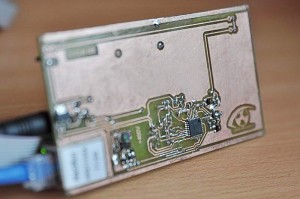 .
.
Some details here.
Finally, some progress on the web portal that shows the centralized data. For now just minor changes, but important ones:
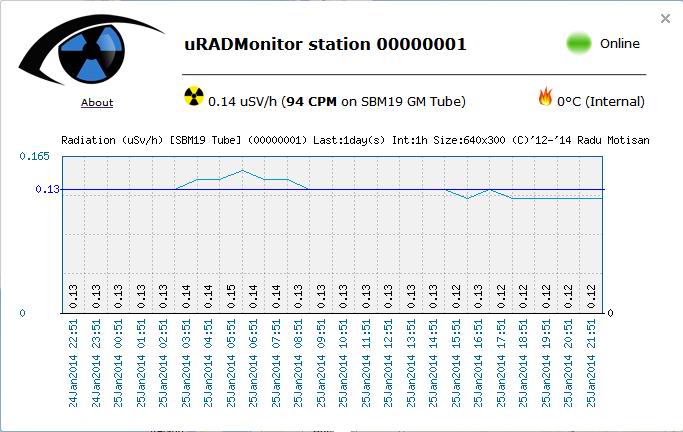
The data is more user friendly and the meaningless numbers are gone. Now the online/offline status of a given station is available . We know this by checking the timestamp of the last data package received from the station. If older than 5 minutes , we consider it offline. Normally , the uRADMOnitor units send radiation measurements every minute.
The portal shows the latest readings: radiation + internal temperature (yes, there is also a temperature sensor inside). Then the bottom of the detailed view window shows the radiation history for the last 24 hours.
More details here.
The portal can be accessed at http://www.uradmonitor.com
radhoo, Sat Jan 25 2014, 08:37PM
Guys, I'll just post a small update then I'll check out your messages
Here are some news:
I was able to design and manufacture a new PCB, moving from a DIP microcontroller (as in previous models) to SMD. By doing so I save previous space, preparing for the Model B design, that will also feature a LCD to be used not only as a fixed monitoring station, but also as a portable dosimeter.
 .
. Some details here.
Finally, some progress on the web portal that shows the centralized data. For now just minor changes, but important ones:

The data is more user friendly and the meaningless numbers are gone. Now the online/offline status of a given station is available . We know this by checking the timestamp of the last data package received from the station. If older than 5 minutes , we consider it offline. Normally , the uRADMOnitor units send radiation measurements every minute.
The portal shows the latest readings: radiation + internal temperature (yes, there is also a temperature sensor inside). Then the bottom of the detailed view window shows the radiation history for the last 24 hours.
More details here.
The portal can be accessed at http://www.uradmonitor.com
Re: Global Radiation monitoring system
radhoo, Sat Jan 25 2014, 09:10PM
radhoo, Sat Jan 25 2014, 09:10PM
wrote ...
how much do these SI-29BG tubes cost you each?
I am re-reading this entire thread, im willing to participate if the California pacific coast interests you.
The tubes getting in my hand are relatively expensive, as now every seller in Ukraine or Russia is aware of Ebay and the prices used there. I'll drop you a PM for a unit. Would be great to have a unit in California! Currently I have run out of cases, but I am expecting more in the next few days. how much do these SI-29BG tubes cost you each?
I am re-reading this entire thread, im willing to participate if the California pacific coast interests you.
Shrad wrote ...
I'd also be willing to participate, but will need to consider things beforehands like tidying my mess etc...
if interested, I can help in plotting data variation on a map for a period of time, but a wider network would be needed over an area to achieve good interpolation
That would be great. Plotting over a larger area is impractical with this model, but model C will feature a GPS receiver combined with an SDCard to log radiation data precisely mapped to location. However the timeframe for developing it goes as far as the end of this year.I'd also be willing to participate, but will need to consider things beforehands like tidying my mess etc...
if interested, I can help in plotting data variation on a map for a period of time, but a wider network would be needed over an area to achieve good interpolation
Conundrum wrote ...
Wonder why there is such a profound effect on the tube from temperature?
Sure it isn't some other part drifting such as the zeners?
Today I had to heat a unit to melt an insulating lacquer layer pulverized over the bottom of the PCB. The temperature went as high as 100 degrees celsius. Then I plugged it to the network: the temperature sensor was still showing >55 degrees celsius but the Geiger counter was counting the normal values! Wonder why there is such a profound effect on the tube from temperature?
Sure it isn't some other part drifting such as the zeners?
Proud Mary wrote ...
Why do you think that the sensitivity of the tube had dropped? One of the reasons that GM tubes have reamined popular despite their very basic character, is because they are quite insensitive to ambient changes.
I agree. I was not expecting to see this today. But the pulses were well between the normal counting interval, despite the very high temperature of the tube, and the entire board.Why do you think that the sensitivity of the tube had dropped? One of the reasons that GM tubes have reamined popular despite their very basic character, is because they are quite insensitive to ambient changes.
Conundrum wrote ...
It might also be worth adding an E field monitor so that this can be compensated for and logged.
Re. Altitude, what about a kite? Low tech but useful and on a windy but gust free day a box kite would be a reliable way to do tests.
I'll do my best to add various sensors that can prove useful correlations to the radiation data, but for now I need to keep to the vital requirements if I am to succeed in ever finishing this project. Currently the plan is Model A (done) + Model B( almost there) + Model C and the server infrastructure (not easy). Regarding the kite, I need very reliable sensors to integrate them easy and convenient to the current design. I am considering the BMP85 sensor, it comes calibrated from the factory, has a reasonable price and very good performance, and... I've worked with it in the past, so I have the code ready.It might also be worth adding an E field monitor so that this can be compensated for and logged.
Re. Altitude, what about a kite? Low tech but useful and on a windy but gust free day a box kite would be a reliable way to do tests.
Mads Barnkob wrote ...
I suspect it could be the lead plates used at the edges of the roof construction that shielded the detector.
I suspect it could be the lead plates used at the edges of the roof construction that shielded the detector.
Proud Mary wrote ...
Also your balcony and your roof is likely to be collecting particulates falling from the sky. The rain gutter, if you have one, will concentrate radionuclides that have fallen as particles or in rain that has fallen on the roof, and could be a very interesting study in its own right - potentially more sensitive (because of greater effective capture area/aperture) than the detector located in the 'standard' position 1m above the ground.
Mads, do you have pics of both the places ? Would love to have a look. Stella's assumption seems very reasonable.Also your balcony and your roof is likely to be collecting particulates falling from the sky. The rain gutter, if you have one, will concentrate radionuclides that have fallen as particles or in rain that has fallen on the roof, and could be a very interesting study in its own right - potentially more sensitive (because of greater effective capture area/aperture) than the detector located in the 'standard' position 1m above the ground.
Re: Global Radiation monitoring system
Mads Barnkob, Sat Jan 25 2014, 09:47PM
At first it was inside the black table also in the first picture, there is a lead plate all along the grey edge behind the unit, it is a part of the edge of the roof construction. I would say that the distance to the rain gutter did not change that much.

The new location is at the edge of the balcony, adding the rubber duck did not affect readings ;) It only works as adding Wife-Acceptance-Factor to having measuring devices installed on the balcony.

Mads Barnkob, Sat Jan 25 2014, 09:47PM
At first it was inside the black table also in the first picture, there is a lead plate all along the grey edge behind the unit, it is a part of the edge of the roof construction. I would say that the distance to the rain gutter did not change that much.

The new location is at the edge of the balcony, adding the rubber duck did not affect readings ;) It only works as adding Wife-Acceptance-Factor to having measuring devices installed on the balcony.

Re: Global Radiation monitoring system
tobias, Sat Feb 08 2014, 12:48AM
I am proud to see my city on the map =)
BTW, very nice work with the location detection Radu. It was seamless!
It will sit on the inside close to the window until the weather improves.
tobias, Sat Feb 08 2014, 12:48AM
I am proud to see my city on the map =)
BTW, very nice work with the location detection Radu. It was seamless!
It will sit on the inside close to the window until the weather improves.
Re: Global Radiation monitoring system
radhoo, Sat Feb 08 2014, 10:48AM
Tobias, that last unit sure looks great on the map, especially considering the important location it is running at.
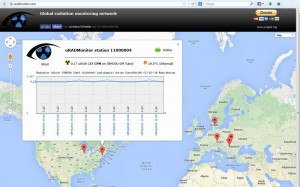
I finally found the perfect case for the Model A. It is a high quality aluminum case, that comes with a nice wall mount.
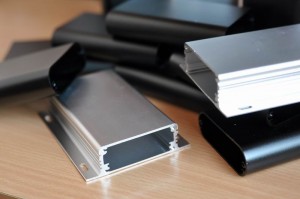
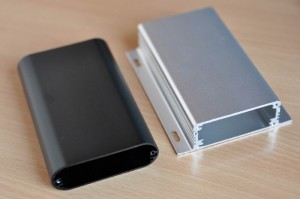
I have the option of adding a rubber gasket to one of the ends, opposite to the one with all the connectors, to make it water proof (if mounted with the connectors down).
I have only a few of these, so before I get a good supplier, I'll need to continue using the black ones.
radhoo, Sat Feb 08 2014, 10:48AM
Tobias, that last unit sure looks great on the map, especially considering the important location it is running at.

I finally found the perfect case for the Model A. It is a high quality aluminum case, that comes with a nice wall mount.


I have the option of adding a rubber gasket to one of the ends, opposite to the one with all the connectors, to make it water proof (if mounted with the connectors down).
I have only a few of these, so before I get a good supplier, I'll need to continue using the black ones.
Re: Global Radiation monitoring system
radhoo, Sun Feb 16 2014, 10:09PM
The finished wall mount case variant:
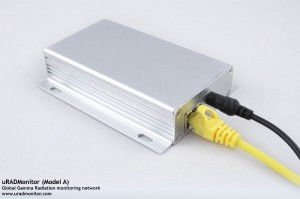
More photos on here.
For sale:
For those interested in installing a radiation monitor to keep an eye on the readings at any given location (very much like the nodes on ) , I finally have a few extra Model A units that I can sell.
) , I finally have a few extra Model A units that I can sell.
2 units currently available, more to be completed soon. PM me if interested! These are completely handmade, hope to have machine made (pcb+case) units soon, but they do come with charger, cables and the unit itself, encased in the nice rugged aluminium enclosure.
radhoo, Sun Feb 16 2014, 10:09PM
The finished wall mount case variant:

More photos on here.
For sale:
For those interested in installing a radiation monitor to keep an eye on the readings at any given location (very much like the nodes on
 ) , I finally have a few extra Model A units that I can sell.
) , I finally have a few extra Model A units that I can sell. 2 units currently available, more to be completed soon. PM me if interested! These are completely handmade, hope to have machine made (pcb+case) units soon, but they do come with charger, cables and the unit itself, encased in the nice rugged aluminium enclosure.
Re: Global Radiation monitoring system
Shrad, Mon Feb 17 2014, 09:12AM
if you want to be able to plot data over a map, you have to have your data stored in a fully fledged database system (I guess this is the case already)
once you have a fully functional machine built unit, it would also be a nice thing to develop a dedicated website so you have full control over what is done
for data acquisition, if you have a TCP stack, I advise you to develop a web-service approach like SOAP or any format you can choose so that it complies with what is foreseen with the IoT (internet of things), like how to publish and consume data in this field of application
Shrad, Mon Feb 17 2014, 09:12AM
if you want to be able to plot data over a map, you have to have your data stored in a fully fledged database system (I guess this is the case already)
once you have a fully functional machine built unit, it would also be a nice thing to develop a dedicated website so you have full control over what is done
for data acquisition, if you have a TCP stack, I advise you to develop a web-service approach like SOAP or any format you can choose so that it complies with what is foreseen with the IoT (internet of things), like how to publish and consume data in this field of application
Re: Global Radiation monitoring system
radhoo, Mon Feb 17 2014, 03:28PM
Hi Shrad, thanks for your feedback (also the one you've sent on PM) . Most of what you are saying here is already in place, see . The website runs on a dedicated server, both maintaining a (large) database but also building charts. Later SMS / email notifications.
. The website runs on a dedicated server, both maintaining a (large) database but also building charts. Later SMS / email notifications.
There a lot more work to be done. Thanks to the community support and my personal funding, I was able to get this far. If I find a way to get it on Kickstarter, we would probably see this happen sooner.
radhoo, Mon Feb 17 2014, 03:28PM
Hi Shrad, thanks for your feedback (also the one you've sent on PM) . Most of what you are saying here is already in place, see
 . The website runs on a dedicated server, both maintaining a (large) database but also building charts. Later SMS / email notifications.
. The website runs on a dedicated server, both maintaining a (large) database but also building charts. Later SMS / email notifications.There a lot more work to be done. Thanks to the community support and my personal funding, I was able to get this far. If I find a way to get it on Kickstarter, we would probably see this happen sooner.
Re: Global Radiation monitoring system
Shrad, Mon Feb 17 2014, 09:25PM
did you get a look at kisskissbankbank? I guess there are other community fundings out there
Shrad, Mon Feb 17 2014, 09:25PM
did you get a look at kisskissbankbank? I guess there are other community fundings out there
Re: Global Radiation monitoring system
radhoo, Sat Feb 22 2014, 06:12PM
I'll have a look on that as well.
Meanwhile here are a few more units, newly made, and just calibrated. Should anyone be needing one, let me know.
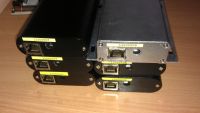
radhoo, Sat Feb 22 2014, 06:12PM
I'll have a look on that as well.
Meanwhile here are a few more units, newly made, and just calibrated. Should anyone be needing one, let me know.

Re: Global Radiation monitoring system
radhoo, Wed Feb 26 2014, 08:56PM
A new uRADmonitor unit, 120000A, has become operational today, in Arad, Romania.
Before sending this unit out, it was carefully calibrated and verified against another unit. The background radiation level at my location in Timisoara, Romania where the tests were performed, was 0.11uSv/h.
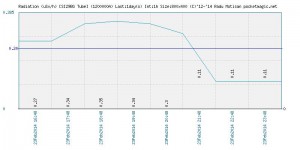
(The first part of the chart corresponds to the exposure to the Thorite, as part of the calibration process, but the background radiation level can be seen to the right, where the Thorite sample was removed).
As the unit arrived at its destination, in Arad, Romania, I was surprised to see the live data shows a perceptible increase in radiation levels:
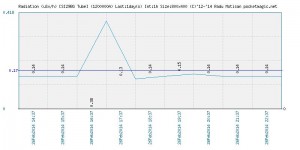
Complete details and measurements here .
Arad is only 50km to the North from Timisoara. All stations and live data can be seen here: http://www.uradmonitor.com. Thoughts on this?
radhoo, Wed Feb 26 2014, 08:56PM
A new uRADmonitor unit, 120000A, has become operational today, in Arad, Romania.
Before sending this unit out, it was carefully calibrated and verified against another unit. The background radiation level at my location in Timisoara, Romania where the tests were performed, was 0.11uSv/h.

(The first part of the chart corresponds to the exposure to the Thorite, as part of the calibration process, but the background radiation level can be seen to the right, where the Thorite sample was removed).
As the unit arrived at its destination, in Arad, Romania, I was surprised to see the live data shows a perceptible increase in radiation levels:

Complete details and measurements here .
Arad is only 50km to the North from Timisoara. All stations and live data can be seen here: http://www.uradmonitor.com. Thoughts on this?
Re: Global Radiation monitoring system
Shrad, Wed Feb 26 2014, 09:08PM
wouldn't it be interesting to know if the area is over a geologic split? if so, wouldn't continuous radon emission affect background radiation while going unnoticed?
Shrad, Wed Feb 26 2014, 09:08PM
wouldn't it be interesting to know if the area is over a geologic split? if so, wouldn't continuous radon emission affect background radiation while going unnoticed?
Re: Global Radiation monitoring system
radhoo, Tue Mar 11 2014, 09:15PM
@Shrad, I'd say those would impact the measurements as well, but had little time to check that info. Before sending the units out I do the final adjustments part of the calibration process. Usually I get a figure of 0.12uSv/h here, and it's a nice surprise to discover all the naturally occurring variations at the destination. And here is another example:
The second unit running on German soil has become operational today, in Augsburg, Germany. There's a report on it on my blog at:
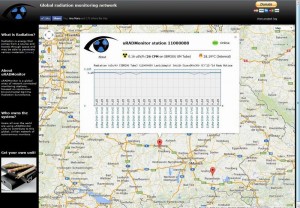
It currently measures an average of 0.15uSv/h, relatively higher then the other units currently in the network. Before sending it out, the calibration tests performed on the 11000008 in Timisoara gave results closer to the 0.12uSv/h figure, smaller then what it gets now. Also the Augsburg natural radiation background level seems to be higher than the one measured at only 100km to the South-East in Schechen, Germany, by the uRADMonitor station 12000008:
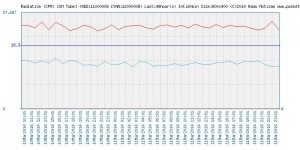
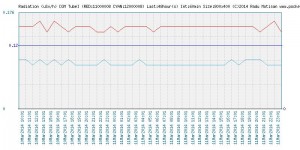
The 11000008 in Augsburg averages 0.15uSv/h for the last 24 hours, while the 1200008 in Schechen only reaches 0.13uSv/h . The real time data is available here.
radhoo, Tue Mar 11 2014, 09:15PM
@Shrad, I'd say those would impact the measurements as well, but had little time to check that info. Before sending the units out I do the final adjustments part of the calibration process. Usually I get a figure of 0.12uSv/h here, and it's a nice surprise to discover all the naturally occurring variations at the destination. And here is another example:
The second unit running on German soil has become operational today, in Augsburg, Germany. There's a report on it on my blog at:


It currently measures an average of 0.15uSv/h, relatively higher then the other units currently in the network. Before sending it out, the calibration tests performed on the 11000008 in Timisoara gave results closer to the 0.12uSv/h figure, smaller then what it gets now. Also the Augsburg natural radiation background level seems to be higher than the one measured at only 100km to the South-East in Schechen, Germany, by the uRADMonitor station 12000008:


The 11000008 in Augsburg averages 0.15uSv/h for the last 24 hours, while the 1200008 in Schechen only reaches 0.13uSv/h . The real time data is available here.
Re: Global Radiation monitoring system
radhoo, Tue Mar 11 2014, 10:02PM
And here are a few pics showing the 1200000A running in parallel with the expensive Gamma Scout dosimeter. The results measured by the 1200000A , currently at 0.14uSv/h, are in good concordance to the values displayed by the Gamma Scout:
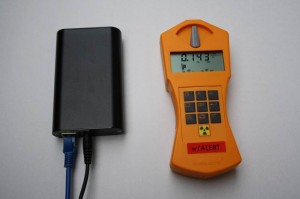
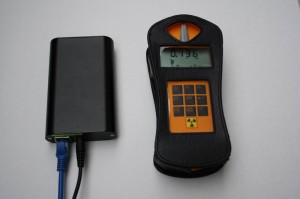
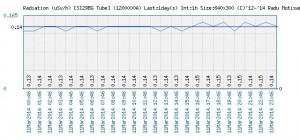
This uRADMonitor unit has been calibrated in Timisoara, showing only 0.12uSV/h for the background radiation, yet at the place of destination, in Arad, it was able to measure the radiation correctly , and in good concordance with the Gamma Scout dosimeter: 0.14uSv/h
radhoo, Tue Mar 11 2014, 10:02PM
And here are a few pics showing the 1200000A running in parallel with the expensive Gamma Scout dosimeter. The results measured by the 1200000A , currently at 0.14uSv/h, are in good concordance to the values displayed by the Gamma Scout:



This uRADMonitor unit has been calibrated in Timisoara, showing only 0.12uSV/h for the background radiation, yet at the place of destination, in Arad, it was able to measure the radiation correctly , and in good concordance with the Gamma Scout dosimeter: 0.14uSv/h
Re: Global Radiation monitoring system
tobias, Wed Mar 12 2014, 12:45AM
Can it be mounting/positioning differences?
tobias, Wed Mar 12 2014, 12:45AM
Can it be mounting/positioning differences?
Re: Global Radiation monitoring system
Shrad, Wed Mar 12 2014, 09:39AM
atmospheric pressure? I don't think so as it would vary over time
altitude? maybe
gravity? field?
Shrad, Wed Mar 12 2014, 09:39AM
atmospheric pressure? I don't think so as it would vary over time
altitude? maybe
gravity? field?
Re: Global Radiation monitoring system
radhoo, Thu Mar 20 2014, 07:10PM
Unit #11000006 went online today, in Washington, USA.
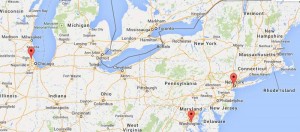
Proud Mary, ready to receive your unit? The idea is I am planning to give out a free unit (including the shipping cost covered), for one of my forum colleagues that lives in the UK, and the first to come to my mind was Stella.
radhoo, Thu Mar 20 2014, 07:10PM
Unit #11000006 went online today, in Washington, USA.

Proud Mary, ready to receive your unit? The idea is I am planning to give out a free unit (including the shipping cost covered), for one of my forum colleagues that lives in the UK, and the first to come to my mind was Stella.
Re: Global Radiation monitoring system
Chris Russell, Mon Apr 14 2014, 08:23PM
Just wanted to say that I've been following this for a while, and I'm looking forward to watching it progress. Hopefully someday I'll be able to get a monitor of my own set up!
Chris Russell, Mon Apr 14 2014, 08:23PM
Just wanted to say that I've been following this for a while, and I'm looking forward to watching it progress. Hopefully someday I'll be able to get a monitor of my own set up!
Re: Global Radiation monitoring system
Mads Barnkob, Mon Apr 14 2014, 08:34PM
As in my own case, I would say as Stella suggested, soil composition and building materials may account for the difference.
Mads Barnkob, Mon Apr 14 2014, 08:34PM
Shrad wrote ...
atmospheric pressure? I don't think so as it would vary over time
altitude? maybe
gravity? field?
atmospheric pressure? I don't think so as it would vary over time
altitude? maybe
gravity? field?
tobias wrote ...
Can it be mounting/positioning differences?
Can it be mounting/positioning differences?
As in my own case, I would say as Stella suggested, soil composition and building materials may account for the difference.
Re: Global Radiation monitoring system
radhoo, Wed Apr 23 2014, 02:46PM
I found a Chinese manufacturer to do the PCB works (including soldering) and another for the aluminium enclosures (including engraving, cutting, etc) . Anyone has any experience with manufacturing processes ?
What I am looking for is a way to assemble everything together in one place, to save on moving the devices around too much. Calibration and writing the software will then be made at my end, no automated process for that yet. Having all these manufacturers taking what I previously did by hand, I expect to be able to offer some very competitive prices when entering the market.
radhoo, Wed Apr 23 2014, 02:46PM
I found a Chinese manufacturer to do the PCB works (including soldering) and another for the aluminium enclosures (including engraving, cutting, etc) . Anyone has any experience with manufacturing processes ?
What I am looking for is a way to assemble everything together in one place, to save on moving the devices around too much. Calibration and writing the software will then be made at my end, no automated process for that yet. Having all these manufacturers taking what I previously did by hand, I expect to be able to offer some very competitive prices when entering the market.
Re: Global Radiation monitoring system
Steve Conner, Wed Apr 23 2014, 04:03PM
I've designed dozens of industrial electronic gizmos and taken them through to factory production. It has been a 10 year learning experience and I could probably write a book about it. For starters, read Bunnie Huang's "Factory Floor" series about dealing with Chinese contract manufacturers.
Steve Conner, Wed Apr 23 2014, 04:03PM
I've designed dozens of industrial electronic gizmos and taken them through to factory production. It has been a 10 year learning experience and I could probably write a book about it. For starters, read Bunnie Huang's "Factory Floor" series about dealing with Chinese contract manufacturers.

Re: Global Radiation monitoring system
Steve Conner, Thu Apr 24 2014, 03:15PM
PS: Turns out Bunnie has already made a Geiger counter!

Steve Conner, Thu Apr 24 2014, 03:15PM
PS: Turns out Bunnie has already made a Geiger counter!


Re: Global Radiation monitoring system
radhoo, Sun May 11 2014, 05:31PM
Thanks Steve, that's a good read indeed. Where I am now, I'll try to do the most with the limited resources I have. I want to see this project happening, even if that will cost me a few mistakes down the road.
radhoo, Sun May 11 2014, 05:31PM
Thanks Steve, that's a good read indeed. Where I am now, I'll try to do the most with the limited resources I have. I want to see this project happening, even if that will cost me a few mistakes down the road.
Re: Global Radiation monitoring system
tobias, Tue May 13 2014, 11:57PM
Any ideas for what happened at Denmark?

That is a nice looking spike right there!
[EDIT] It is a live graph! Change interval if looking after May 14th.
tobias, Tue May 13 2014, 11:57PM
Any ideas for what happened at Denmark?

That is a nice looking spike right there!
[EDIT] It is a live graph! Change interval if looking after May 14th.
Re: Global Radiation monitoring system
Mads Barnkob, Wed May 14 2014, 05:52AM
Hey Tobias
It is my unit, it is one of the first units and it have a few flaws that are being worked on, it was shutting itself down software wise because of too high temperature and the measurements are most likely the result of short measuring intervals just after restarting or when it was overheated.
I have taken it offline now to have it upgraded :)
Mads Barnkob, Wed May 14 2014, 05:52AM
tobias wrote ...
Any ideas for what happened at Denmark?

That is a nice looking spike right there!
[EDIT] It is a live graph! Change interval if looking after May 14th.
Any ideas for what happened at Denmark?

That is a nice looking spike right there!
[EDIT] It is a live graph! Change interval if looking after May 14th.
Hey Tobias
It is my unit, it is one of the first units and it have a few flaws that are being worked on, it was shutting itself down software wise because of too high temperature and the measurements are most likely the result of short measuring intervals just after restarting or when it was overheated.
I have taken it offline now to have it upgraded :)
Re: Global Radiation monitoring system
radhoo, Thu Jun 12 2014, 09:15AM
I've settled for LCTech for now, you probably know the many modules available on ebay. As Steve pointed out, communication goes slowly because of language and other differences. Nevertheless progress has been made. I will also go for an indiegogo campaign soon.
I still have a few of the later prototype units, if anyone is interested.
radhoo, Thu Jun 12 2014, 09:15AM
I've settled for LCTech for now, you probably know the many modules available on ebay. As Steve pointed out, communication goes slowly because of language and other differences. Nevertheless progress has been made. I will also go for an indiegogo campaign soon.
I still have a few of the later prototype units, if anyone is interested.
Re: Global Radiation monitoring system
radhoo, Fri Jun 27 2014, 08:28PM
The Chinese manufacturer I've been discussing with from March has finally signed an NDA, I found a positive mail in my mailbox today, and so I am ready to start the long and difficult process of discussing the PCB details and have them made and assembled in China, to hopefully reduce costs and be able to provide a decent number of detectors. For the aluminium rugged cases, things are already in place.
I've migrated the centralised radiation portal to wordpress, I find it better looking, but I'd love to know you're opinion too. Any suggestions are welcome.
See it here:
There is also the blog section, were I plan to post short news, give it a read, there are already 3 posts there:
Attached is a pic with the devices that are ready to ship next.

radhoo, Fri Jun 27 2014, 08:28PM
The Chinese manufacturer I've been discussing with from March has finally signed an NDA, I found a positive mail in my mailbox today, and so I am ready to start the long and difficult process of discussing the PCB details and have them made and assembled in China, to hopefully reduce costs and be able to provide a decent number of detectors. For the aluminium rugged cases, things are already in place.
I've migrated the centralised radiation portal to wordpress, I find it better looking, but I'd love to know you're opinion too. Any suggestions are welcome.
See it here:

There is also the blog section, were I plan to post short news, give it a read, there are already 3 posts there:

Attached is a pic with the devices that are ready to ship next.

Re: Global Radiation monitoring system
radhoo, Sun Jun 29 2014, 11:39AM
Just joined the hackaday.io competition. Winning it or at least exposing the project there, would help push the development further, and expanding the network:
Counting on your support, it only takes seconds to vote and we all get to benefit from having this network up and running.
radhoo, Sun Jun 29 2014, 11:39AM
Just joined the hackaday.io competition. Winning it or at least exposing the project there, would help push the development further, and expanding the network:

Counting on your support, it only takes seconds to vote and we all get to benefit from having this network up and running.
Re: Global Radiation monitoring system
Mads Barnkob, Sun Jun 29 2014, 01:17PM
Good luck with the competition.
I signed up and voted, true it is easy with hackadays new project site, almost web 3.0 :)
I made a separate thread about some measurements made with the uRadMonitor doing a thunder storm that shows elevated radiation, the possible causes is to be discussed there:
Mads Barnkob, Sun Jun 29 2014, 01:17PM
radhoo wrote ...
Just joined the hackaday.io competition. Winning it or at least exposing the project there, would help push the development further, and expanding the network:
Counting on your support, it only takes seconds to vote and we all get to benefit from having this network up and running.
Just joined the hackaday.io competition. Winning it or at least exposing the project there, would help push the development further, and expanding the network:

Counting on your support, it only takes seconds to vote and we all get to benefit from having this network up and running.
Good luck with the competition.
I signed up and voted, true it is easy with hackadays new project site, almost web 3.0 :)
I made a separate thread about some measurements made with the uRadMonitor doing a thunder storm that shows elevated radiation, the possible causes is to be discussed there:

Re: Global Radiation monitoring system
Sigurthr, Sun Jun 29 2014, 10:58PM
I'm glad to hear you finally worked things out with the chinese manufacturers! I wonder how much that will drop the cost for one of these. I've been wanting one for a long time.
I've got an old RS-232 Black Cat Systems GM-45 that I bought for a couple dollars off the GCE list years ago that needed some repairs (internals are now repaired but it is missing a housing and the pancake detector is very fragile). I fixed it up but I don't own any computers with RS232 ports, haha! I had intended to design a DC-DC converter and USB-RS232 interface to power it and hook it up to a modern pc, but it just seemed like too much work for how busy I am these days.
Sigurthr, Sun Jun 29 2014, 10:58PM
I'm glad to hear you finally worked things out with the chinese manufacturers! I wonder how much that will drop the cost for one of these. I've been wanting one for a long time.
I've got an old RS-232 Black Cat Systems GM-45 that I bought for a couple dollars off the GCE list years ago that needed some repairs (internals are now repaired but it is missing a housing and the pancake detector is very fragile). I fixed it up but I don't own any computers with RS232 ports, haha! I had intended to design a DC-DC converter and USB-RS232 interface to power it and hook it up to a modern pc, but it just seemed like too much work for how busy I am these days.
Re: Global Radiation monitoring system
radhoo, Thu Jul 10 2014, 09:19AM
I got to collect a few skulls, which is good and I'm looking forward to hit the 100 threshold, I think it is then when they give the "skullmaster" label, useful for some extra visibility.

From my last post here, a new unit went online in Prague, and 4 more are on their way to various locations on the globe. As usual, the data is available on: http://www.uradmonitor.com
For the Prague unit, here's a comparison with the data recorded at my location, before sending the unit over:
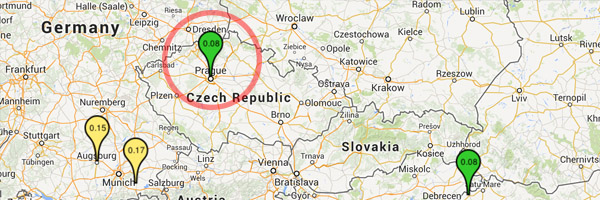
The first unit in the United Kingdom went online today. The network is expanding fast, for global coverage! More on:
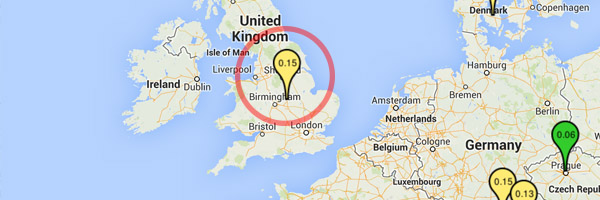
radhoo, Thu Jul 10 2014, 09:19AM
Mads Barnkob wrote ...
Good luck with the competition.
I signed up and voted, true it is easy with hackadays new project site, almost web 3.0 :)
Thanks Mads, I only wish they had facebook/g+ auth as well. Good luck with the competition.
I signed up and voted, true it is easy with hackadays new project site, almost web 3.0 :)
I got to collect a few skulls, which is good and I'm looking forward to hit the 100 threshold, I think it is then when they give the "skullmaster" label, useful for some extra visibility.
Sigurthr wrote ...
I'm glad to hear you finally worked things out with the chinese manufacturers! I wonder how much that will drop the cost for one of these. I've been wanting one for a long time.
I've got an old RS-232 Black Cat Systems GM-45 that I bought for a couple dollars off the GCE list years ago that needed some repairs (internals are now repaired but it is missing a housing and the pancake detector is very fragile). I fixed it up but I don't own any computers with RS232 ports, haha! I had intended to design a DC-DC converter and USB-RS232 interface to power it and hook it up to a modern pc, but it just seemed like too much work for how busy I am these days.
Hi Sigurthr, hopefully the PCBs they'll make will work good. I've designed the 6th revision of the Model A PCB. It certainly doesn't make much sense to spend time in doing complicated adapters. Not when there are so nice alternatives I'm glad to hear you finally worked things out with the chinese manufacturers! I wonder how much that will drop the cost for one of these. I've been wanting one for a long time.
I've got an old RS-232 Black Cat Systems GM-45 that I bought for a couple dollars off the GCE list years ago that needed some repairs (internals are now repaired but it is missing a housing and the pancake detector is very fragile). I fixed it up but I don't own any computers with RS232 ports, haha! I had intended to design a DC-DC converter and USB-RS232 interface to power it and hook it up to a modern pc, but it just seemed like too much work for how busy I am these days.

From my last post here, a new unit went online in Prague, and 4 more are on their way to various locations on the globe. As usual, the data is available on: http://www.uradmonitor.com
For the Prague unit, here's a comparison with the data recorded at my location, before sending the unit over:


The first unit in the United Kingdom went online today. The network is expanding fast, for global coverage! More on:


Re: Global Radiation monitoring system
radhoo, Wed Jul 16 2014, 12:33AM
It’s been a long road getting here with this project, a road paved with constant innovation. And it’s a longer road ahead.
The first uRADMonitor was a crude prototype, with jumping wires on a test board, it got its own PCB soon. The following models were a new design, more compact using the smaller SBM-20 and SI-29BG tubes, with several improvements. There were many details to change and to improve, and experimenting with compact high voltage inverters, Geiger tubes and discriminating/counting circuits for the last two years, surely brought a lot of progress for the benefit of this ongoing project.
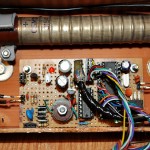
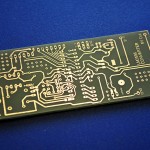
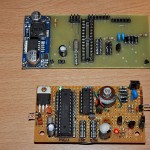
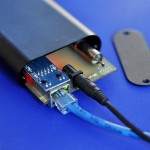
Following the last 5 monitors sent to various corners of the world, a new batch has been prepared. And while waiting to finalise the discussions with several Chinese factories, this batch has been manually developed. Here are a few pictures and explanations, showing the tedious process of building a uRADMonitor unit. It all starts with a shiny piece of PCB carefully cleaned and polished to remove any grease and dust:
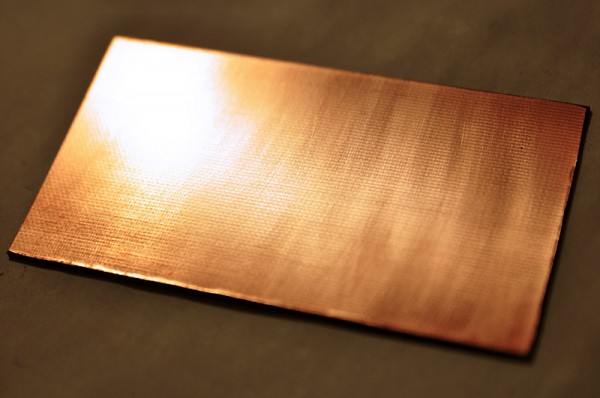
We then print the PCB layout designed using a computer software, and etch the PCB using a corrosive agent. If we are lucky we get clean nice traces:
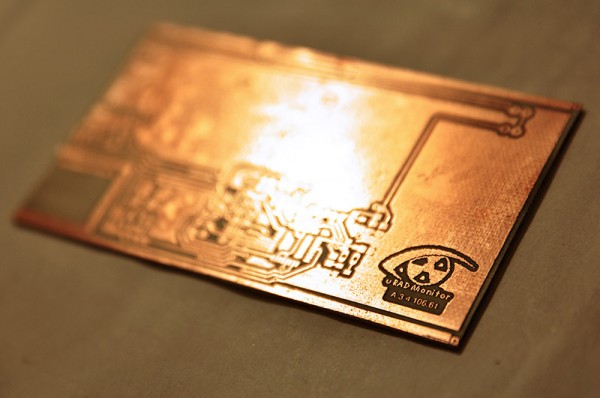
To be able to mount the components, a few carefully aligned holes must be drilled. We use a tiny drill.
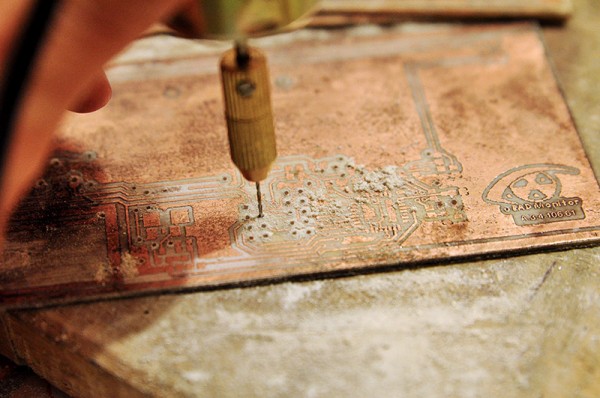
The Ethernet module is mounted as an addon to our PCB, so we need to make some space for it.
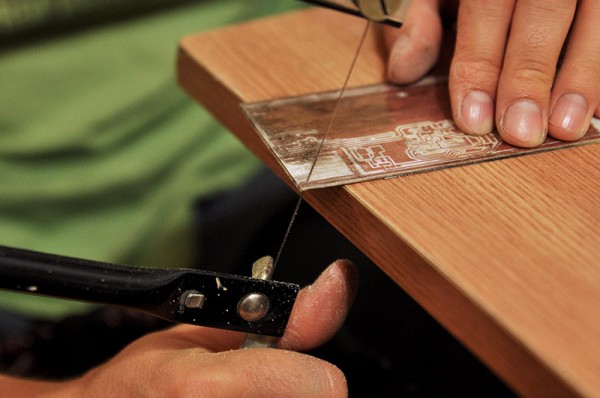
Next, we’re ready to start soldering the components. But they are so small, barely visible to the naked eye. Tweezers prove handy. The process is slow and requires a steady hand and attention:
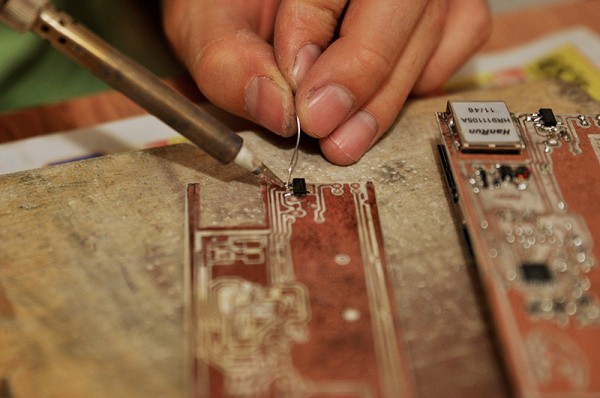
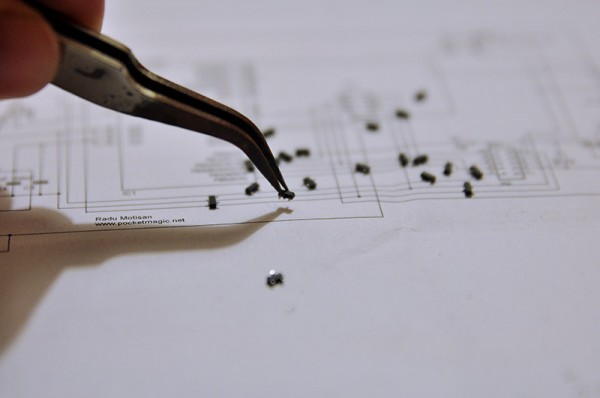
After a few hours, the board is ready. The Geiger tube is added last because it is fragile.
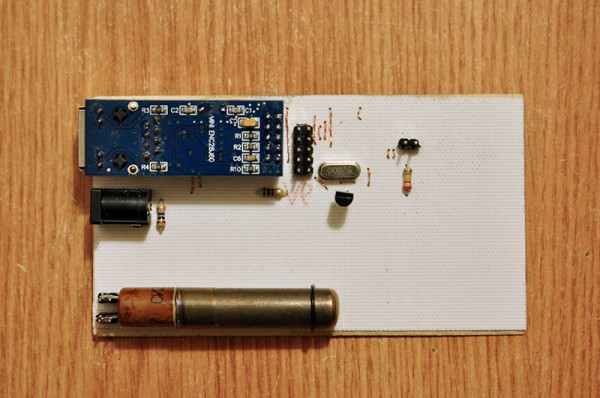
And we’re still far from being done. The aluminium enclosure requires working with power tools, cutting, drilling and smoothing the edges.
Then the software must be written into the microcontroller, and the calibration tests can be performed. This takes close to another full day of tests and tweaking.
But this is all for today. The next batch of devices is almost done, for their approaching departure to distant locations all over the Globe.
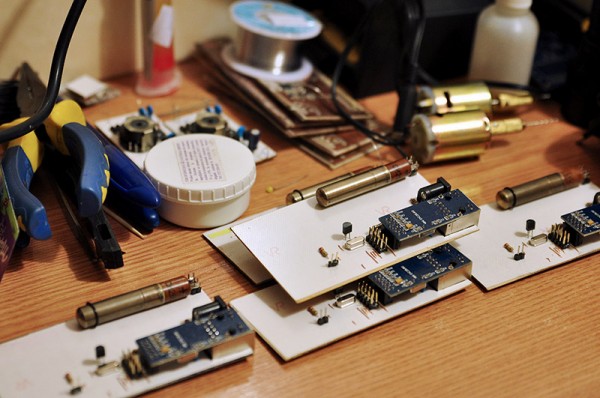
radhoo, Wed Jul 16 2014, 12:33AM
It’s been a long road getting here with this project, a road paved with constant innovation. And it’s a longer road ahead.
The first uRADMonitor was a crude prototype, with jumping wires on a test board, it got its own PCB soon. The following models were a new design, more compact using the smaller SBM-20 and SI-29BG tubes, with several improvements. There were many details to change and to improve, and experimenting with compact high voltage inverters, Geiger tubes and discriminating/counting circuits for the last two years, surely brought a lot of progress for the benefit of this ongoing project.




Following the last 5 monitors sent to various corners of the world, a new batch has been prepared. And while waiting to finalise the discussions with several Chinese factories, this batch has been manually developed. Here are a few pictures and explanations, showing the tedious process of building a uRADMonitor unit. It all starts with a shiny piece of PCB carefully cleaned and polished to remove any grease and dust:

We then print the PCB layout designed using a computer software, and etch the PCB using a corrosive agent. If we are lucky we get clean nice traces:

To be able to mount the components, a few carefully aligned holes must be drilled. We use a tiny drill.

The Ethernet module is mounted as an addon to our PCB, so we need to make some space for it.

Next, we’re ready to start soldering the components. But they are so small, barely visible to the naked eye. Tweezers prove handy. The process is slow and requires a steady hand and attention:


After a few hours, the board is ready. The Geiger tube is added last because it is fragile.

And we’re still far from being done. The aluminium enclosure requires working with power tools, cutting, drilling and smoothing the edges.
Then the software must be written into the microcontroller, and the calibration tests can be performed. This takes close to another full day of tests and tweaking.
But this is all for today. The next batch of devices is almost done, for their approaching departure to distant locations all over the Globe.

Re: Global Radiation monitoring system
Sigurthr, Wed Jul 16 2014, 01:04AM
Wow, I didn't realize you were still hand fab'ing every board! I assumed the chinese deals were to work out pick-and-place and wave soldering of CNC'd pre-fab'ed PCBs (which I assumed you were already using!). Drilling out every single uRad board... dedication!
Sigurthr, Wed Jul 16 2014, 01:04AM
Wow, I didn't realize you were still hand fab'ing every board! I assumed the chinese deals were to work out pick-and-place and wave soldering of CNC'd pre-fab'ed PCBs (which I assumed you were already using!). Drilling out every single uRad board... dedication!
Re: Global Radiation monitoring system
radhoo, Wed Jul 16 2014, 06:41AM
Yes, I couldn't say it better myself. And multiply that to 10, the number of units in the last batch. But the deal with the Chinese is going OK, I'll be placing the order next week, so things should simplify.
radhoo, Wed Jul 16 2014, 06:41AM
Yes, I couldn't say it better myself. And multiply that to 10, the number of units in the last batch. But the deal with the Chinese is going OK, I'll be placing the order next week, so things should simplify.
Re: Global Radiation monitoring system
radhoo, Fri Jul 18 2014, 12:50PM
A new uRADMonitor unit went online in Arizona, US. There are some strange cyclic readings there:
Too early for any assumptions but maybe someone here has an idea.

radhoo, Fri Jul 18 2014, 12:50PM
A new uRADMonitor unit went online in Arizona, US. There are some strange cyclic readings there:

Too early for any assumptions but maybe someone here has an idea.

Re: Global Radiation monitoring system
radhoo, Sat Jul 19 2014, 11:50AM
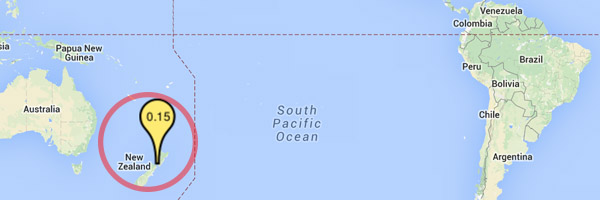
uRADMonitor unit 11000007, got to its final destination, after a long journey. The unit is now up and running from New Zealand. Live data on the web portal as usual:
radhoo, Sat Jul 19 2014, 11:50AM

uRADMonitor unit 11000007, got to its final destination, after a long journey. The unit is now up and running from New Zealand. Live data on the web portal as usual:

Re: Global Radiation monitoring system
radhoo, Sun Jul 27 2014, 10:55PM
One extra unit currently available on ebay for something close to its BOM cost (only the components + shipping). Wasted a day on making it, but I'm trying to expand the network before anything else:
radhoo, Sun Jul 27 2014, 10:55PM
One extra unit currently available on ebay for something close to its BOM cost (only the components + shipping). Wasted a day on making it, but I'm trying to expand the network before anything else:

Re: Global Radiation monitoring system
Artlav, Mon Jul 28 2014, 04:00PM
Interesting.
Wouldn't mind setting a few around Moscow, and maybe one in Montenegro.
However, i'm surprised by the price.
What is the most expensive part of the build?
I can't quite see anything in it that would add up to about $100.
Anyway, a dump of ideas:
-Make it wireless.
-Make it self-powered.
Power:
Get a box of small, overcast-friendly solar panels, i.e.
Put a li-po battery inside.
Wireless:
Not sure how much power or complexity a WiFi device would require.
If it does not fit the power budget, then there is an alternative - cheap and simple RF modules.
Split the device in two:
-One part is the sensor, with solar cell, battery and geiger counter.
-The other is the ethernet port.
Then, get a box of RFM12B modules -
Put one into the sensor part, and the other into the ethernet part.
This way, the sensor part goes, untethered, anywhere you want (within range of few 100 meters), and the receiver end plugs into regular ethernet.
Much cheaper then Wifi.
Power consumption:
Active consumption of RFM12B+Atmega328 i got is about 10mA, for a device constantly looking for input.
So, a 300mAh lipo can last a day at continuous broadcast.
Or many, many days with interrupt-driven design of some sort - i.e. wire the geiger counter into an interrupt on atmega, store data locally and only transmit occasionally (RFM12B have a shutdown pin).
In later case you will only need to care about standby currents and the inverter. Probably sub-mA range.
Easily solar powered, anywhere.
On solar+battery power system:
I've used these panels and one li-po cell before, described here (solar panel->step-up->charger->3.3V regulator) -
This book saw daily use, and never ran out of power, despite a lack of any sort of power plug.
Data storage:
FRAM chip, same as in the above book. Non-volatile, does not consume much power.
Store a few hours worth of data, then fire up the radio module and download.
All in all, i think this would be much, much more user and install-friendly when split into two parts as described.
Also, go for micro/minuUSB socket for power - these are standard, and anyone can/will have a compatible phone charger for nothing, while a special plug adapter is less common.
Artlav, Mon Jul 28 2014, 04:00PM
Interesting.
Wouldn't mind setting a few around Moscow, and maybe one in Montenegro.
However, i'm surprised by the price.
What is the most expensive part of the build?
I can't quite see anything in it that would add up to about $100.
Anyway, a dump of ideas:
-Make it wireless.
-Make it self-powered.
Power:
Get a box of small, overcast-friendly solar panels, i.e.

Put a li-po battery inside.
Wireless:
Not sure how much power or complexity a WiFi device would require.
If it does not fit the power budget, then there is an alternative - cheap and simple RF modules.
Split the device in two:
-One part is the sensor, with solar cell, battery and geiger counter.
-The other is the ethernet port.
Then, get a box of RFM12B modules -

Put one into the sensor part, and the other into the ethernet part.
This way, the sensor part goes, untethered, anywhere you want (within range of few 100 meters), and the receiver end plugs into regular ethernet.
Much cheaper then Wifi.
Power consumption:
Active consumption of RFM12B+Atmega328 i got is about 10mA, for a device constantly looking for input.
So, a 300mAh lipo can last a day at continuous broadcast.
Or many, many days with interrupt-driven design of some sort - i.e. wire the geiger counter into an interrupt on atmega, store data locally and only transmit occasionally (RFM12B have a shutdown pin).
In later case you will only need to care about standby currents and the inverter. Probably sub-mA range.
Easily solar powered, anywhere.
On solar+battery power system:
I've used these panels and one li-po cell before, described here (solar panel->step-up->charger->3.3V regulator) -

This book saw daily use, and never ran out of power, despite a lack of any sort of power plug.
Data storage:
FRAM chip, same as in the above book. Non-volatile, does not consume much power.
Store a few hours worth of data, then fire up the radio module and download.
All in all, i think this would be much, much more user and install-friendly when split into two parts as described.
Also, go for micro/minuUSB socket for power - these are standard, and anyone can/will have a compatible phone charger for nothing, while a special plug adapter is less common.
Re: Global Radiation monitoring system
radhoo, Tue Jul 29 2014, 05:52PM
Hi Artlav, thanks for your feedback.
If you need to get a unit, you can read more here:
To make it wireless, I already have in plan a future revision, that I call "Model C". Besides wifi , it will feature an LCD, buttons for user input, flash memory, gps for linking measurements to exact position, a rechargeable lipo battery and a software mechanism to synchronise offline data automatically when the unit gets back to a wlan area and Internet is available. Not easy and the complexity will be reflected in its price.
The Model A (current uRADMonitor variant), can be powered by a solar power, or by a solar power with a little buffer (rechargeable battery) . For this model, there are options to make it connect to a wireless network, as presented in this article:
Keep the good ideas coming!
Some news:
The first uRADMonitor unit in Japan registers unexpectedly low background radiation levels:
radhoo, Tue Jul 29 2014, 05:52PM
Hi Artlav, thanks for your feedback.
If you need to get a unit, you can read more here:

To make it wireless, I already have in plan a future revision, that I call "Model C". Besides wifi , it will feature an LCD, buttons for user input, flash memory, gps for linking measurements to exact position, a rechargeable lipo battery and a software mechanism to synchronise offline data automatically when the unit gets back to a wlan area and Internet is available. Not easy and the complexity will be reflected in its price.
The Model A (current uRADMonitor variant), can be powered by a solar power, or by a solar power with a little buffer (rechargeable battery) . For this model, there are options to make it connect to a wireless network, as presented in this article:

Keep the good ideas coming!
Some news:
The first uRADMonitor unit in Japan registers unexpectedly low background radiation levels:

Re: Global Radiation monitoring system
radhoo, Thu Jul 31 2014, 10:11PM
Most of you here are probably already aware of the network of autonomous low power radiation monitors, uRADMonitor - presented in this long project log. Besides these attributes, the units are small, low weighted, running on a direct Internet connection, so you don't need a computer to upload data.
Also one of the important characteristics is the detectors use the same tubes, checked against a common reference. So the numbers resulting from all the measurements you see on the world map, can be compared to others in the network. The CPMs get to have a good meaning, but also the absorbed dose approximation, that can be compared to indications of other units commercially available.
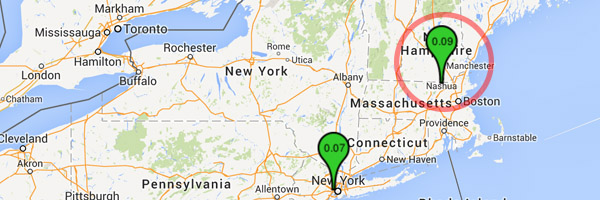
The uRADMonitor network is constantly expanding and a new unit went online in Massachusetts.
Here are the initial and the current values registered by this unit:
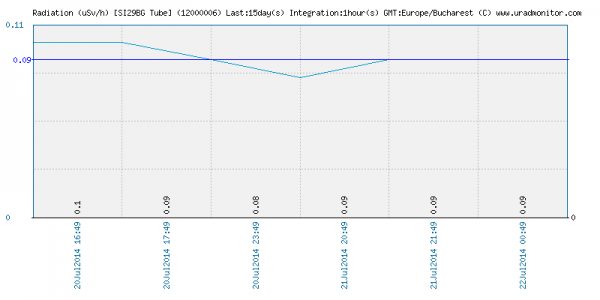
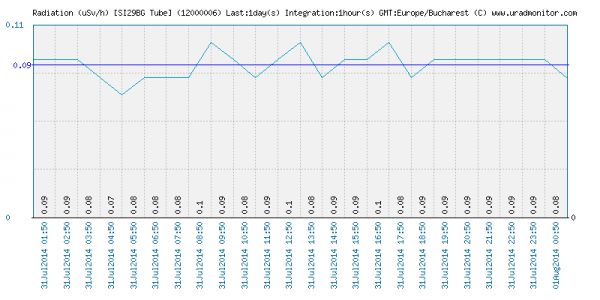
And the nice constant voltage on tube:
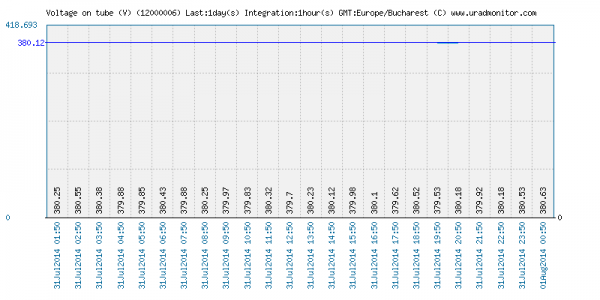
For those interested in getting a unit, there's one currently listed on Ebay for a very low price, or you can get a unit here. Your interest and support for this project is highly appreciated, after all this is an ongoing effort resulting in the first global civilian radiation surveillance network, an accomplishment for the benefit of us all.
You can also show your support by spreading the work (here's the facebook page), or by voting (hit the skull icon) the uRADMonitor entry on the hackaday.io contest.
radhoo, Thu Jul 31 2014, 10:11PM
Most of you here are probably already aware of the network of autonomous low power radiation monitors, uRADMonitor - presented in this long project log. Besides these attributes, the units are small, low weighted, running on a direct Internet connection, so you don't need a computer to upload data.
Also one of the important characteristics is the detectors use the same tubes, checked against a common reference. So the numbers resulting from all the measurements you see on the world map, can be compared to others in the network. The CPMs get to have a good meaning, but also the absorbed dose approximation, that can be compared to indications of other units commercially available.

The uRADMonitor network is constantly expanding and a new unit went online in Massachusetts.
Here are the initial and the current values registered by this unit:


And the nice constant voltage on tube:

For those interested in getting a unit, there's one currently listed on Ebay for a very low price, or you can get a unit here. Your interest and support for this project is highly appreciated, after all this is an ongoing effort resulting in the first global civilian radiation surveillance network, an accomplishment for the benefit of us all.
You can also show your support by spreading the work (here's the facebook page), or by voting (hit the skull icon) the uRADMonitor entry on the hackaday.io contest.
Re: Global Radiation monitoring system
radhoo, Sat Aug 02 2014, 03:24PM
Moving from manually built prototypes to an industrial production line, is a huge step especially for a project in an incipient phase, like uRADMonitor. Yet, with strong determination, obstacles melt away, opening the path for the first civilian environmental surveillance network, available to everyone, at anytime, to offer real time data on radiation level trends all around the Globe.
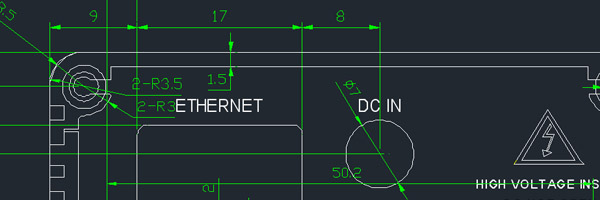
One of the important characteristics is the detectors use the same tubes, checked against a common reference. So the numbers resulting from all the measurements you see on the world map, can be compared to others in the network. The levels measured in CPMs get to have a good meaning, but also the absorbed dose approximation, that can be compared to indications of other units commercially available. But more on this later.
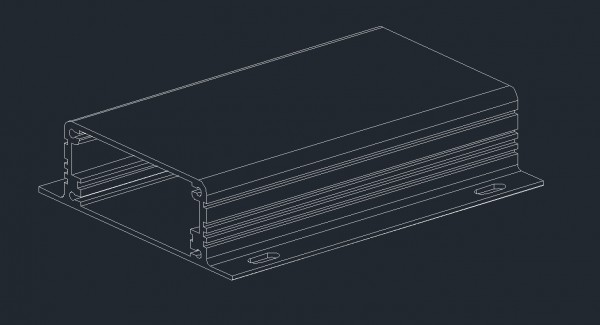
To read more on the project status access this link:
Remember to support the project by voting its entry in the Hackaday.io competition or by visiting the FB page.
radhoo, Sat Aug 02 2014, 03:24PM
Moving from manually built prototypes to an industrial production line, is a huge step especially for a project in an incipient phase, like uRADMonitor. Yet, with strong determination, obstacles melt away, opening the path for the first civilian environmental surveillance network, available to everyone, at anytime, to offer real time data on radiation level trends all around the Globe.

One of the important characteristics is the detectors use the same tubes, checked against a common reference. So the numbers resulting from all the measurements you see on the world map, can be compared to others in the network. The levels measured in CPMs get to have a good meaning, but also the absorbed dose approximation, that can be compared to indications of other units commercially available. But more on this later.

To read more on the project status access this link:

Remember to support the project by voting its entry in the Hackaday.io competition or by visiting the FB page.
Re: Global Radiation monitoring system
radhoo, Mon Aug 04 2014, 07:48AM
Exciting times for this project, each day brings something new from the Chinese factories building the first PRO uRADMonitor units. Here are the rubber gaskets that will make the enclosures rainproof:
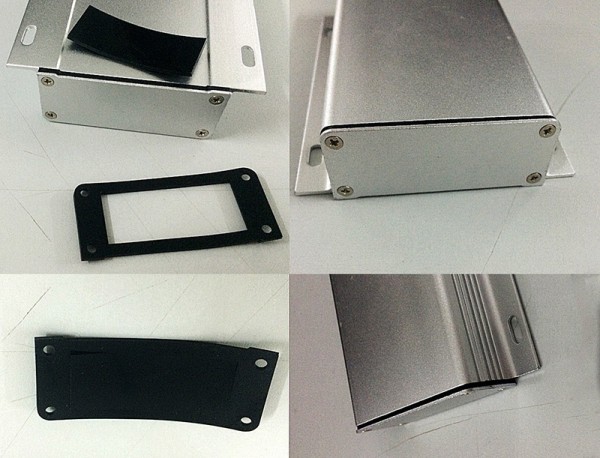
More here:
radhoo, Mon Aug 04 2014, 07:48AM
Exciting times for this project, each day brings something new from the Chinese factories building the first PRO uRADMonitor units. Here are the rubber gaskets that will make the enclosures rainproof:

More here:

Re: Global Radiation monitoring system
tobias, Mon Aug 04 2014, 10:34AM
Are you going to use waterproof connectors?
If yes, which type?
tobias, Mon Aug 04 2014, 10:34AM
Are you going to use waterproof connectors?
If yes, which type?
Re: Global Radiation monitoring system
radhoo, Tue Aug 05 2014, 07:12PM
Not yet. For now the case will be rainproof, with the same requirement of mounting it with the connectors at the bottom. I feel it is too complicated to waterproof the connectors in this stage of the project, and brings little gain.
A new revision, model A2 is now available. It will go in parallel to the previous model A, but in limited numbers. It replaces the internal DS18B20 sensor with the BMP180, to keep an eye on the barometric pressure as well.
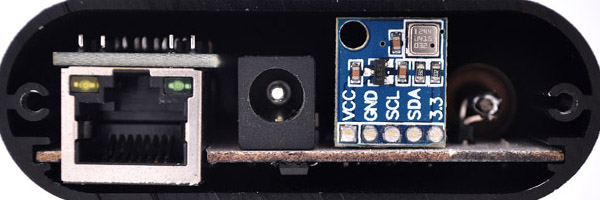
More pictures here.
radhoo, Tue Aug 05 2014, 07:12PM
Not yet. For now the case will be rainproof, with the same requirement of mounting it with the connectors at the bottom. I feel it is too complicated to waterproof the connectors in this stage of the project, and brings little gain.
A new revision, model A2 is now available. It will go in parallel to the previous model A, but in limited numbers. It replaces the internal DS18B20 sensor with the BMP180, to keep an eye on the barometric pressure as well.

More pictures here.
Re: Global Radiation monitoring system
radhoo, Fri Aug 08 2014, 11:57AM
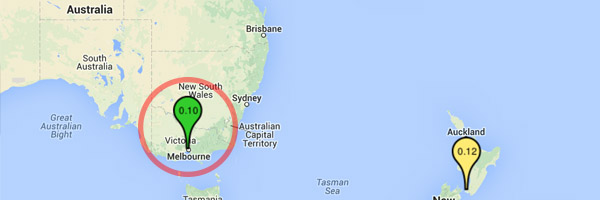
Australia is now on the uRADMonitor radiation map, with the first station there:
radhoo, Fri Aug 08 2014, 11:57AM

Australia is now on the uRADMonitor radiation map, with the first station there:

Re: Global Radiation monitoring system
radhoo, Tue Aug 12 2014, 11:12PM
First batch of PCBs being produced in China:
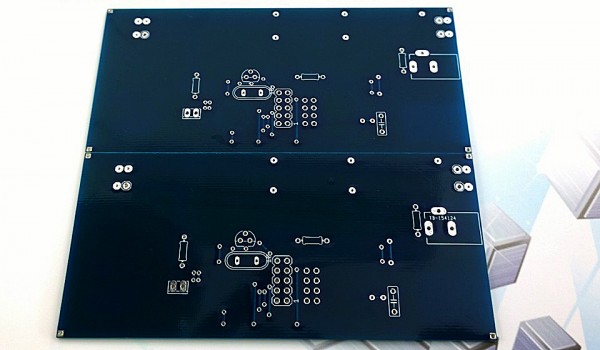
radhoo, Tue Aug 12 2014, 11:12PM
First batch of PCBs being produced in China:

Re: Global Radiation monitoring system
radhoo, Tue Aug 19 2014, 09:30PM
To comply with the requirements of the HackAday.io “send me to space†competition, I’ve made a short video as an introduction to the uRADMonitor project.
The video presents only a few succinct details, but for more information you can read the additional articles on the uRADMonitor blog. And don’t forget to vote it on HackADay.io (by giving the project a Skull vote) on this link:
radhoo, Tue Aug 19 2014, 09:30PM
To comply with the requirements of the HackAday.io “send me to space†competition, I’ve made a short video as an introduction to the uRADMonitor project.
The video presents only a few succinct details, but for more information you can read the additional articles on the uRADMonitor blog. And don’t forget to vote it on HackADay.io (by giving the project a Skull vote) on this link:

Re: Global Radiation monitoring system
tobias, Tue Aug 19 2014, 10:39PM
Do you have pictures of assembled units based on the professional PCBs?
tobias, Tue Aug 19 2014, 10:39PM
Do you have pictures of assembled units based on the professional PCBs?
Re: Global Radiation monitoring system
radhoo, Wed Aug 20 2014, 09:16AM
They are about to get here . I will post some pics later this week, or the next week, as I get them.
The 7th uRADMonitor detector in the US went online recently and is transmitting from Orlando, Florida. This is one of the newer A2 revision units, that were available in limited quantity a few weeks ago, details on:
radhoo, Wed Aug 20 2014, 09:16AM
They are about to get here . I will post some pics later this week, or the next week, as I get them.
The 7th uRADMonitor detector in the US went online recently and is transmitting from Orlando, Florida. This is one of the newer A2 revision units, that were available in limited quantity a few weeks ago, details on:

Re: Global Radiation monitoring system
radhoo, Thu Aug 21 2014, 09:45AM
Here are some pics with the uRADMonitor aluminium boxes, rainproofed using rubber gaskets:
More details on:
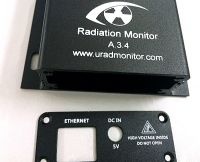
radhoo, Thu Aug 21 2014, 09:45AM
Here are some pics with the uRADMonitor aluminium boxes, rainproofed using rubber gaskets:
More details on:


Re: Global Radiation monitoring system
radhoo, Thu Aug 21 2014, 05:32PM
Second unit in Florida, USA, just went online:

radhoo, Thu Aug 21 2014, 05:32PM
Second unit in Florida, USA, just went online:


Re: Global Radiation monitoring system
Mads Barnkob, Thu Aug 21 2014, 06:39PM
Now it won't be long before there is enough nodes to make that heat map overlay :)
I am happy about your success in the start up and really looking forward to what will happen with much more units available for purchase soon.
Mads Barnkob, Thu Aug 21 2014, 06:39PM
Now it won't be long before there is enough nodes to make that heat map overlay :)
I am happy about your success in the start up and really looking forward to what will happen with much more units available for purchase soon.
Re: Global Radiation monitoring system
radhoo, Sun Aug 24 2014, 10:54PM
Let's hope so, Mads!
This weekend I did some work on the server. Hopefully the portal is now easier to use. Read the details here:
See the results here:
radhoo, Sun Aug 24 2014, 10:54PM
Let's hope so, Mads!
This weekend I did some work on the server. Hopefully the portal is now easier to use. Read the details here:

See the results here:

Re: Global Radiation monitoring system
radhoo, Wed Aug 27 2014, 10:57AM
A picture says more than a thousand words. So be it:

Interested in getting one? Yes, you can: Join the network

radhoo, Wed Aug 27 2014, 10:57AM
A picture says more than a thousand words. So be it:

Interested in getting one? Yes, you can: Join the network

Re: Global Radiation monitoring system
radhoo, Mon Sept 01 2014, 09:02PM
Following months of improvements, tests and verifications, both in hardware and software, the final model A design has been put into production and first batch of test units is now available. These will be used to expand the network even further. The quality of these units is impressive: small in size and optimised for low power consumption, they are ready to keep an eye on the radiation levels as independent radiation monitors.
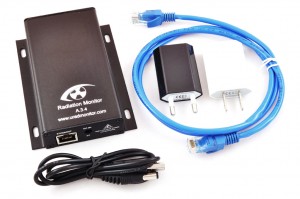
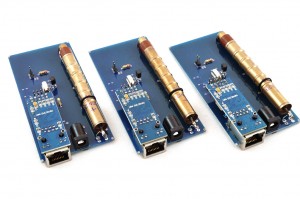
For those interested in getting a unit, drop me a message. There is a minimal cost to cover the cost of components, and the shipping cost. There is also one unit listed on ebay:
radhoo, Mon Sept 01 2014, 09:02PM
Following months of improvements, tests and verifications, both in hardware and software, the final model A design has been put into production and first batch of test units is now available. These will be used to expand the network even further. The quality of these units is impressive: small in size and optimised for low power consumption, they are ready to keep an eye on the radiation levels as independent radiation monitors.


For those interested in getting a unit, drop me a message. There is a minimal cost to cover the cost of components, and the shipping cost. There is also one unit listed on ebay:

Re: Global Radiation monitoring system
Conundrum, Fri Sept 12 2014, 03:24AM
Re. AZ radiation spikes, could it be thunderstorms?
I've seen this first hand as all three of my counters including one in a fridge had numerous synchronous counts when large bolts hit.
Conundrum, Fri Sept 12 2014, 03:24AM
Re. AZ radiation spikes, could it be thunderstorms?
I've seen this first hand as all three of my counters including one in a fridge had numerous synchronous counts when large bolts hit.
Re: Global Radiation monitoring system
Shrad, Mon Sept 15 2014, 10:23AM
radhoo,
I saw there is a project about a large scale cosmic ray detector going on at hackaday,
maybe you should come in contact with the guy and combine efforts, as you already provide most of what he is expecting and had a successful start
I guess that in that domain, collaboration is the key, and you platform could well become a useful and recognized source of data for research programs
I would see a large benefit into contacting universities so that any physics department could purchase one of your devices and participate in the grid data, thus providing a unified effort to increase the covered area
I also think that a PIN diode would make a nice smaller version, and that you could incorporate a radiation spectrometer based on FFT in order to identify isotope families (there is a similar device in Elektor magazine)
Shrad, Mon Sept 15 2014, 10:23AM
radhoo,
I saw there is a project about a large scale cosmic ray detector going on at hackaday,
maybe you should come in contact with the guy and combine efforts, as you already provide most of what he is expecting and had a successful start
I guess that in that domain, collaboration is the key, and you platform could well become a useful and recognized source of data for research programs
I would see a large benefit into contacting universities so that any physics department could purchase one of your devices and participate in the grid data, thus providing a unified effort to increase the covered area
I also think that a PIN diode would make a nice smaller version, and that you could incorporate a radiation spectrometer based on FFT in order to identify isotope families (there is a similar device in Elektor magazine)
Re: Global Radiation monitoring system
radhoo, Fri Nov 07 2014, 11:54PM
Hi Andre & Shrad,
@Andre, now it will be easier to track any variations, with the increasing density of units in the network. The more the better.
@Shard, I had some plans to get in touch with universities, and I still want ot do that. Time is again the only concern: the need to update the webportal, and make it better and more usable is now more pressing. Also the mobile app (Android + iOS) . So many things to do, and need to take them step by step. When I get these in place, I hope to have the time to continue improving the hardware, that is producing the model B, but also doing some research on PIN detectors. I have some nice photodiodes waiting...
edit: also the elektor design was also used for the apoc detectors we've seen on kickstarter a year ago. I'm also planning an indiegogo campaign ( available worldwide, unlike KS)
radhoo, Fri Nov 07 2014, 11:54PM
Hi Andre & Shrad,
@Andre, now it will be easier to track any variations, with the increasing density of units in the network. The more the better.
@Shard, I had some plans to get in touch with universities, and I still want ot do that. Time is again the only concern: the need to update the webportal, and make it better and more usable is now more pressing. Also the mobile app (Android + iOS) . So many things to do, and need to take them step by step. When I get these in place, I hope to have the time to continue improving the hardware, that is producing the model B, but also doing some research on PIN detectors. I have some nice photodiodes waiting...

edit: also the elektor design was also used for the apoc detectors we've seen on kickstarter a year ago. I'm also planning an indiegogo campaign ( available worldwide, unlike KS)
Re: Global Radiation monitoring system
Conundrum, Wed Nov 12 2014, 06:52AM
I sent a message re. possible theory about TGFs causing spurious signals in the counters.
It is possible that under some conditions an otherwise stable tube run near its voltage limit can form a plasma oscillation and show false counts when hit by a TGF.
This normally shows up as ridiculous count rates and can be reliably correlated if multiple tubes all show the same spike; shutting off the voltage for a few seconds normally quenches it.
May be worth adding a "fail safe" that detects the TGF directly using a diode+scintillator (I had an idea about using solar cells from calculators) and this would also provide some data about the origin of the TGF if there were different thicknesses of lead over each of the cells.
Conundrum, Wed Nov 12 2014, 06:52AM
I sent a message re. possible theory about TGFs causing spurious signals in the counters.
It is possible that under some conditions an otherwise stable tube run near its voltage limit can form a plasma oscillation and show false counts when hit by a TGF.
This normally shows up as ridiculous count rates and can be reliably correlated if multiple tubes all show the same spike; shutting off the voltage for a few seconds normally quenches it.
May be worth adding a "fail safe" that detects the TGF directly using a diode+scintillator (I had an idea about using solar cells from calculators) and this would also provide some data about the origin of the TGF if there were different thicknesses of lead over each of the cells.
Re: Global Radiation monitoring system
radhoo, Wed Nov 12 2014, 12:22PM
Hi Andre / all,
Well, the problem in my case was a missing capacitor, the so called "compensation capacitor". I presented all the details here:
So it was a technical issue. Unless of cosmic provenience, I expect to see higher radiation readings as a gradually increasing curve.
On a different topic, 4 new stations went online, and with them the second case of higher natural background radiation, after Česká Čermná has been identified in Helsinki, Finland:
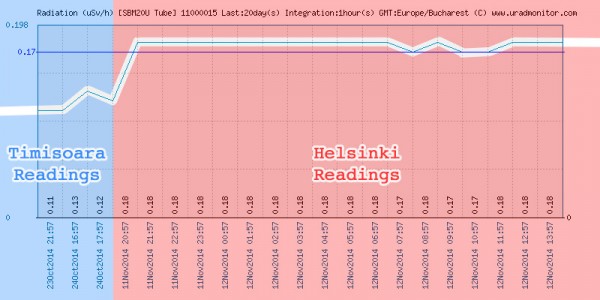
Full article here:
My assumption is we are talking about higher uranium/thorium content in the soil. The network seems to do a good job at pinpointing those. I wonder how long until they will come after me. I also can't help to wonder how bad must it be for people to leave in such areas, where radon concentration must be higher as well.
radhoo, Wed Nov 12 2014, 12:22PM
Hi Andre / all,
Well, the problem in my case was a missing capacitor, the so called "compensation capacitor". I presented all the details here:

So it was a technical issue. Unless of cosmic provenience, I expect to see higher radiation readings as a gradually increasing curve.
On a different topic, 4 new stations went online, and with them the second case of higher natural background radiation, after Česká Čermná has been identified in Helsinki, Finland:

Full article here:

My assumption is we are talking about higher uranium/thorium content in the soil. The network seems to do a good job at pinpointing those. I wonder how long until they will come after me. I also can't help to wonder how bad must it be for people to leave in such areas, where radon concentration must be higher as well.
Re: Global Radiation monitoring system
Mads Barnkob, Wed Nov 12 2014, 04:15PM
I have had two abnormal readings, both happened doing thunder storms, but it does not always happen if there is a thunder storm.
We have discussed on the IRC chat if this is merely electrical field interference or some of the gamma radiation from TGFs make it backwards to earth. Much more instrumentation, battery supply and more monitors in different shielding would be needed to rule one or the other out.
I attached the two graphs.


Mads Barnkob, Wed Nov 12 2014, 04:15PM
I have had two abnormal readings, both happened doing thunder storms, but it does not always happen if there is a thunder storm.
We have discussed on the IRC chat if this is merely electrical field interference or some of the gamma radiation from TGFs make it backwards to earth. Much more instrumentation, battery supply and more monitors in different shielding would be needed to rule one or the other out.
I attached the two graphs.


Re: Global Radiation monitoring system
Shrad, Wed Nov 12 2014, 08:01PM
when thunder strikes occur, isn't there a charge buildup in the area around it which could potentially modify the sensitivity of the tube and/or play with the pulse detection?
would parasitics travel in cables? there are things to sort out with earthing, STP cable instead of UTP, etc... no?
Shrad, Wed Nov 12 2014, 08:01PM
when thunder strikes occur, isn't there a charge buildup in the area around it which could potentially modify the sensitivity of the tube and/or play with the pulse detection?
would parasitics travel in cables? there are things to sort out with earthing, STP cable instead of UTP, etc... no?
Re: Global Radiation monitoring system
Conundrum, Fri Nov 14 2014, 08:53AM
Possible.
I know that Tesla Coils can affect GM counters and have seen this first hand.
Could it be RF interference from a microwave with a cracked door seal? I've had problems like this before with an old MW that reliably nuked the WiFi when on and also strangely enough with a videosender sold as a "SCART rebroadcaster" which even crashed a smartphone when on.
Conundrum, Fri Nov 14 2014, 08:53AM
Possible.
I know that Tesla Coils can affect GM counters and have seen this first hand.
Could it be RF interference from a microwave with a cracked door seal? I've had problems like this before with an old MW that reliably nuked the WiFi when on and also strangely enough with a videosender sold as a "SCART rebroadcaster" which even crashed a smartphone when on.
Print this page